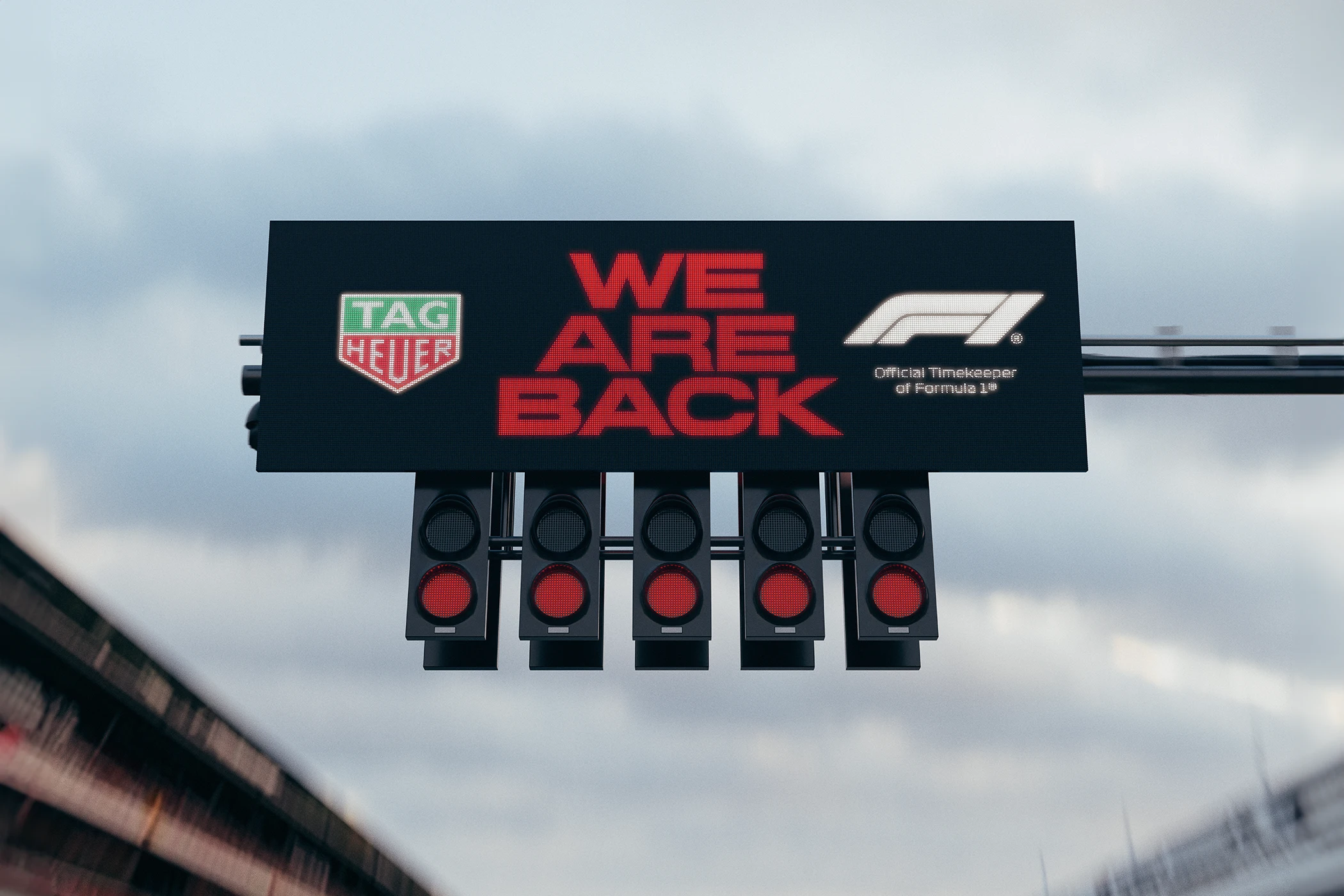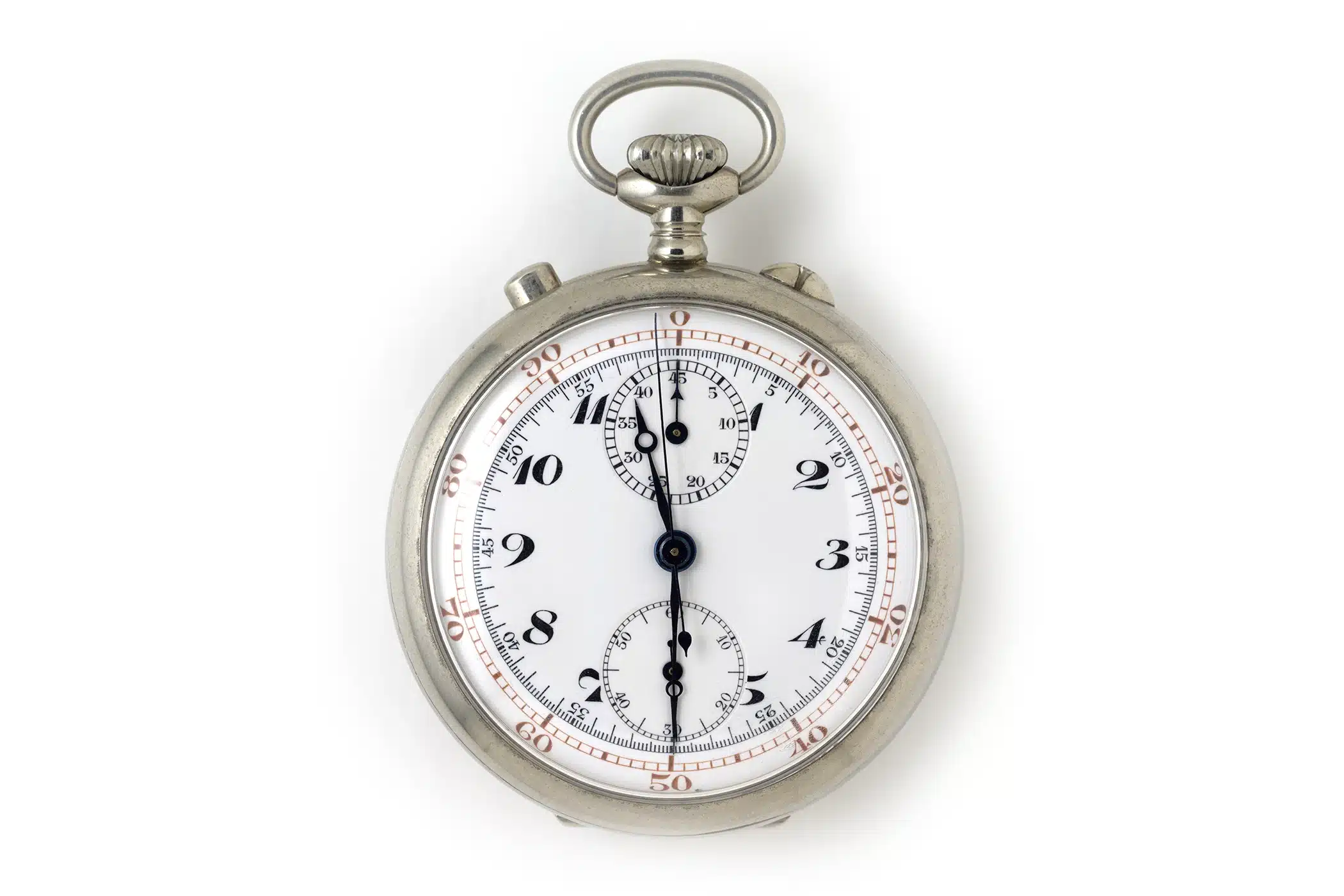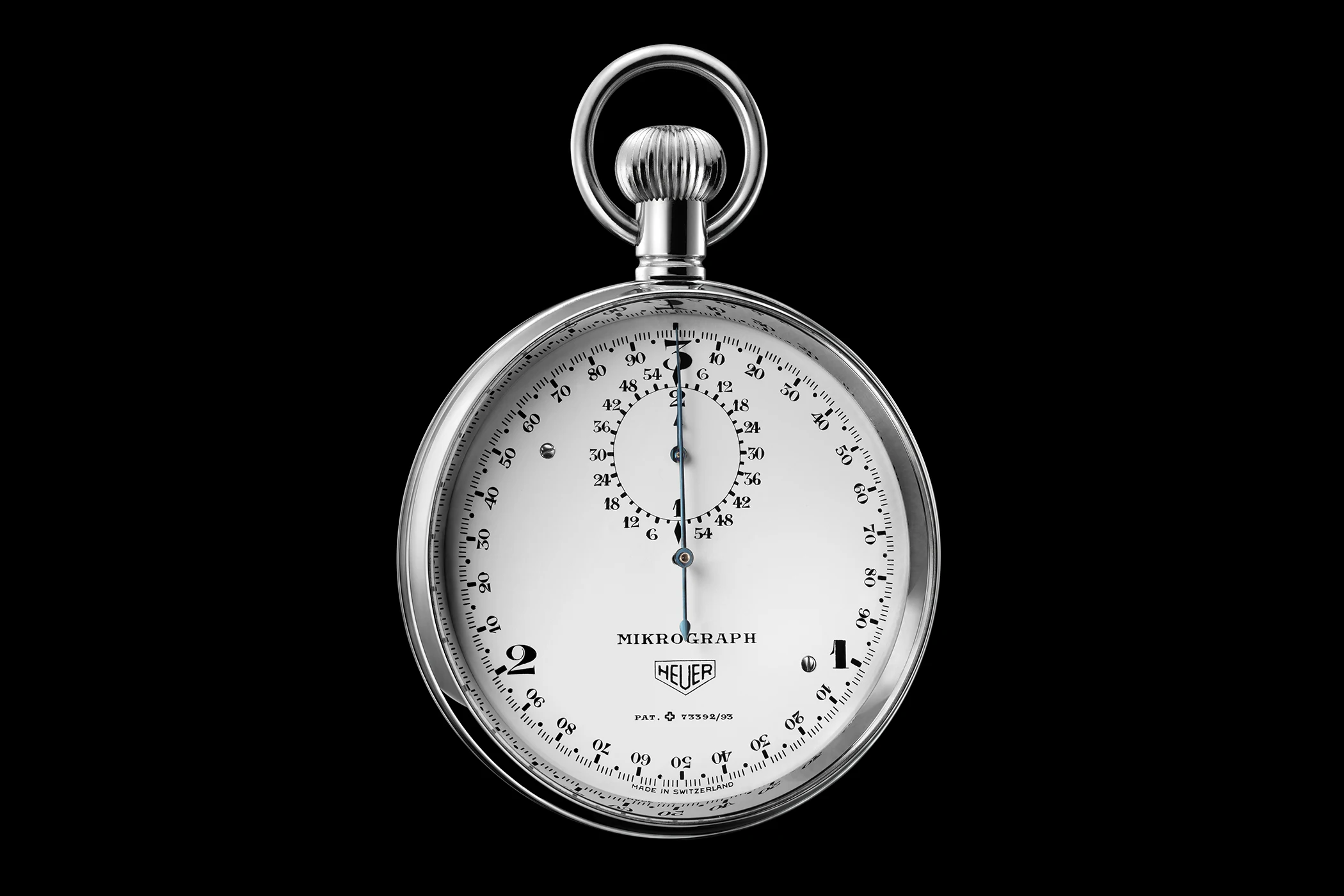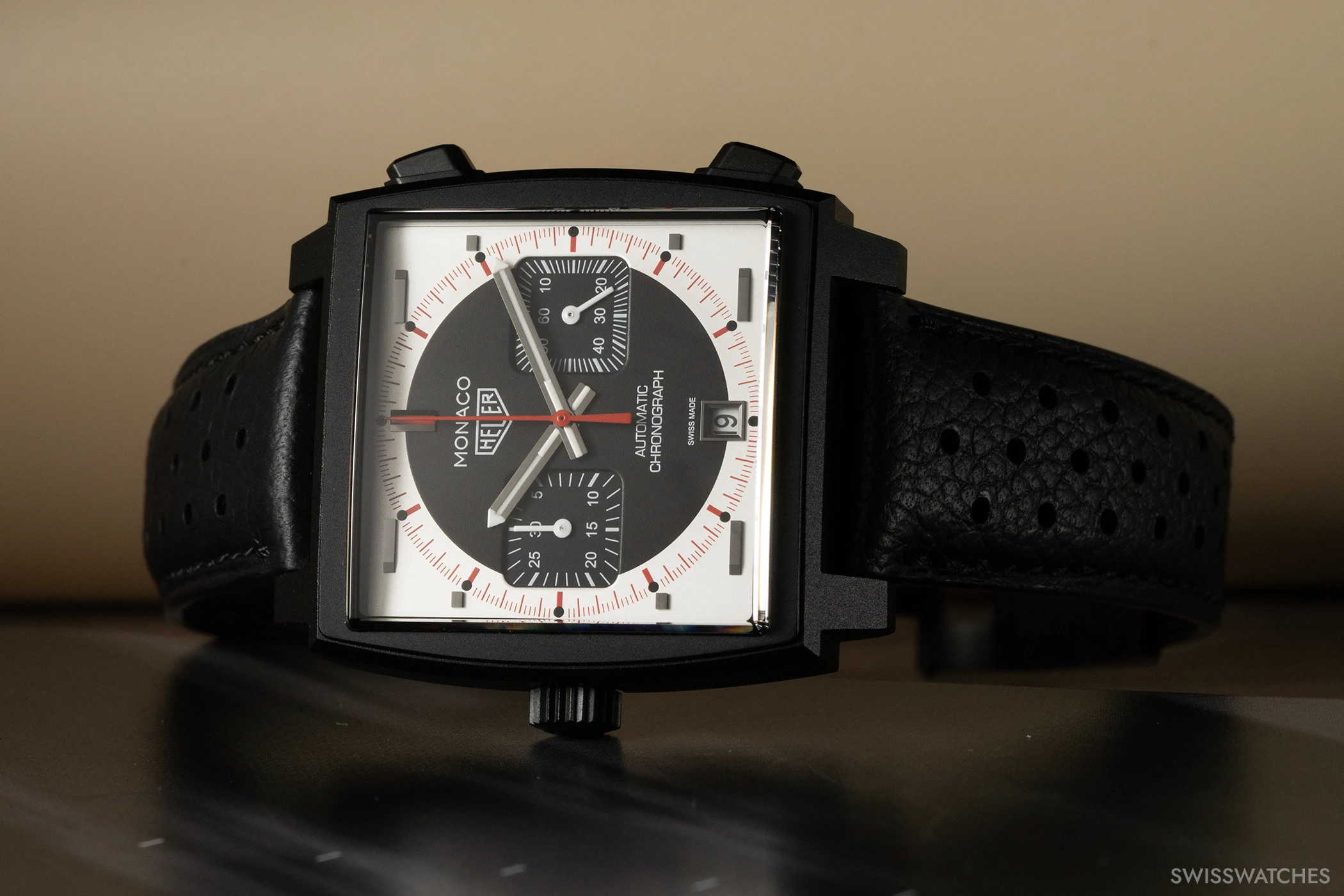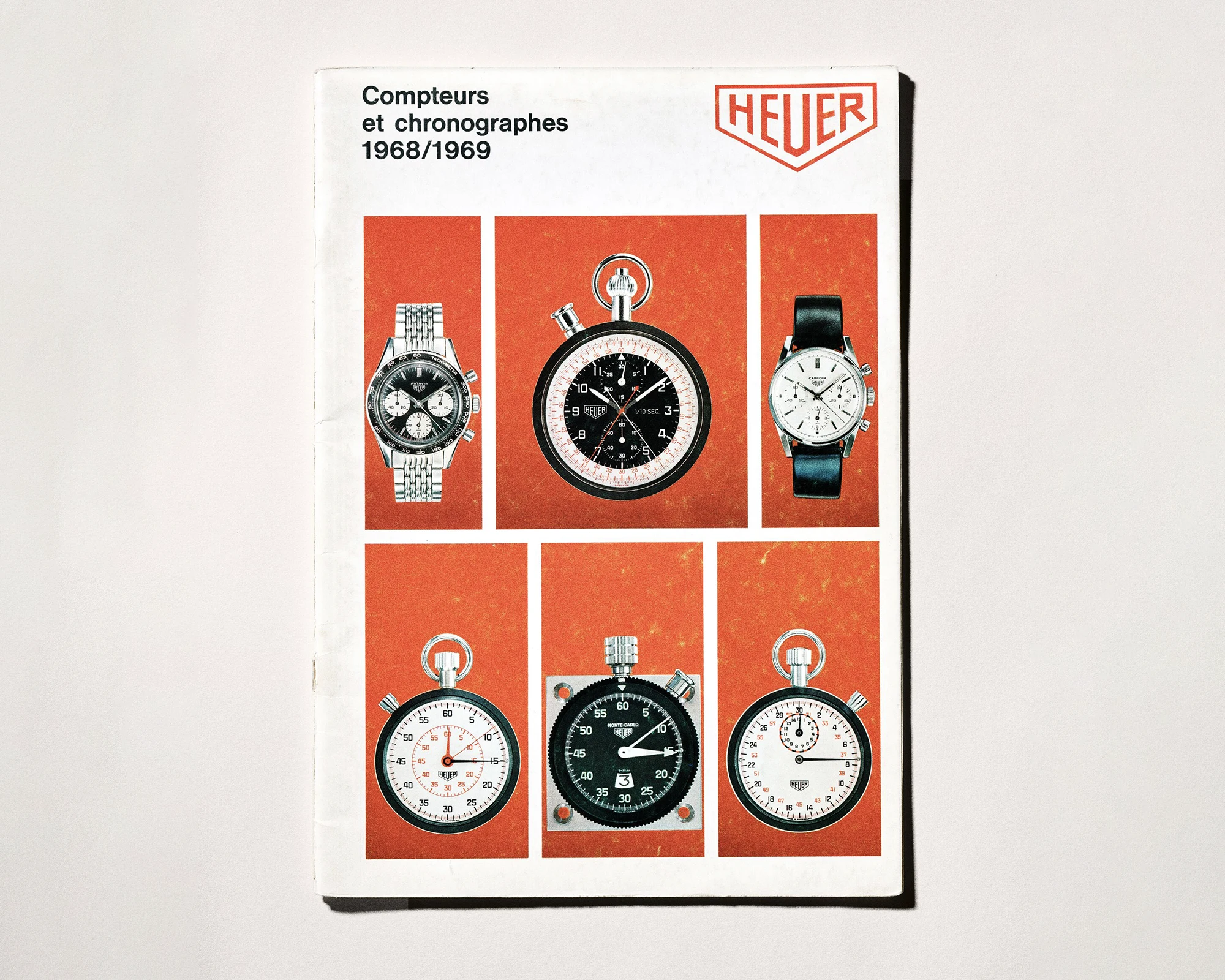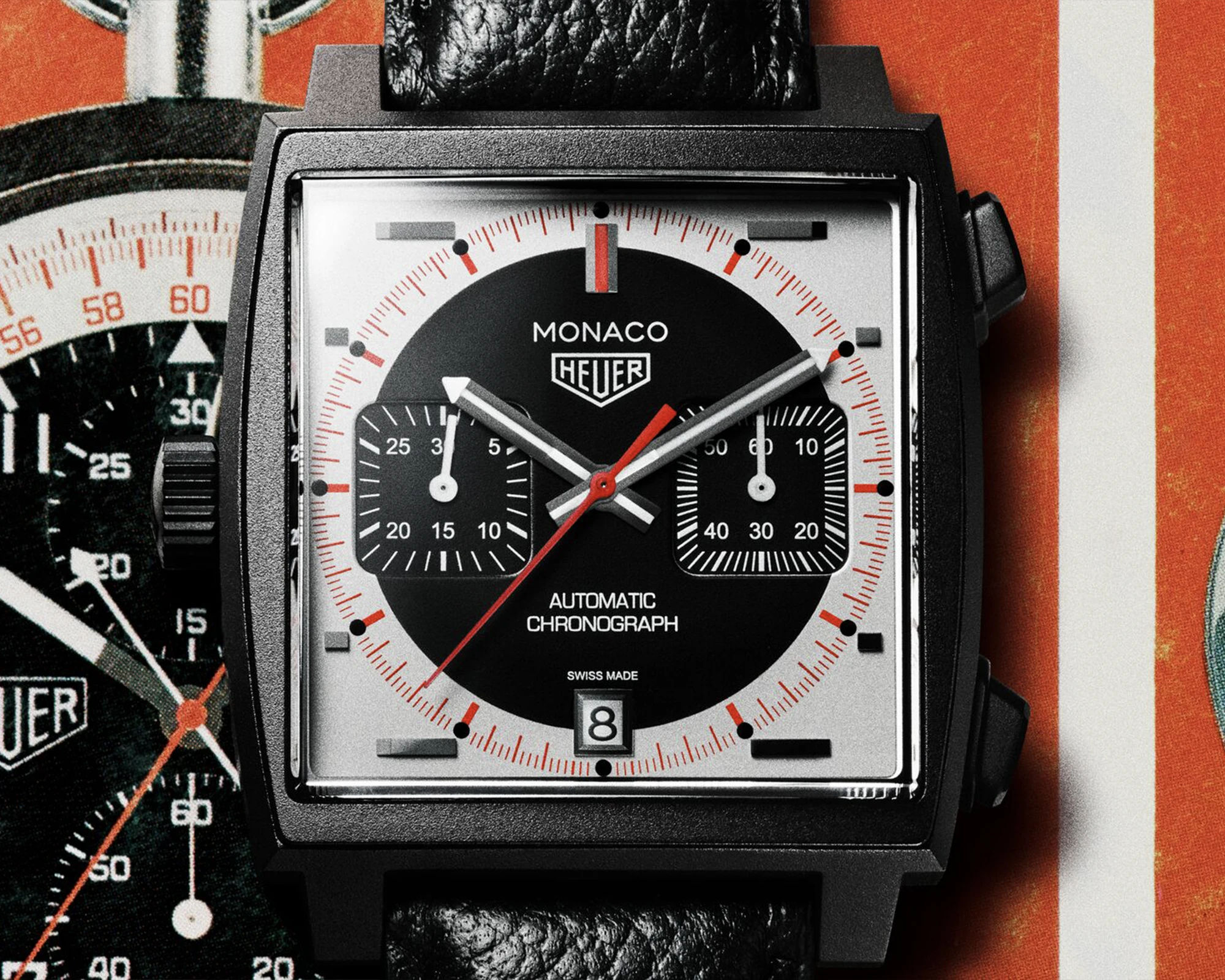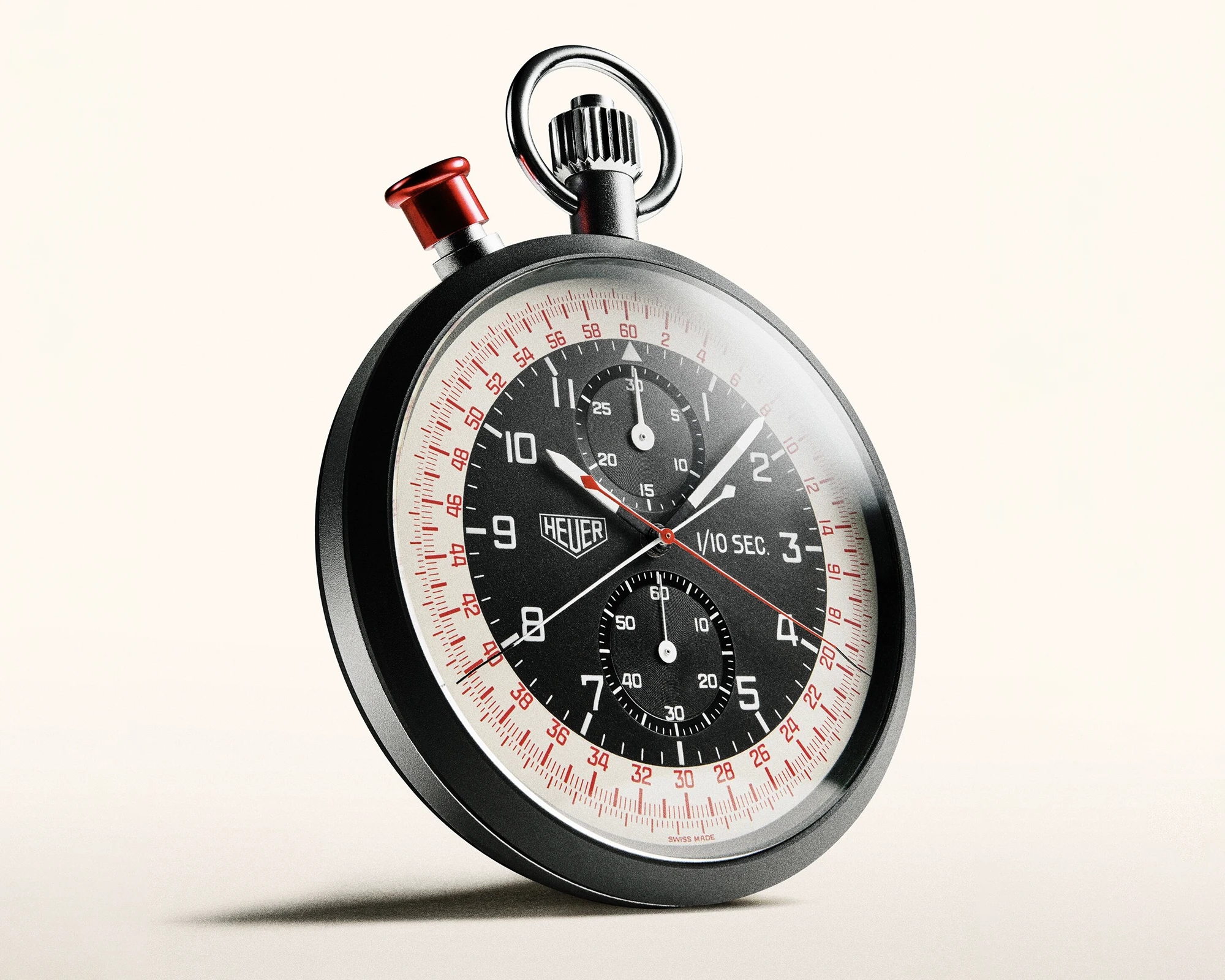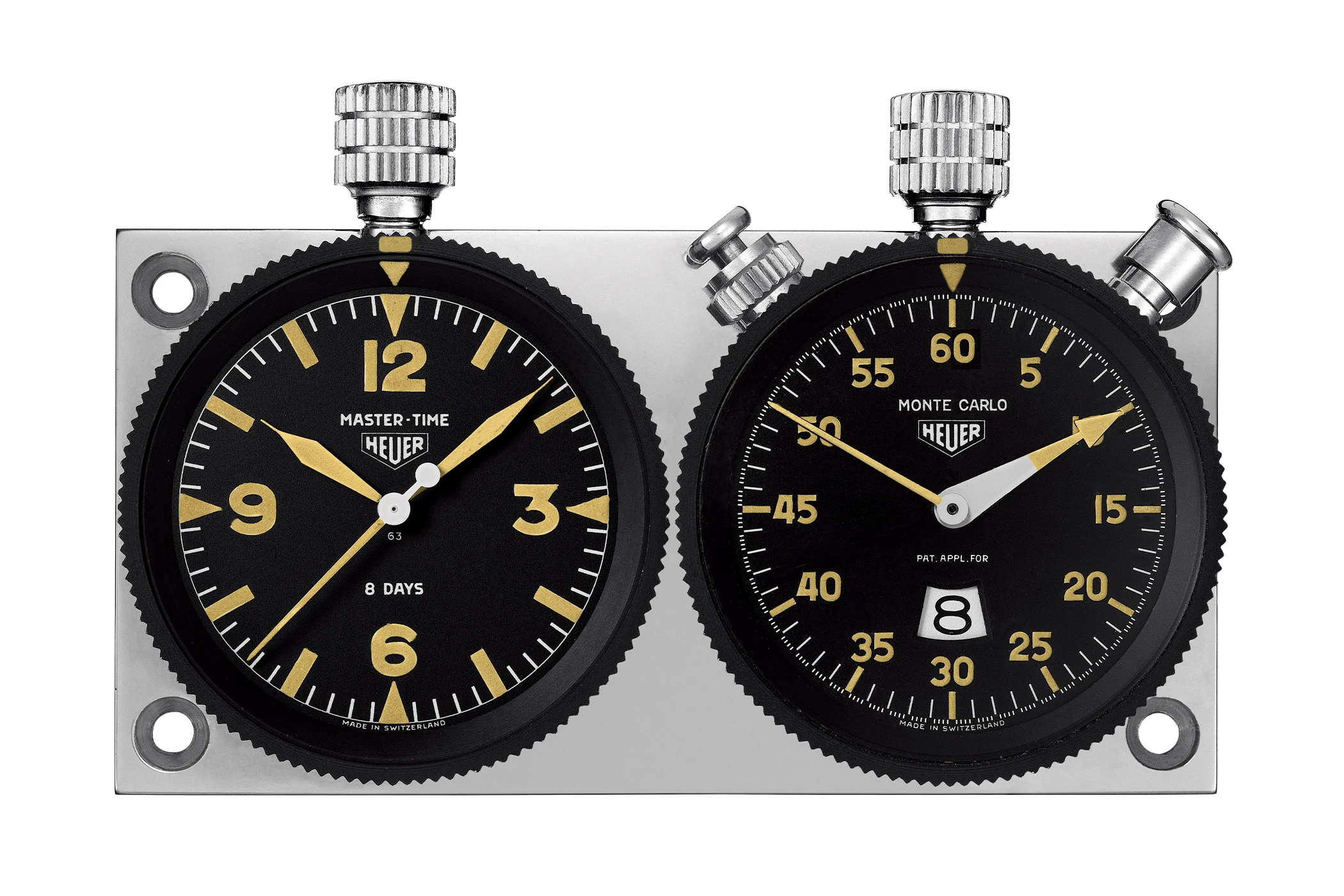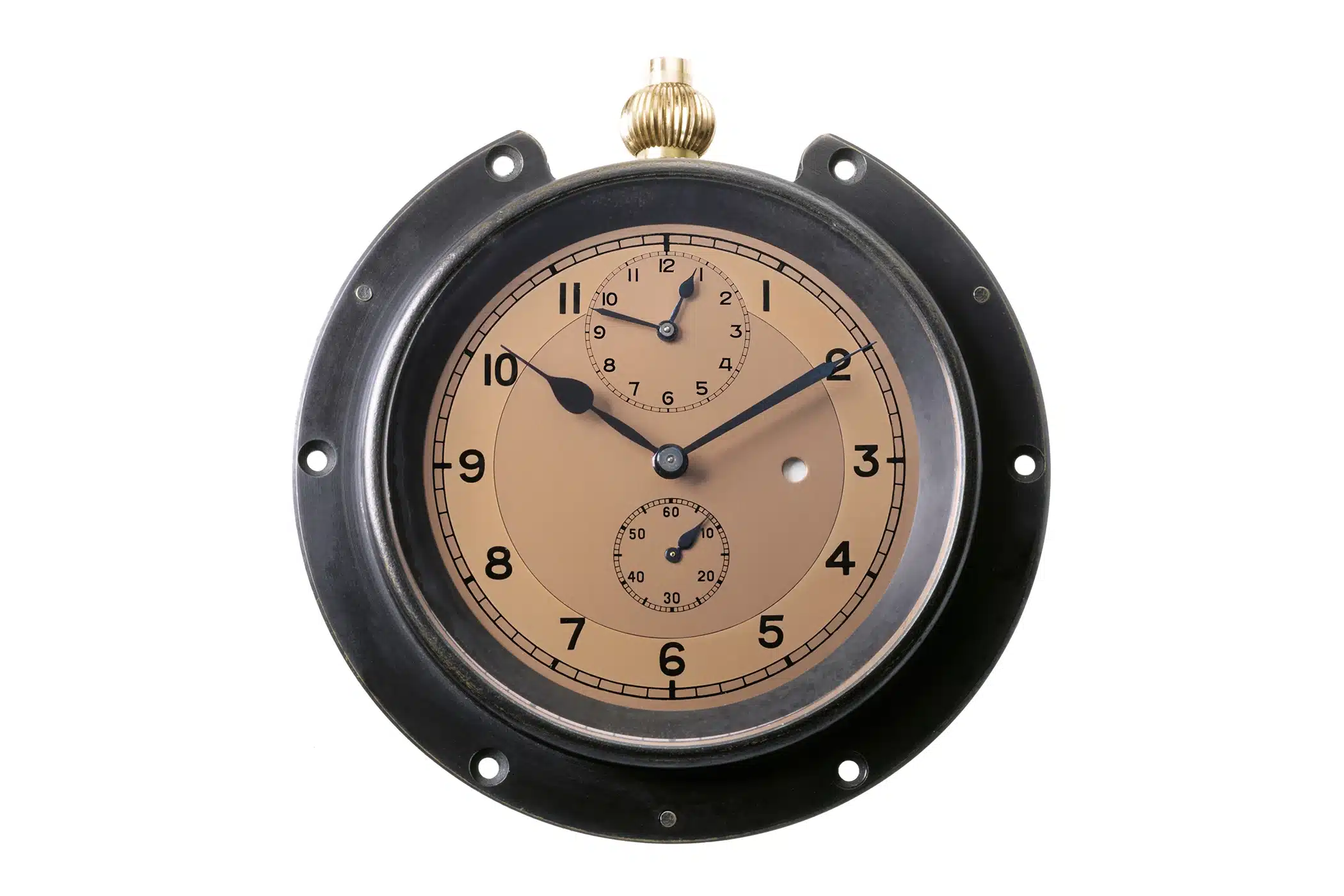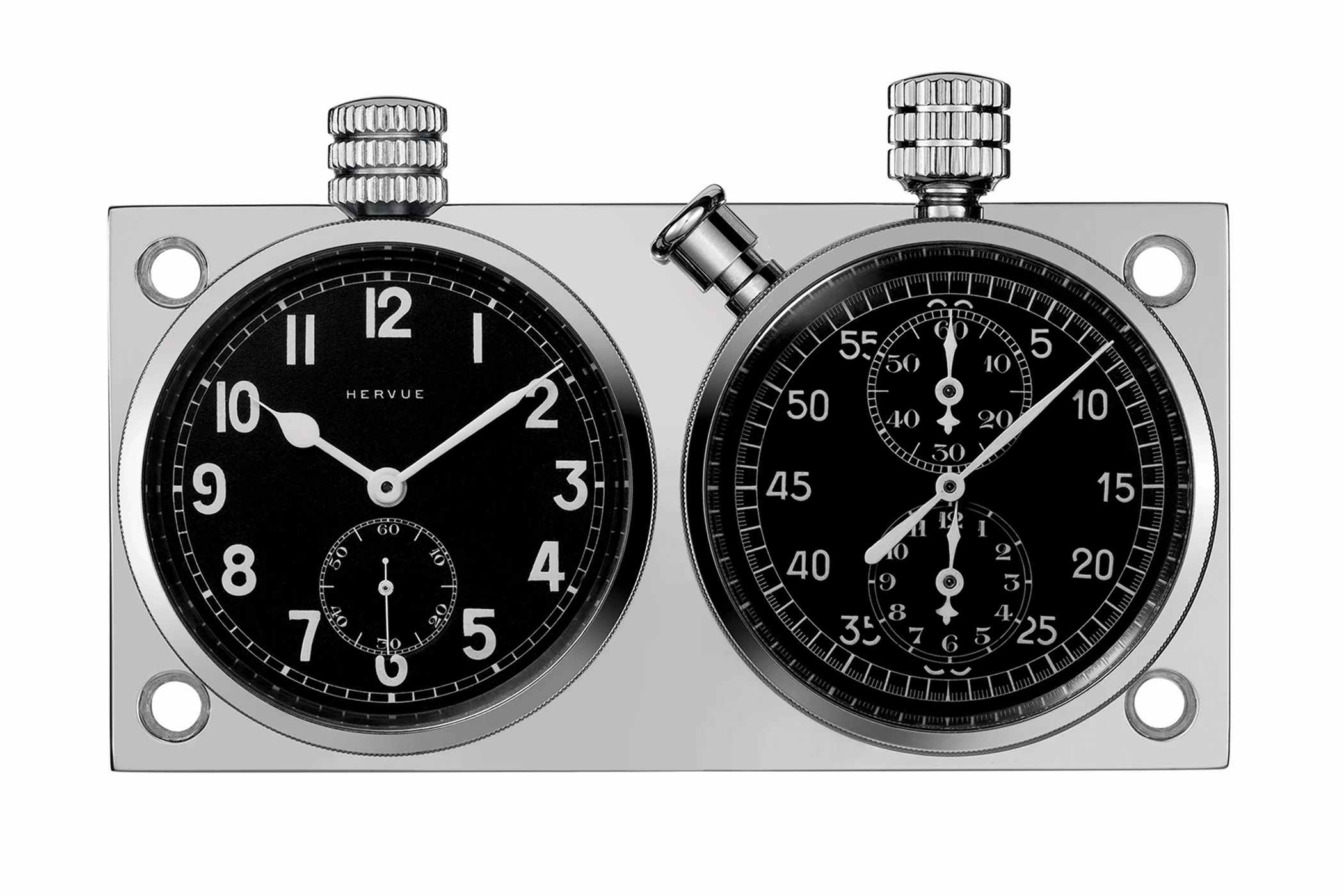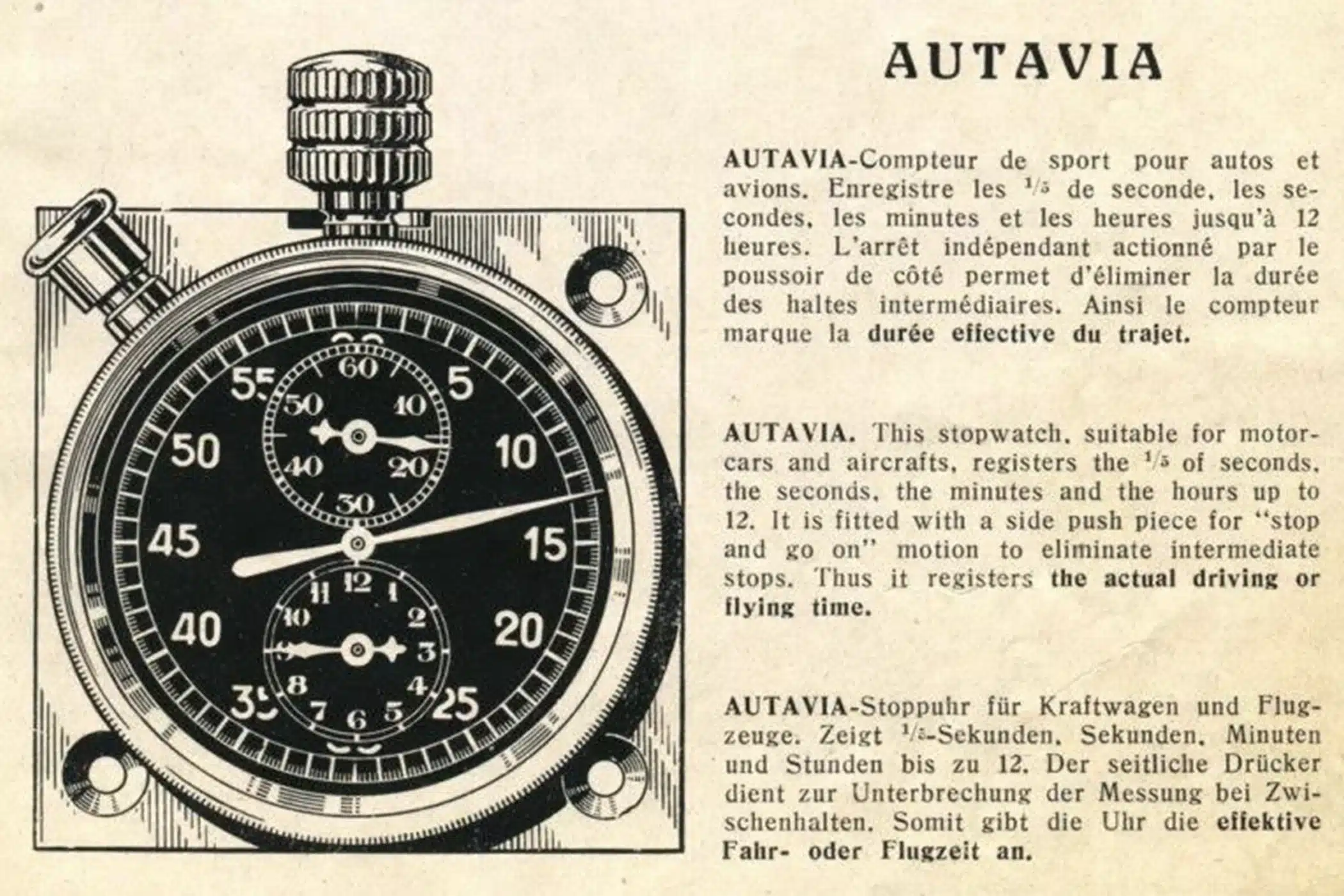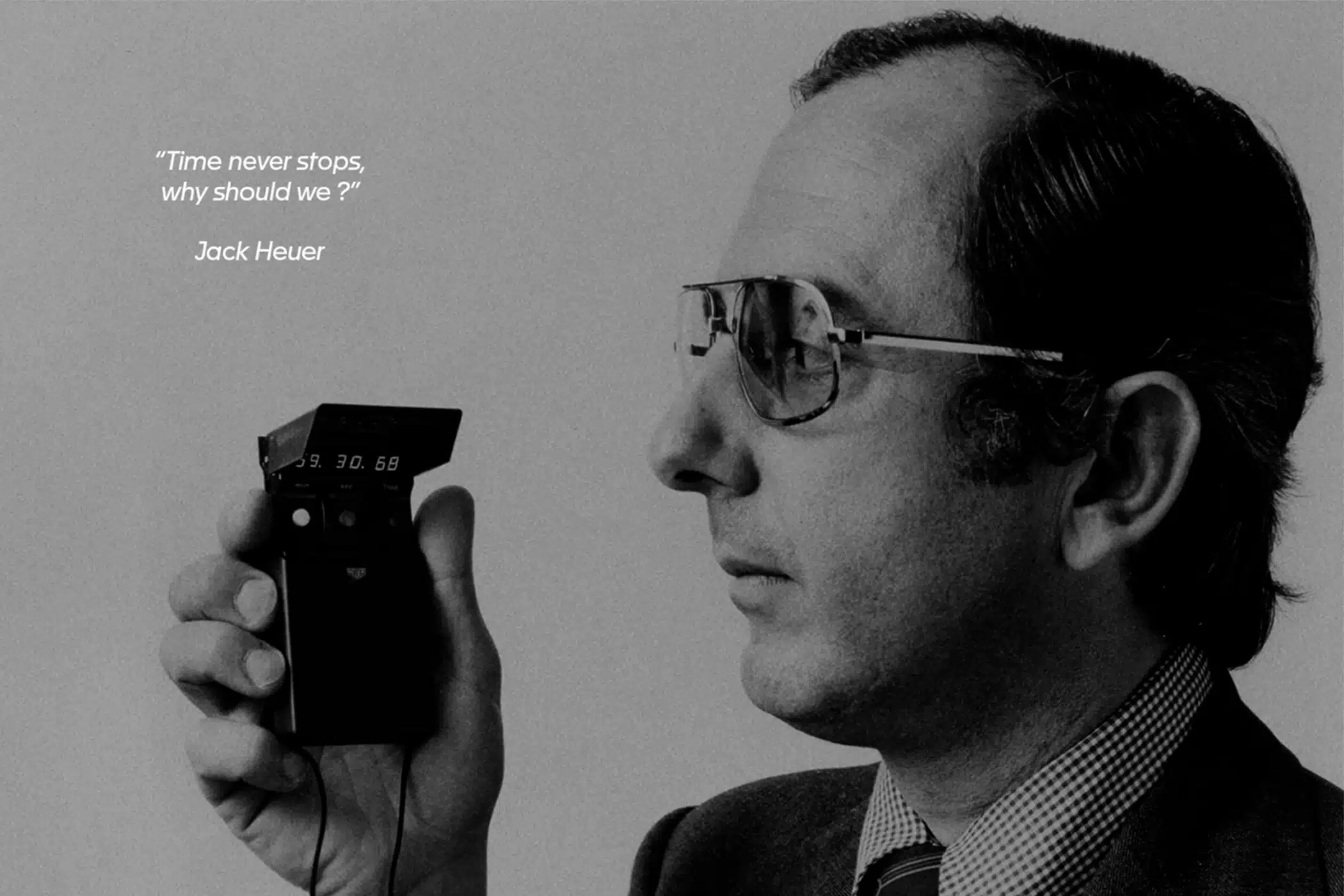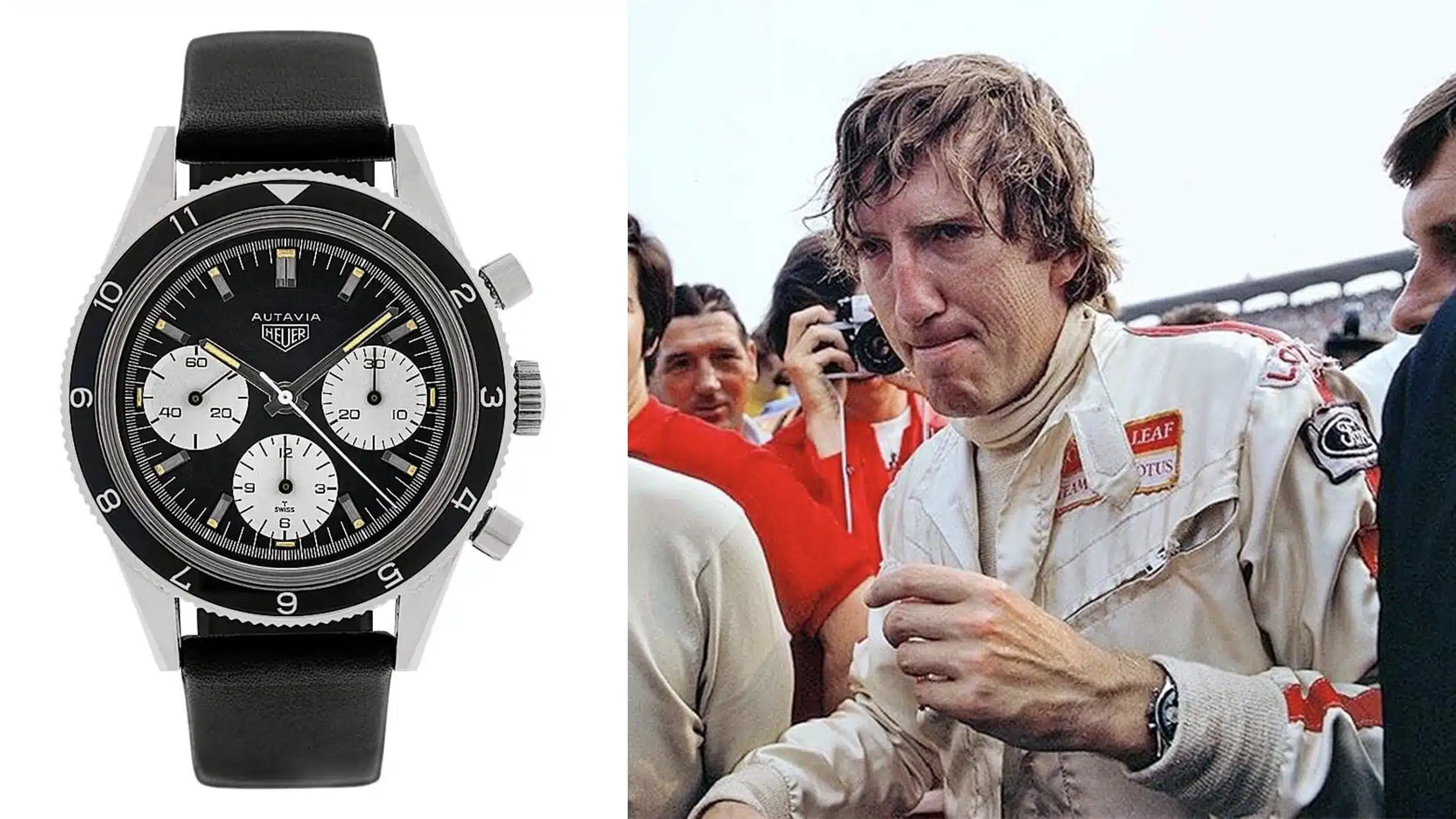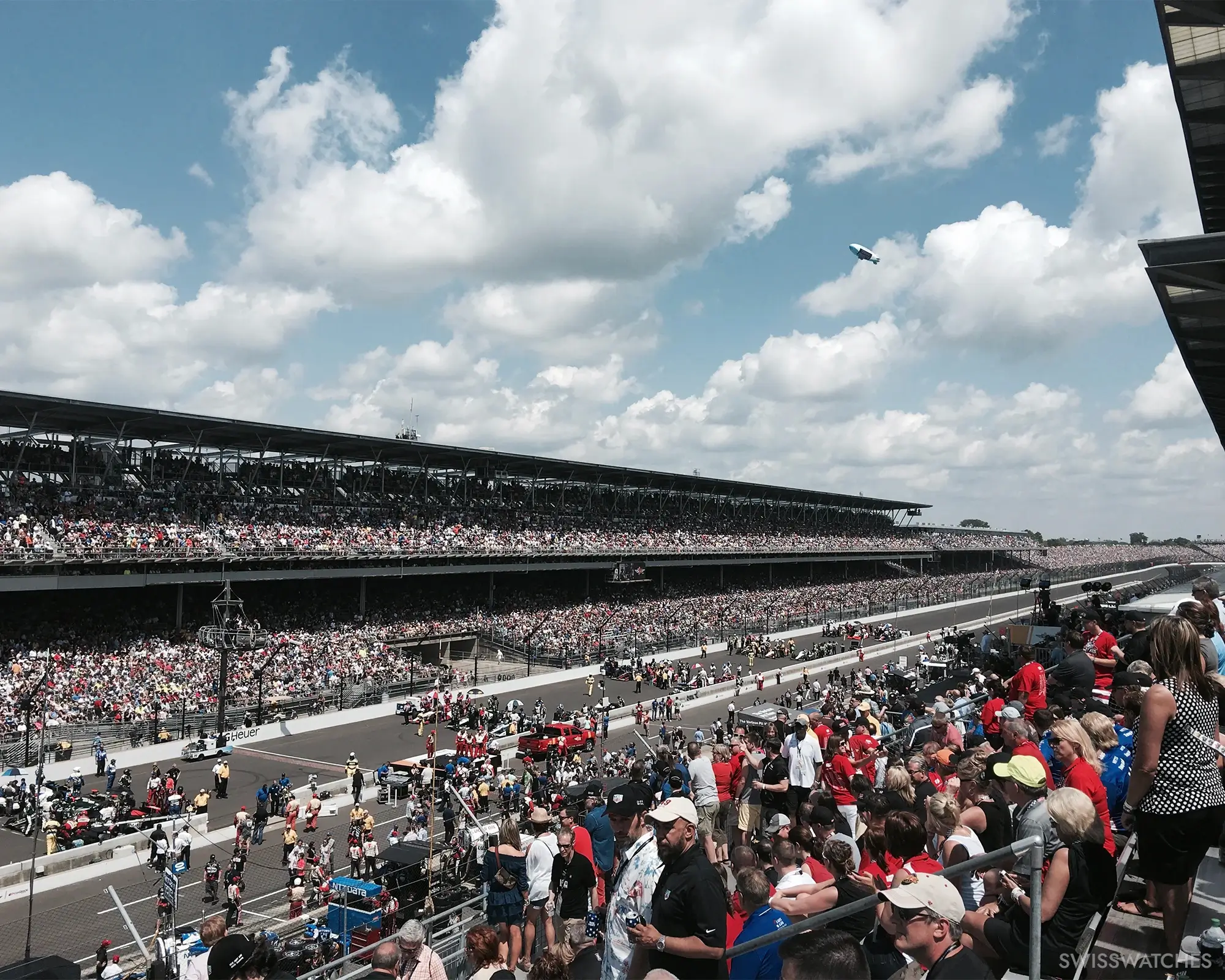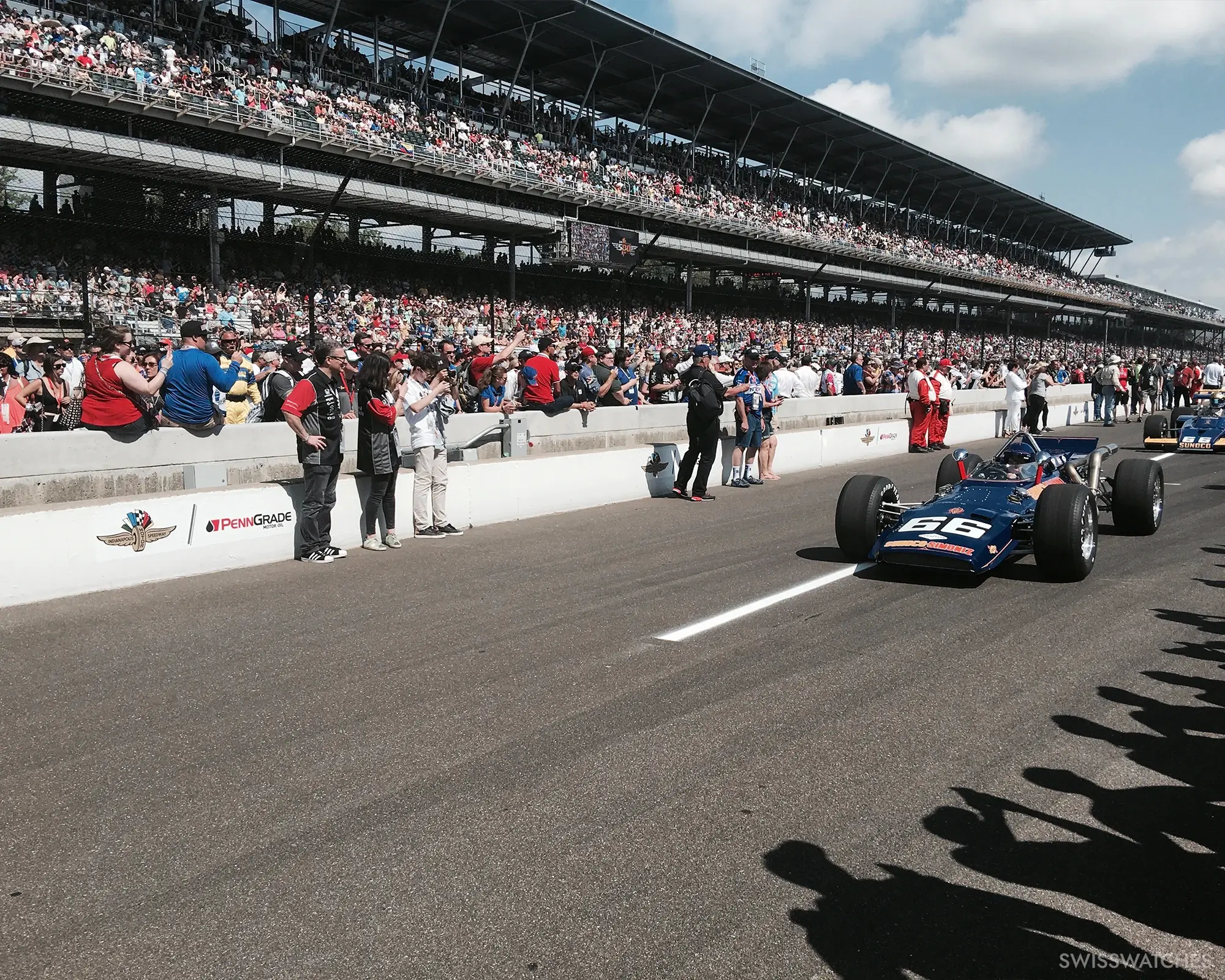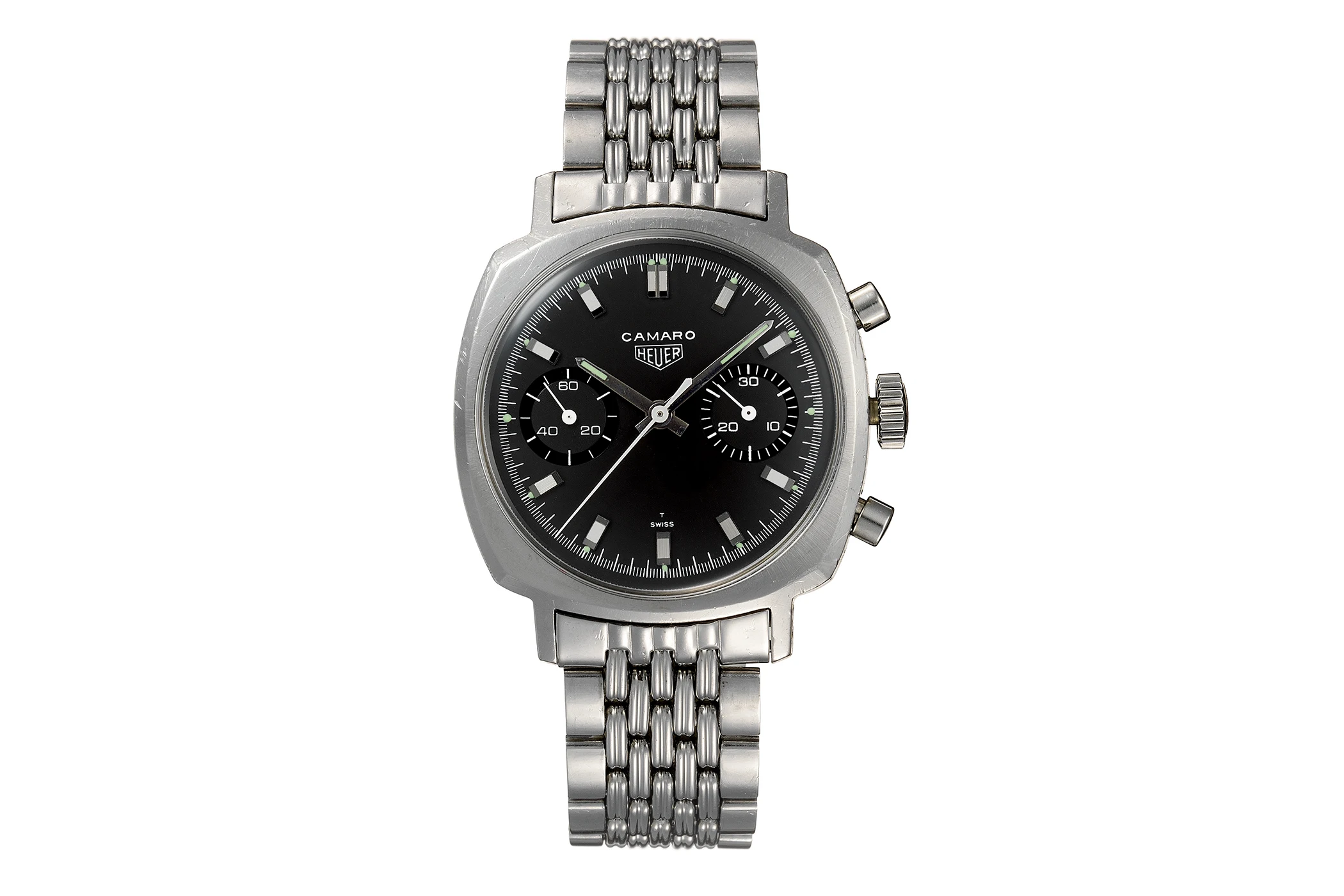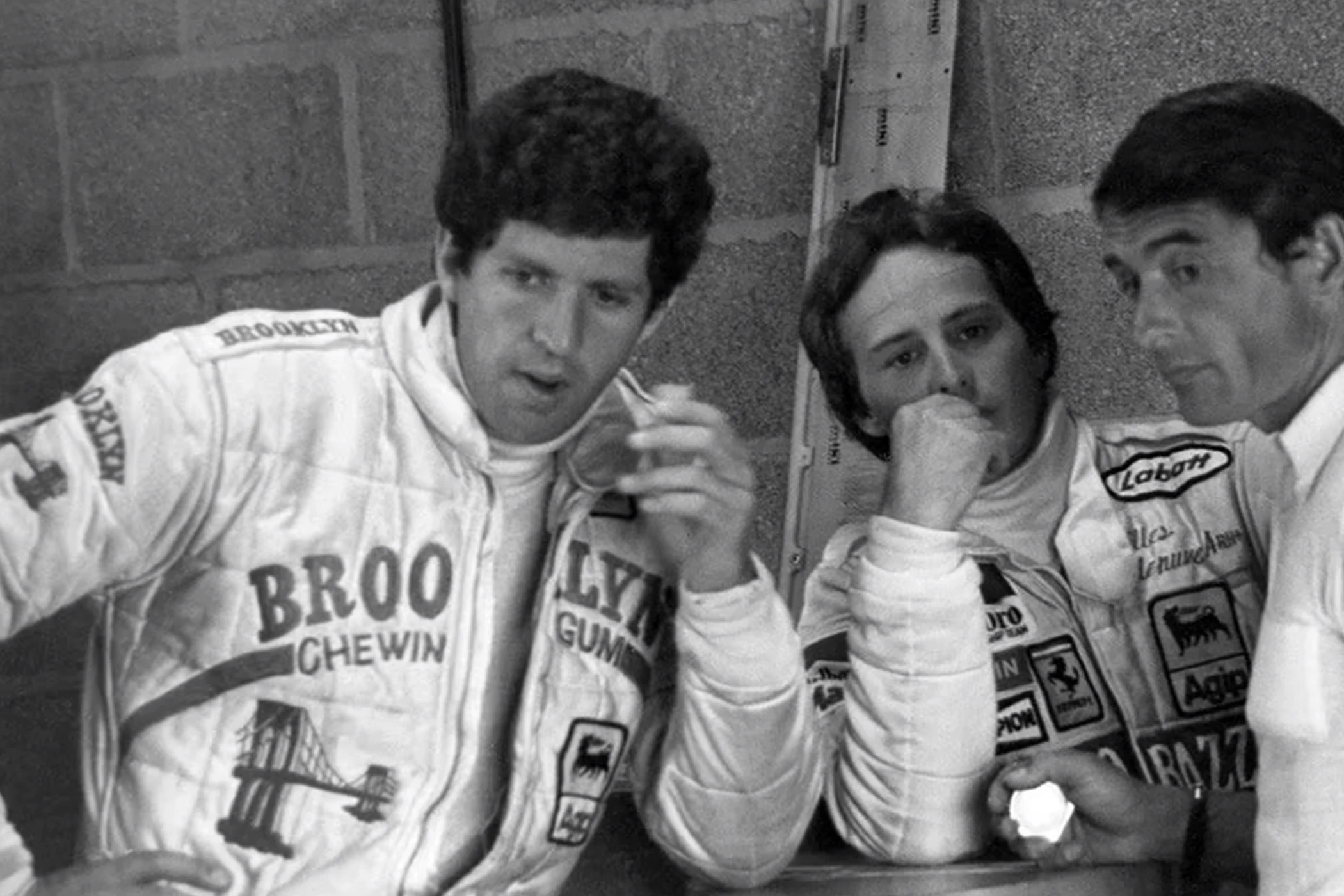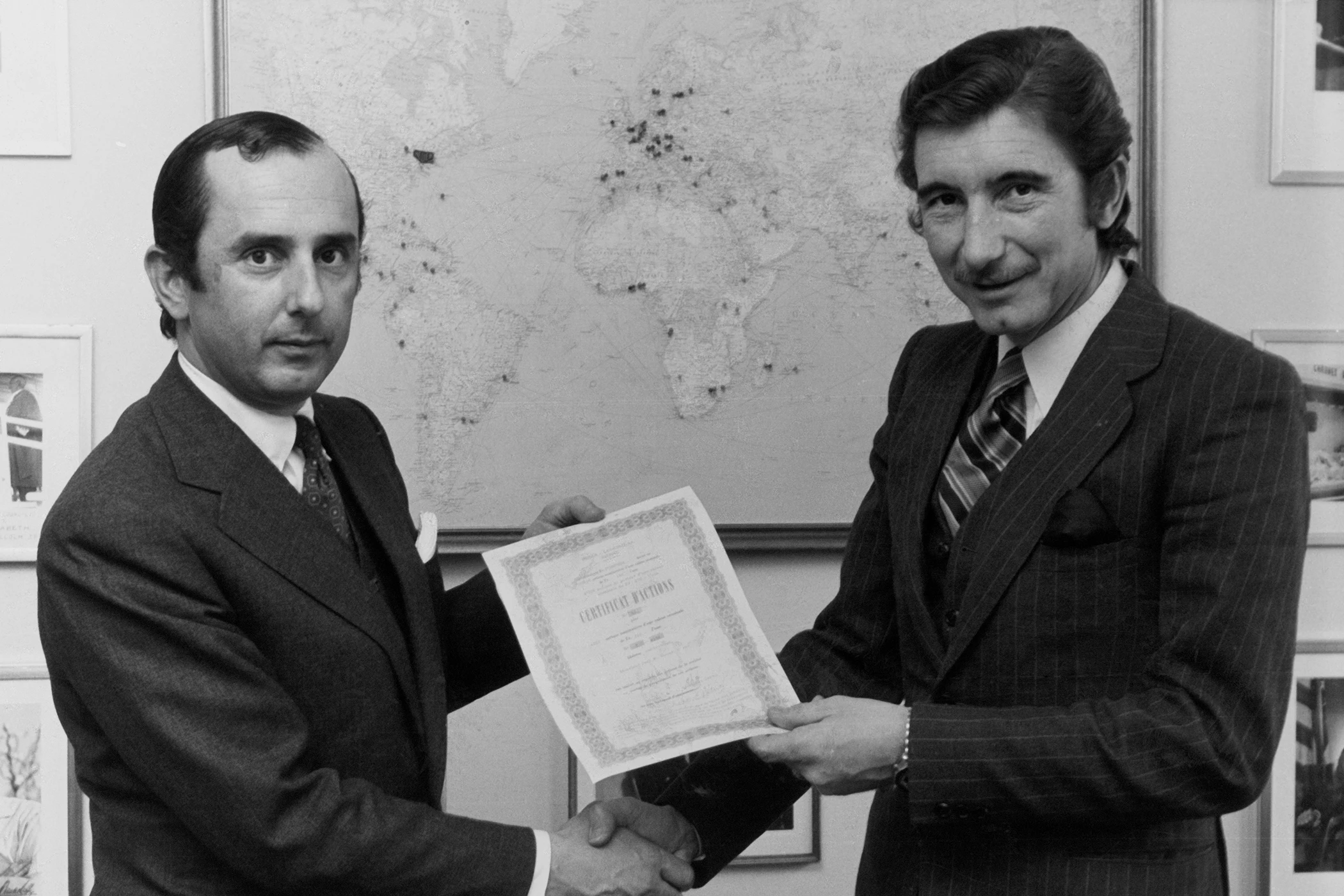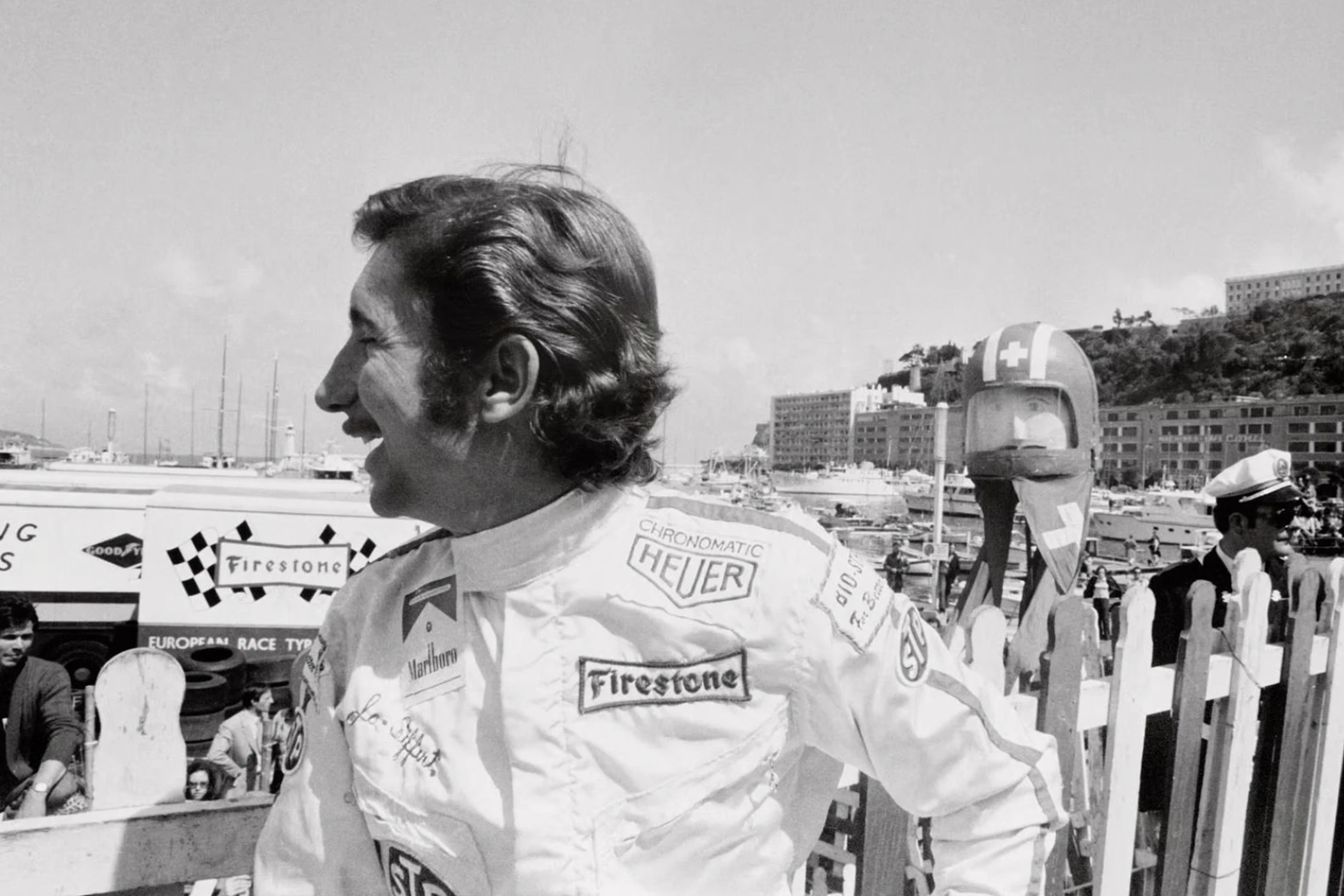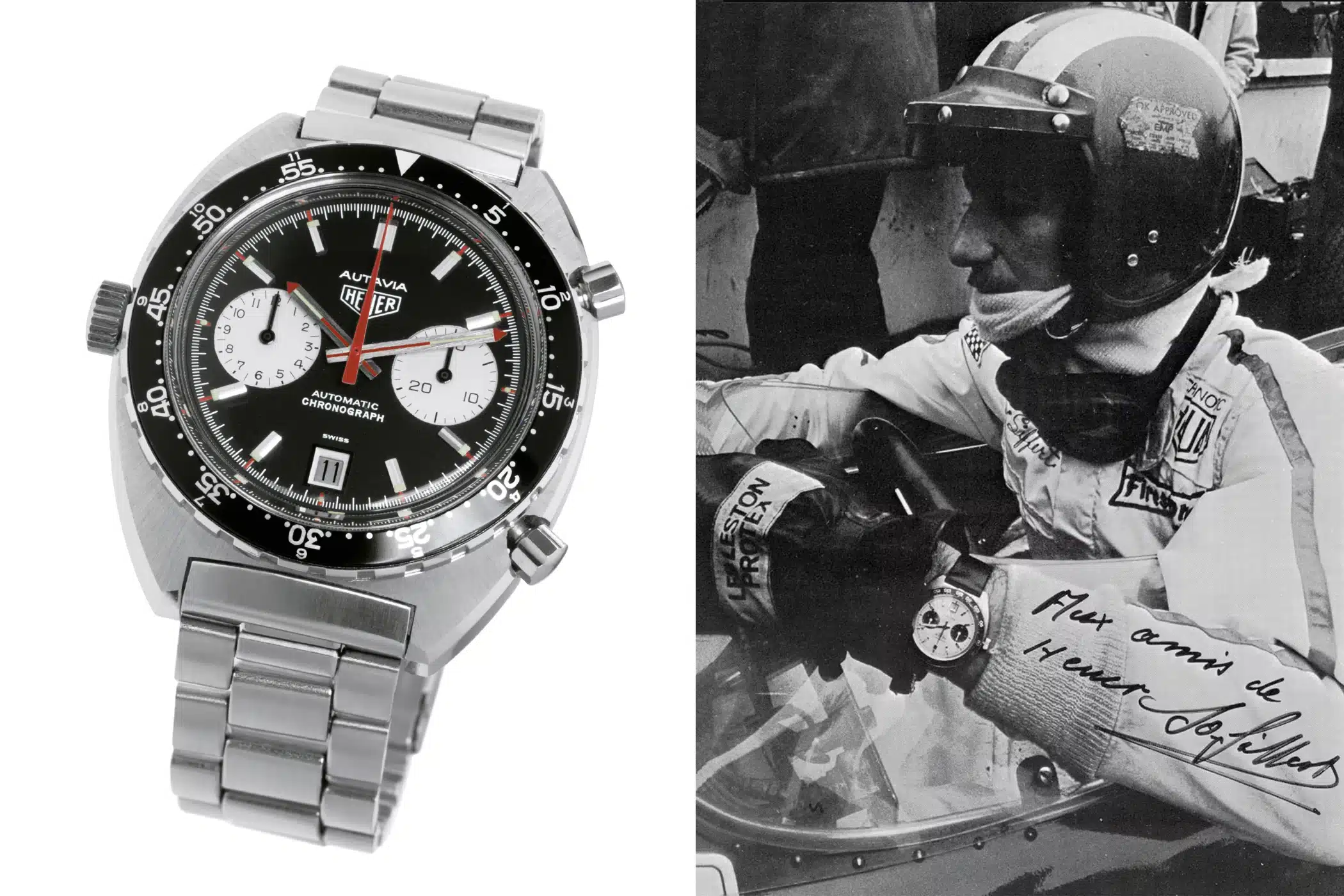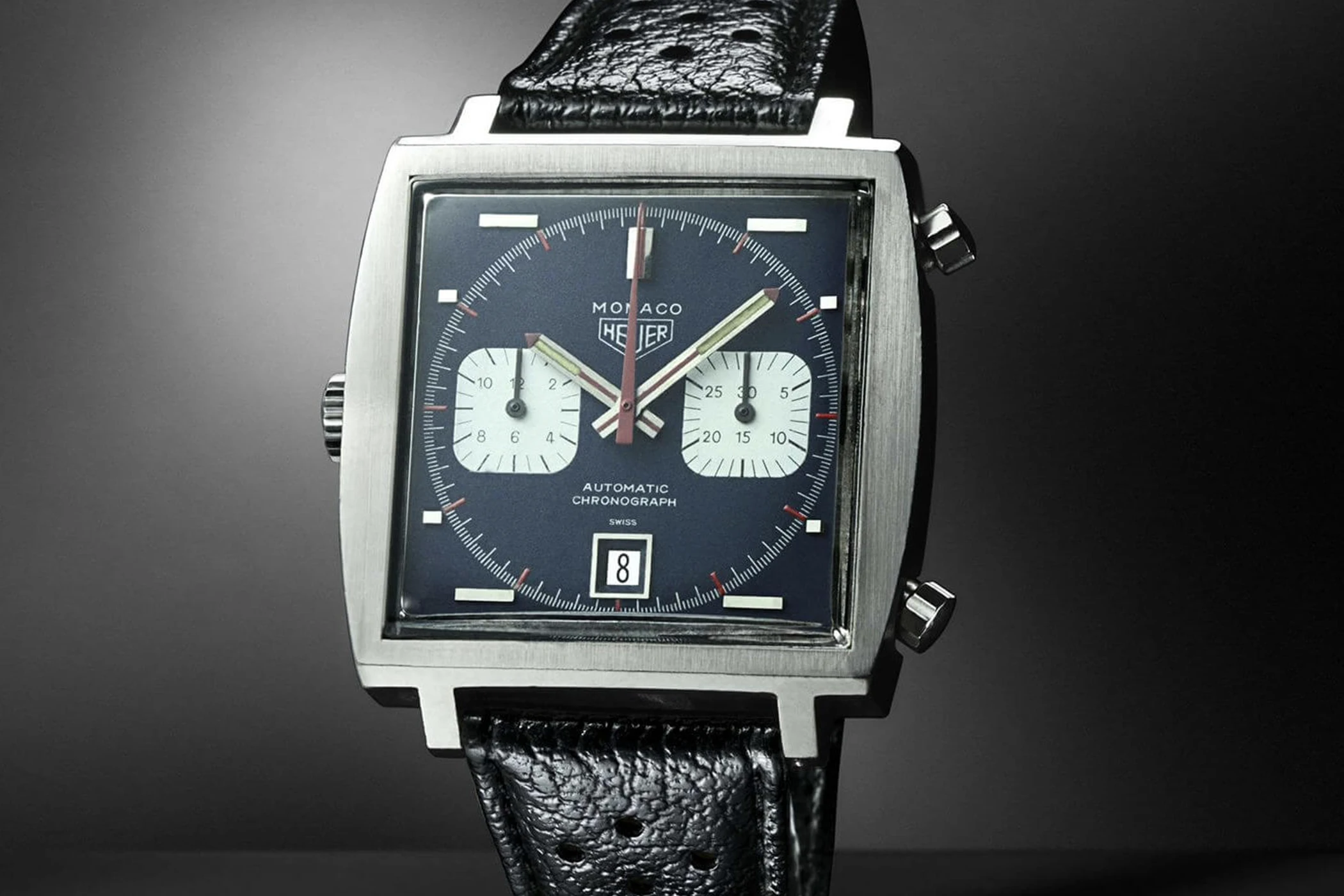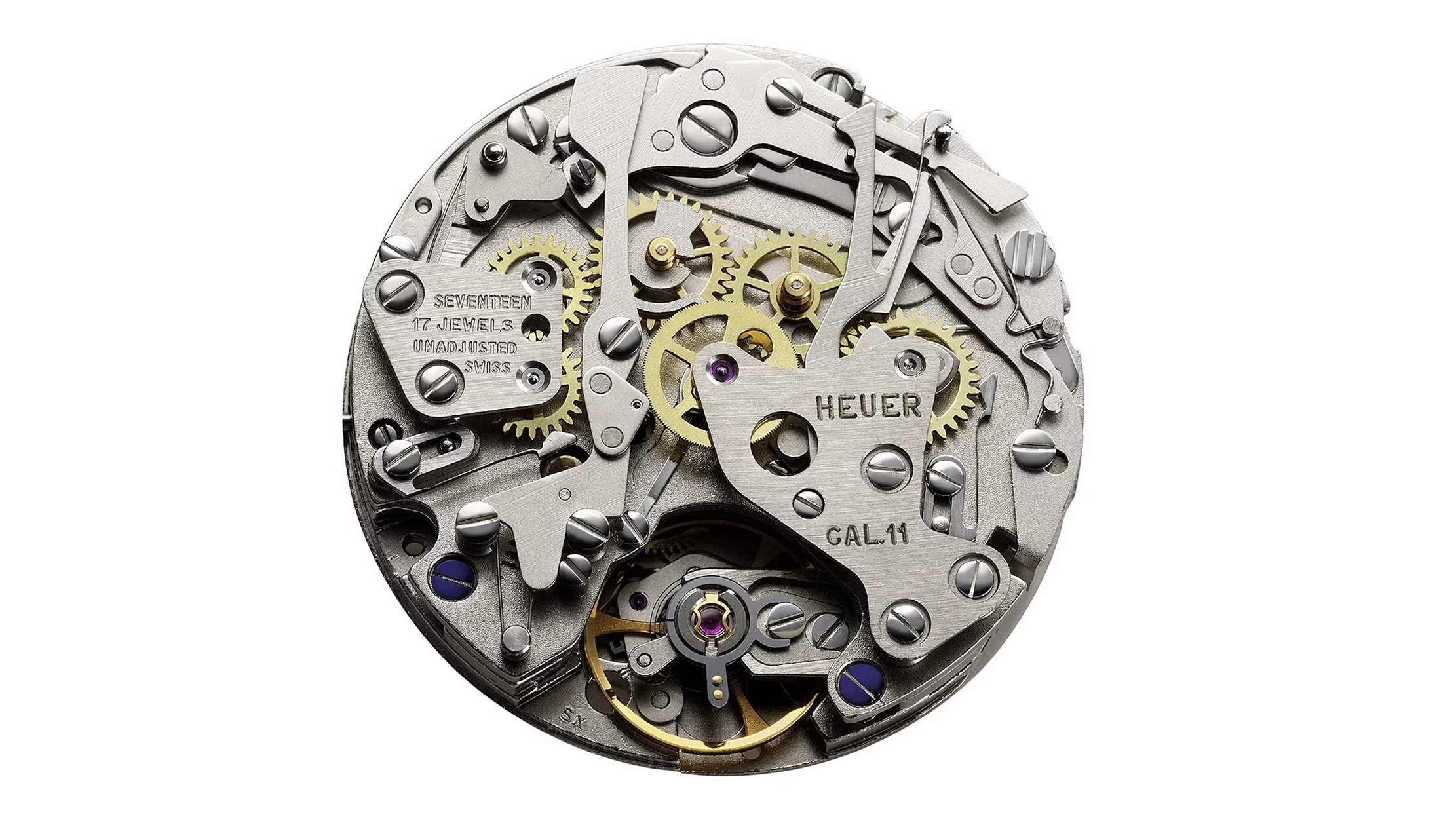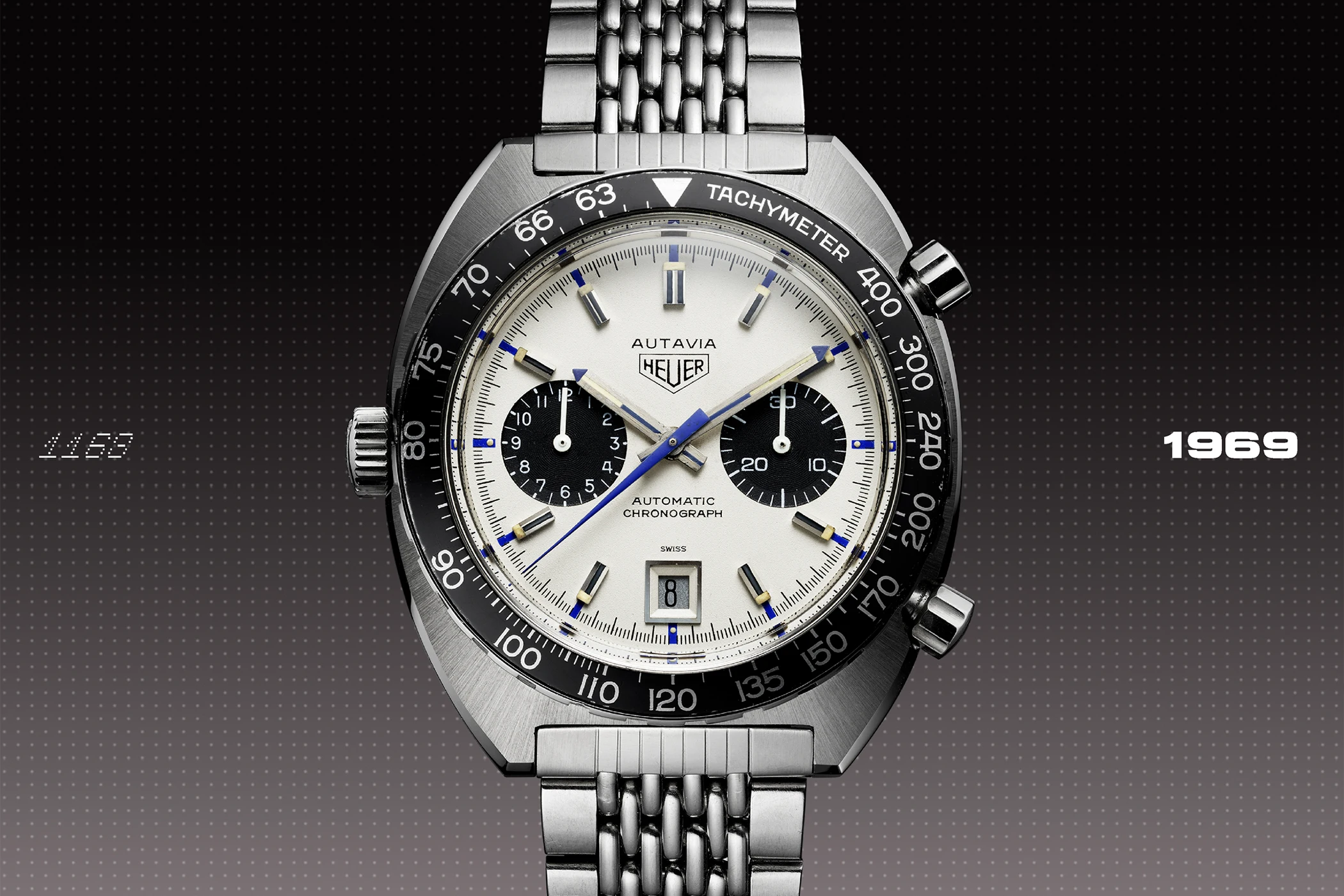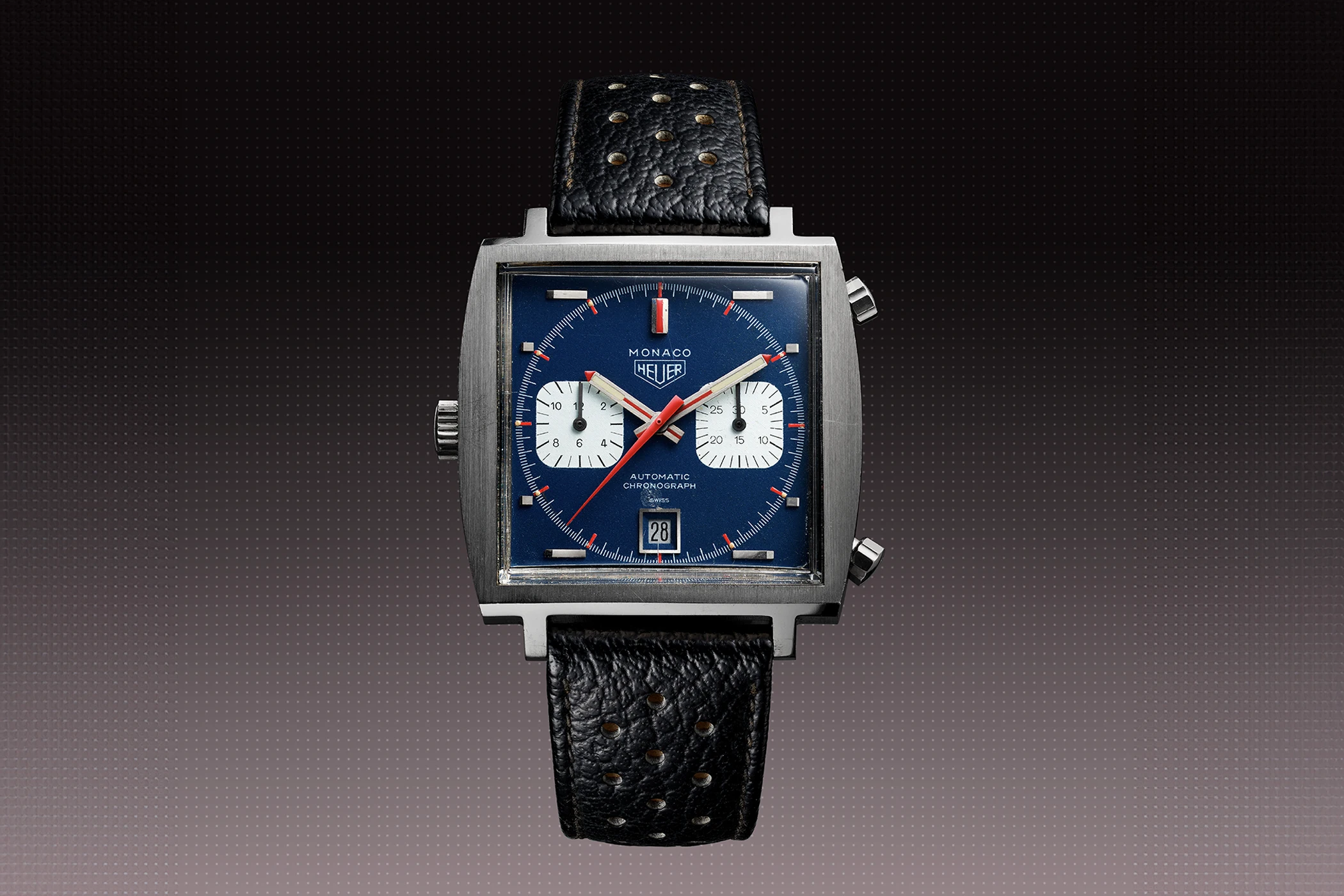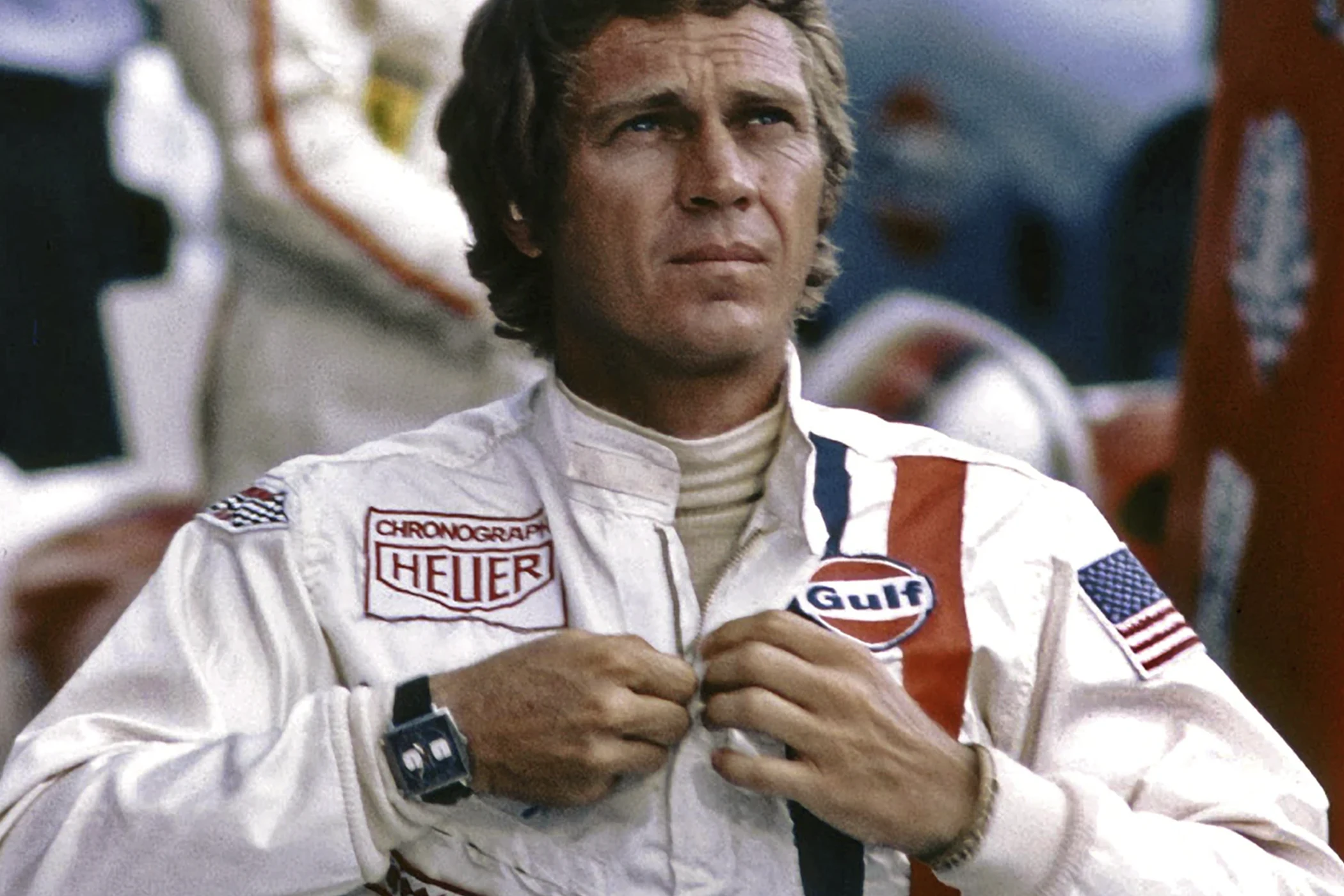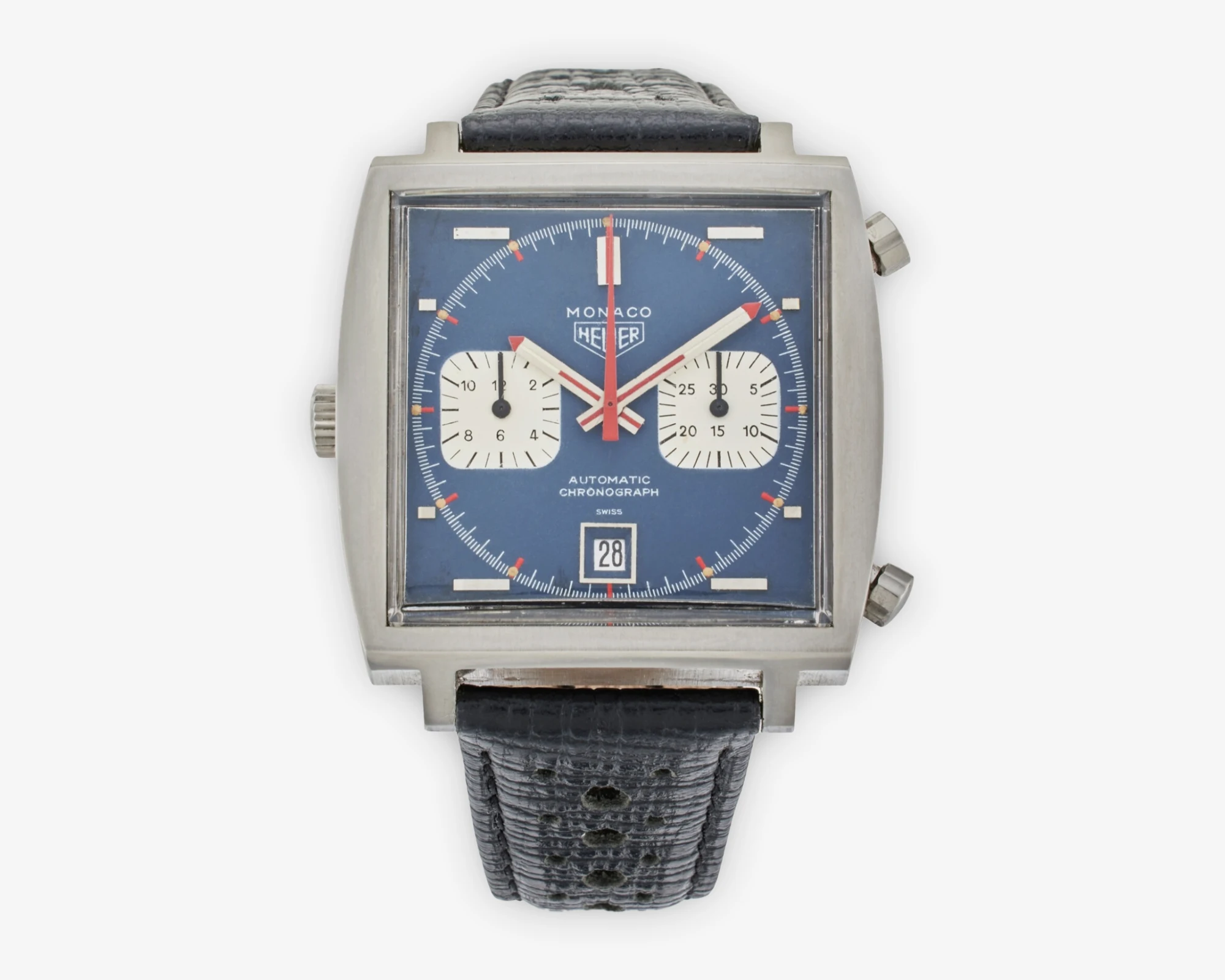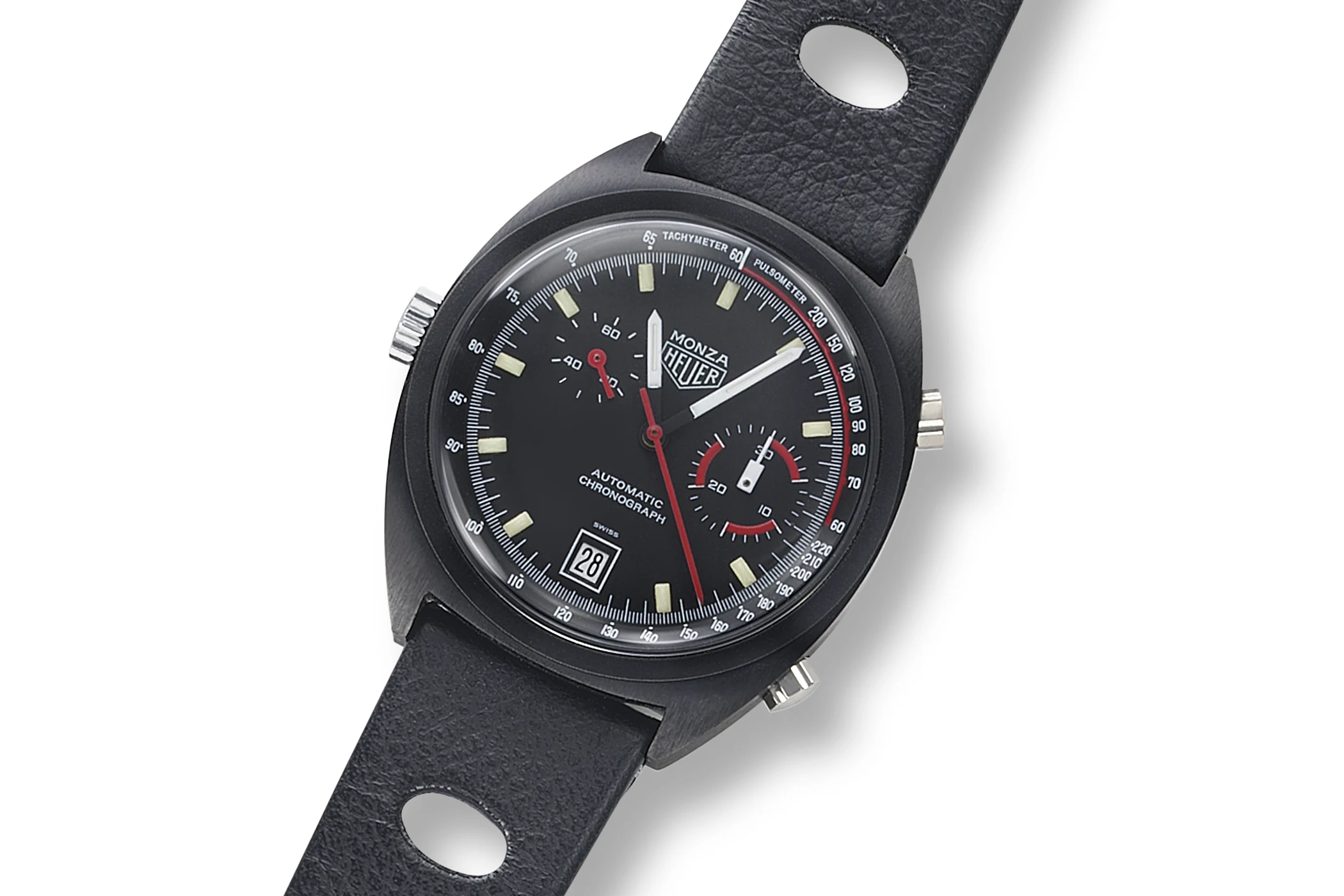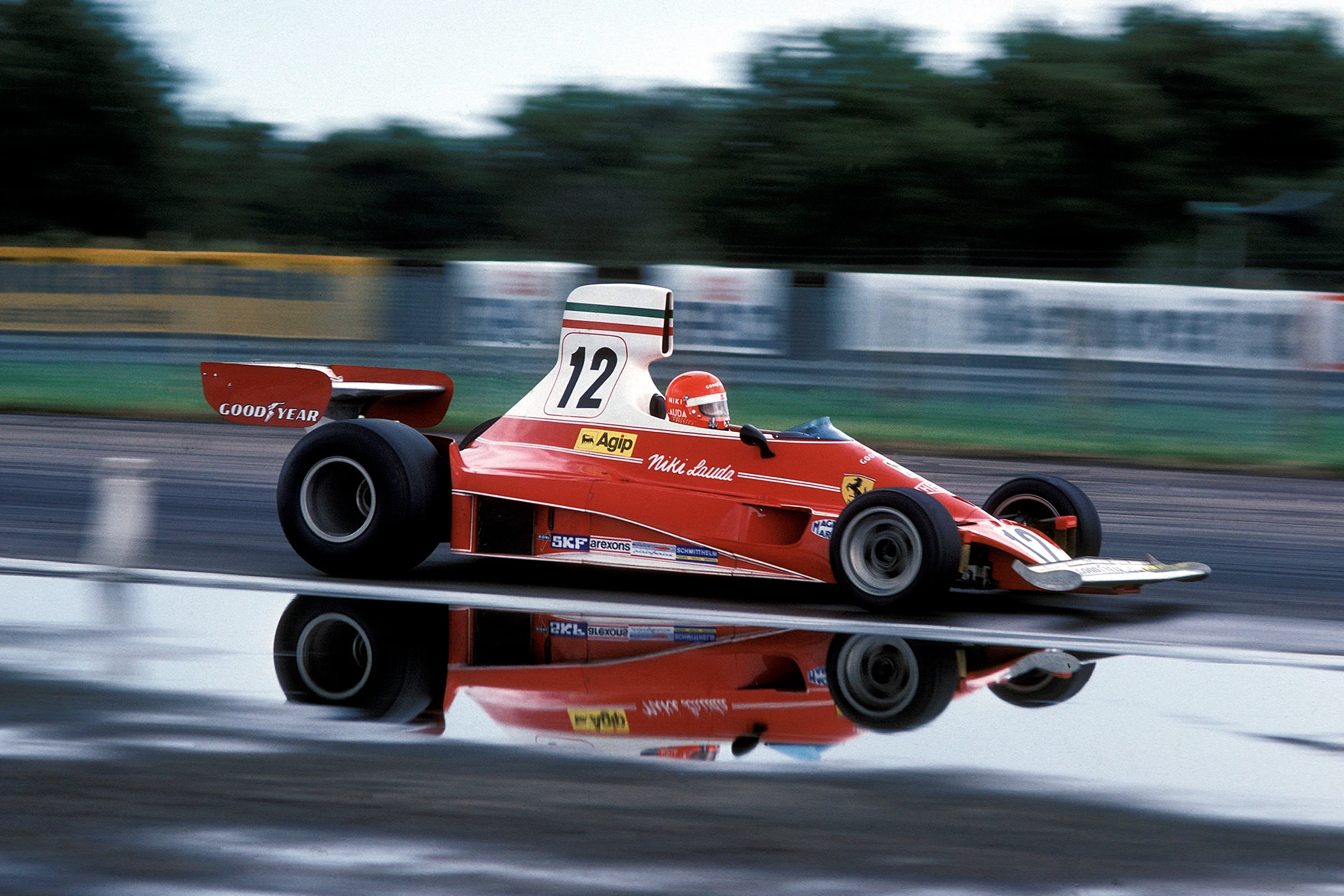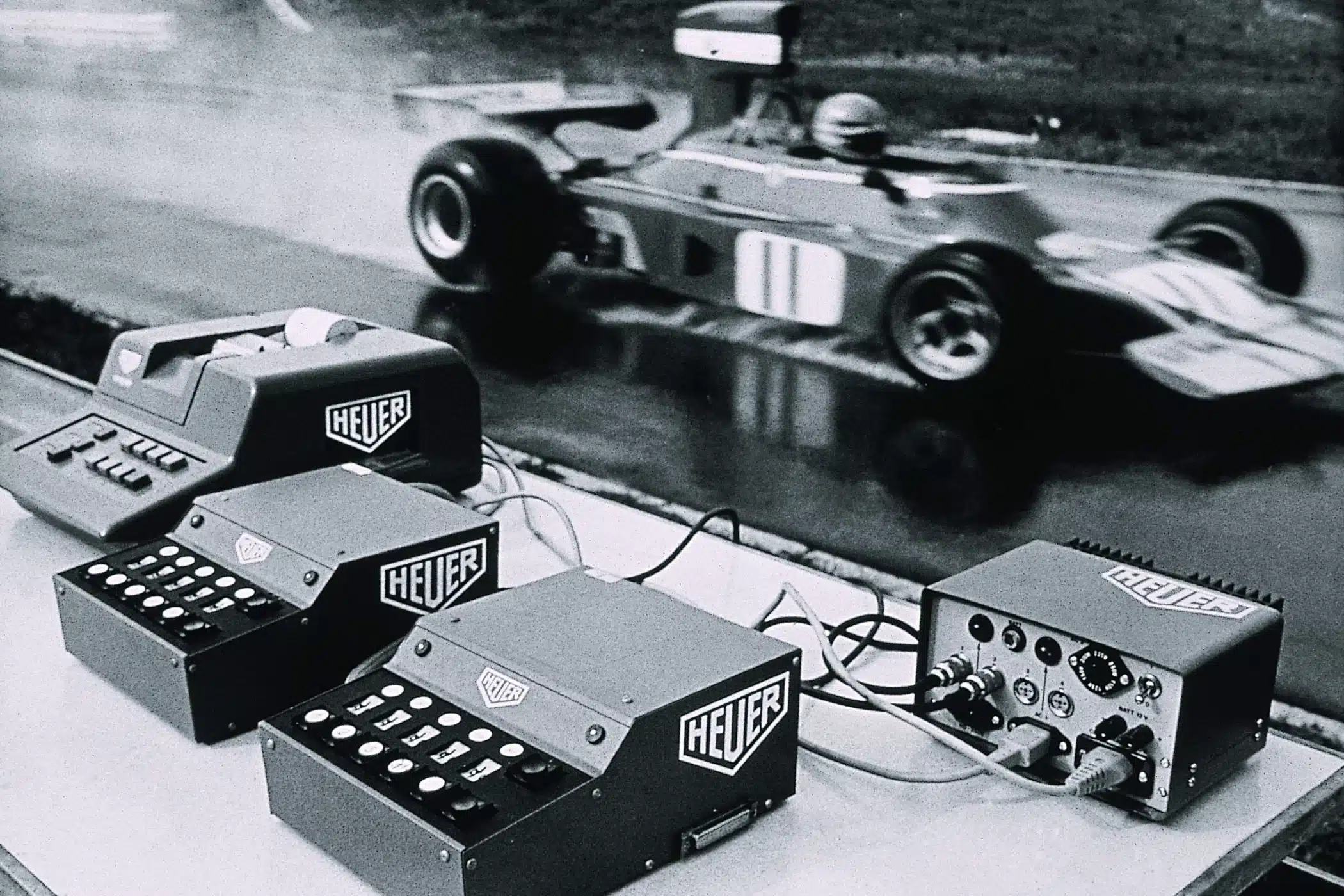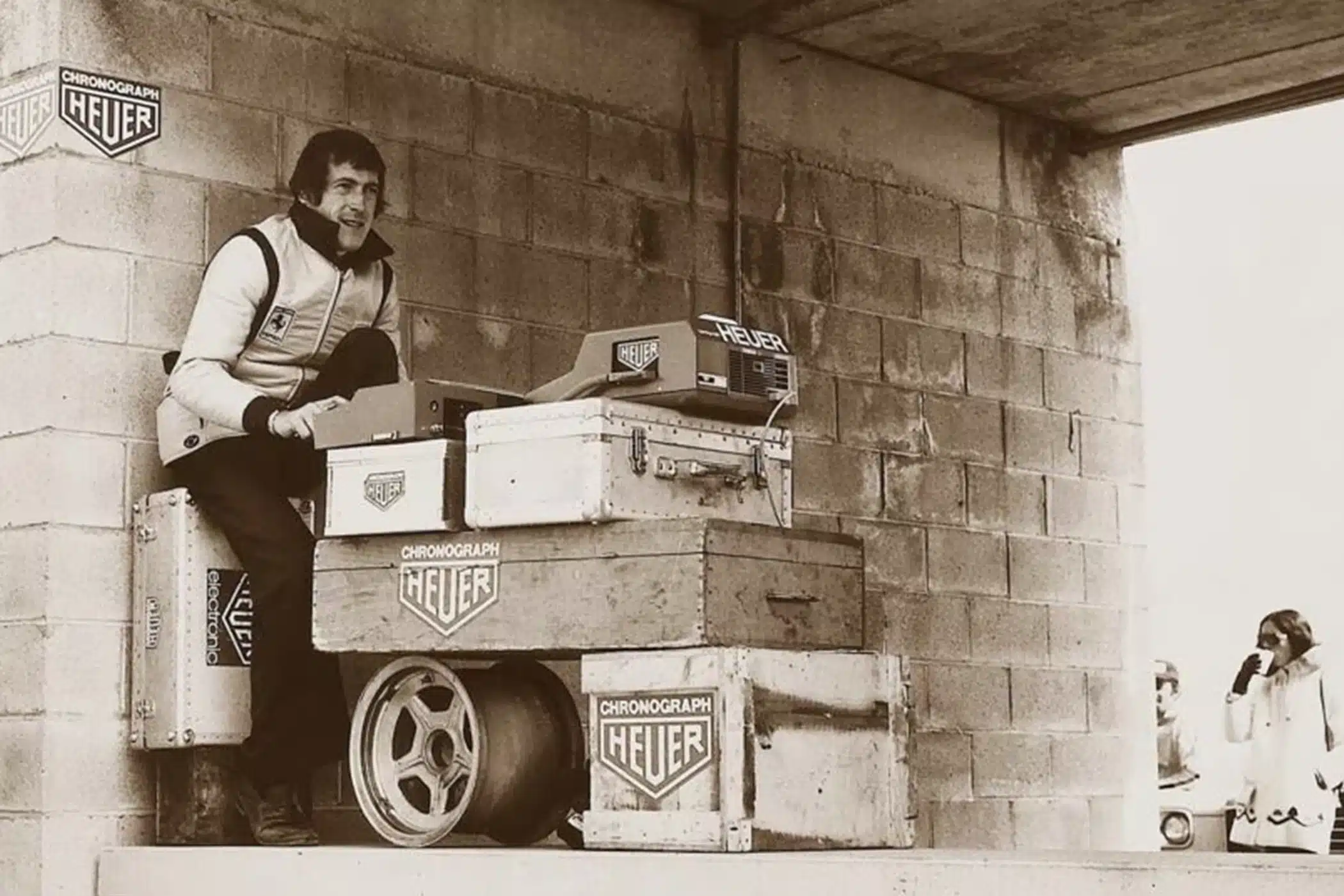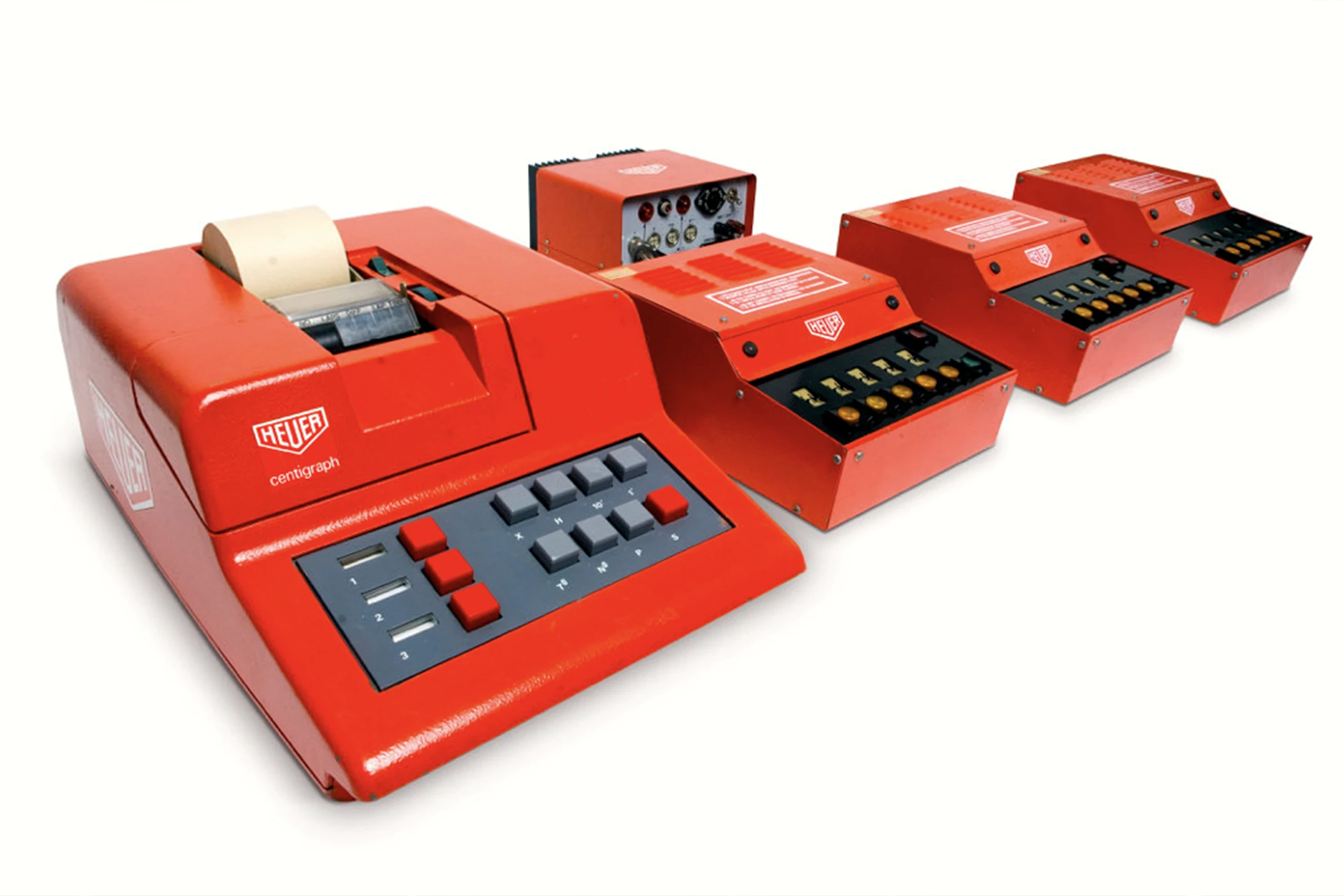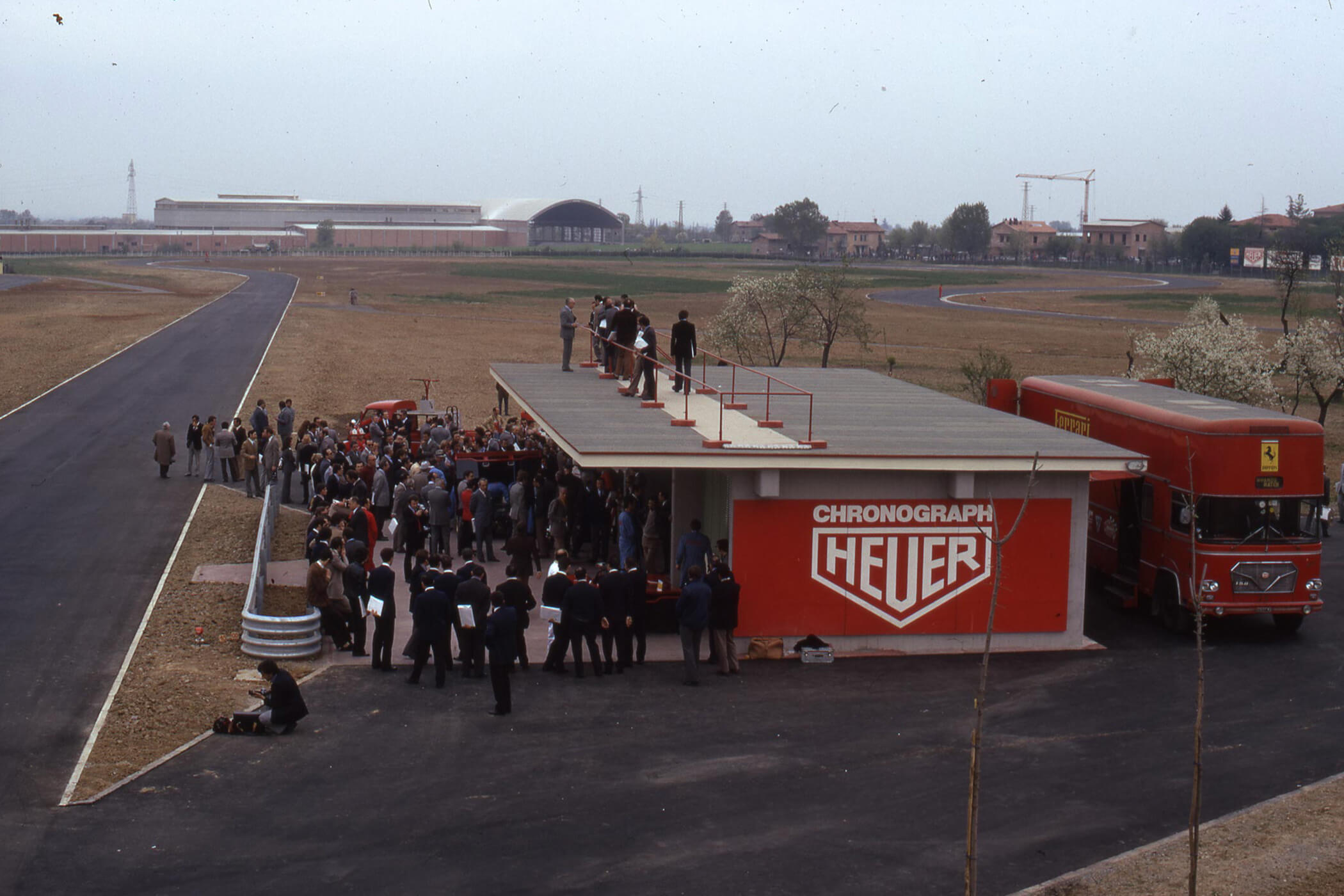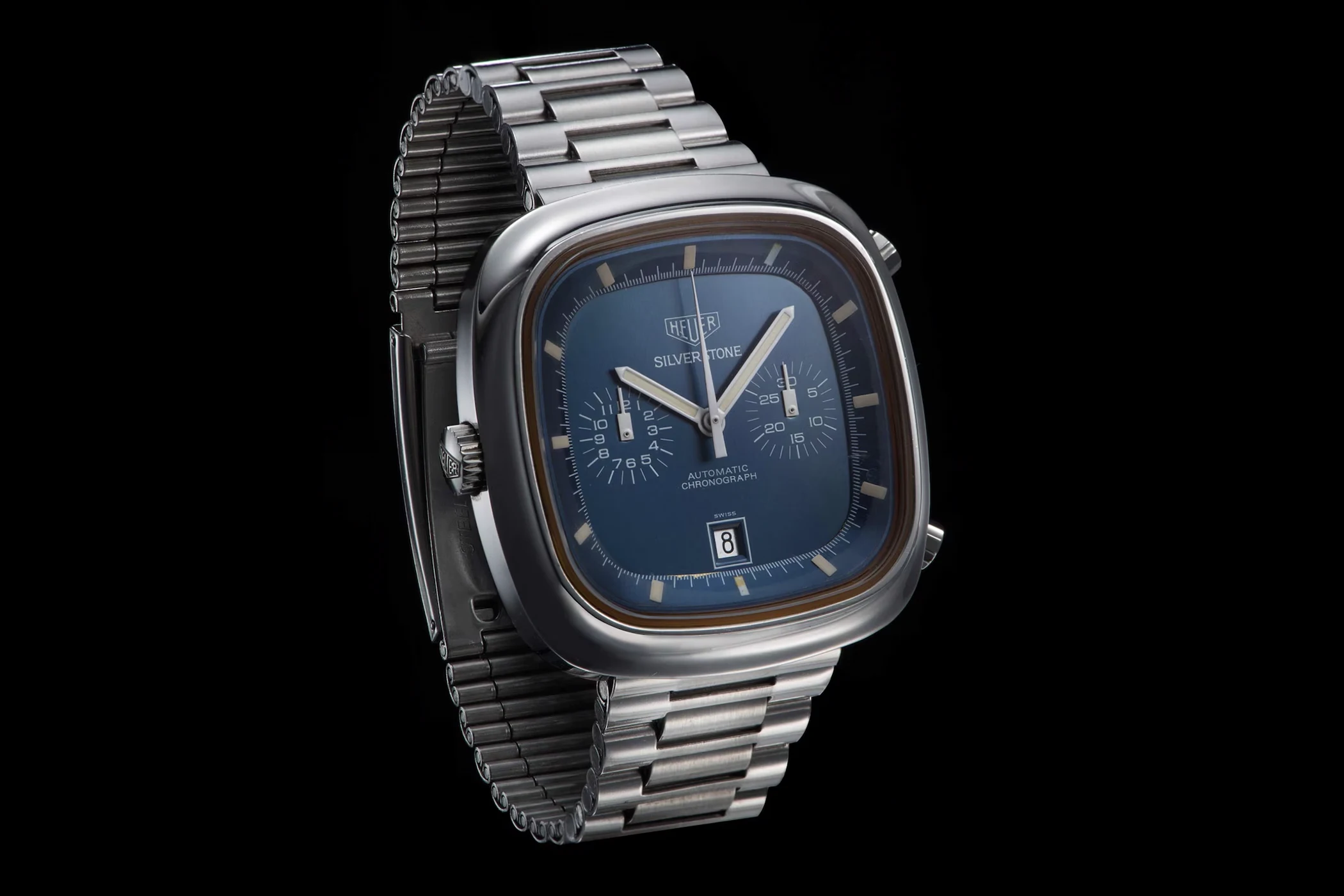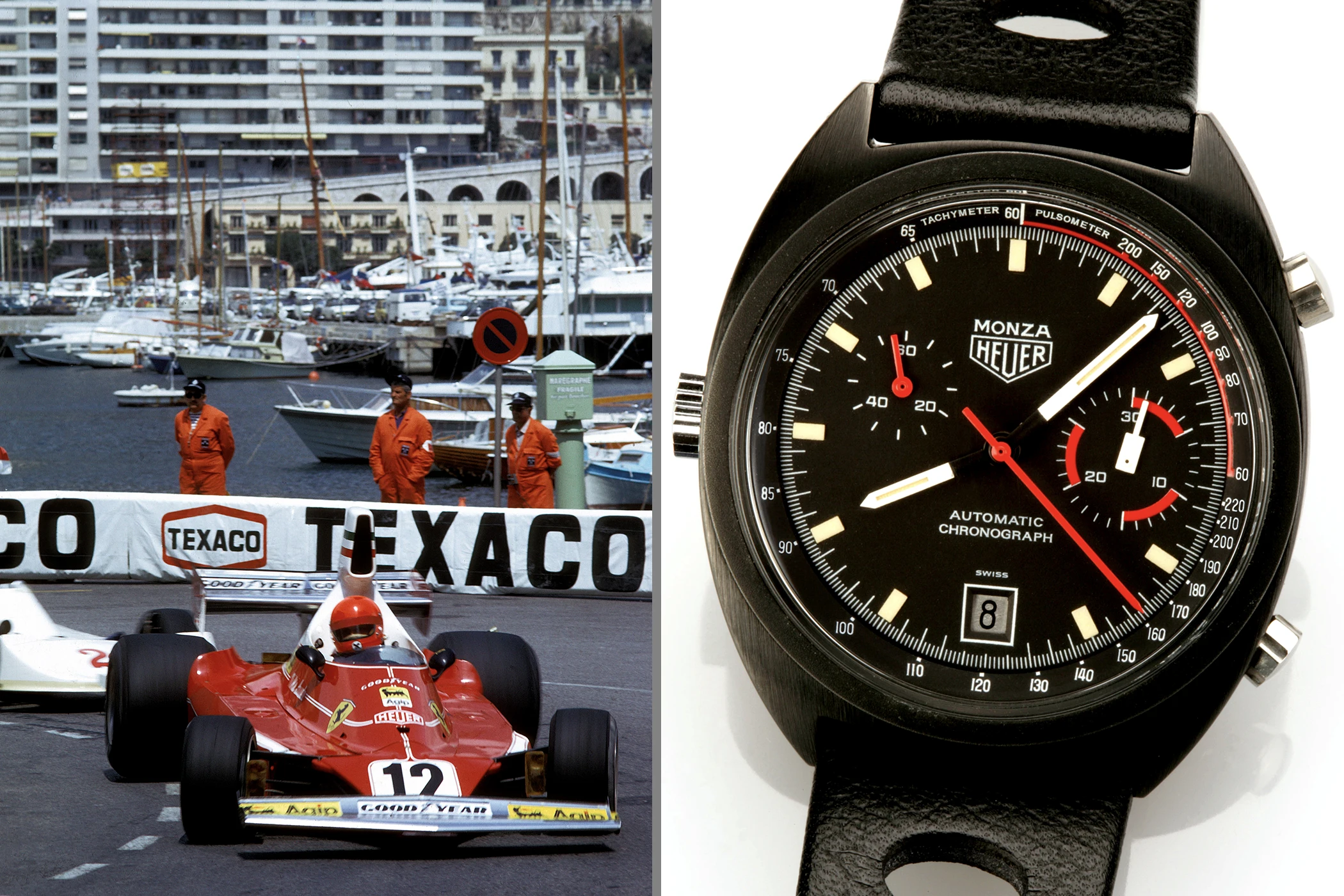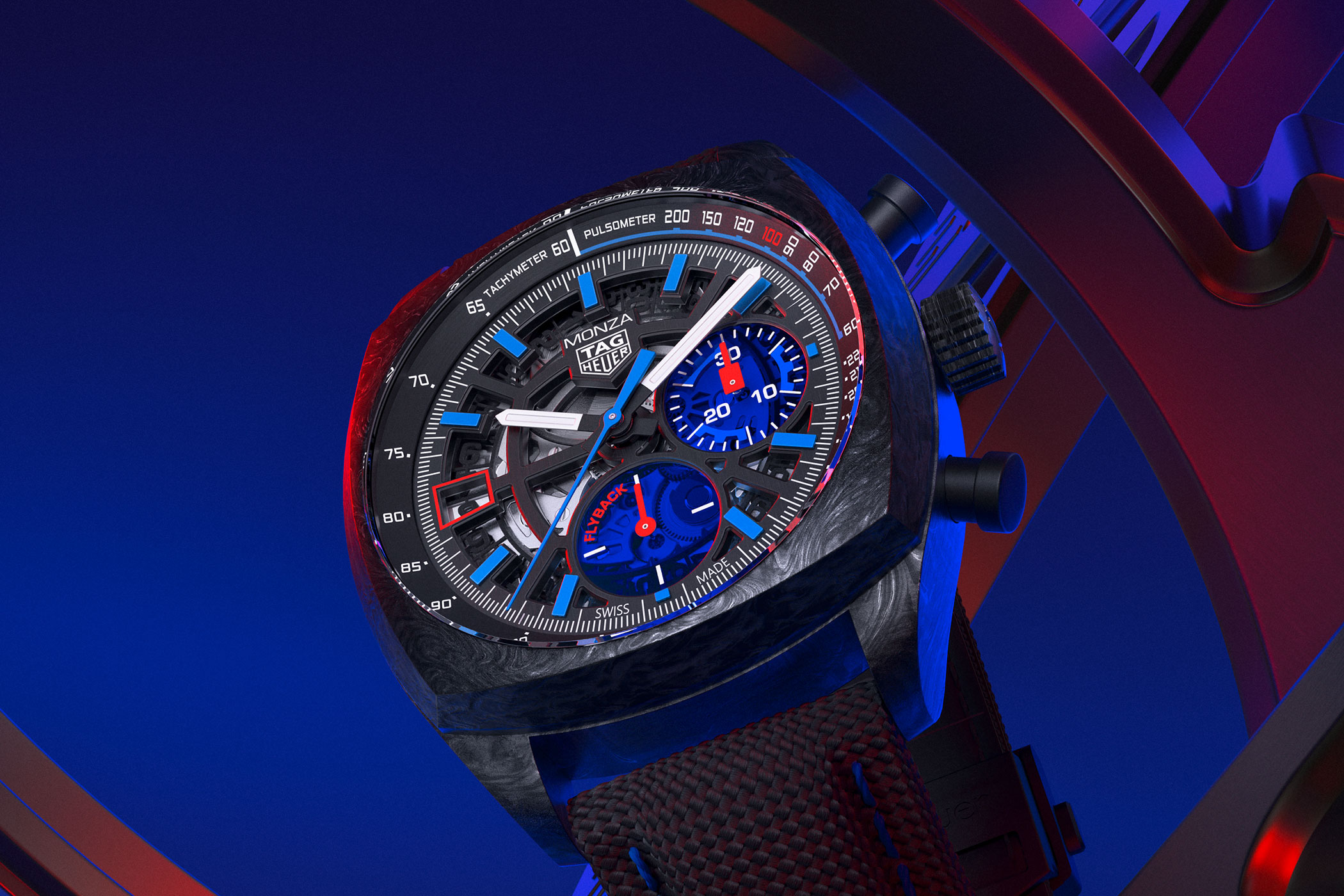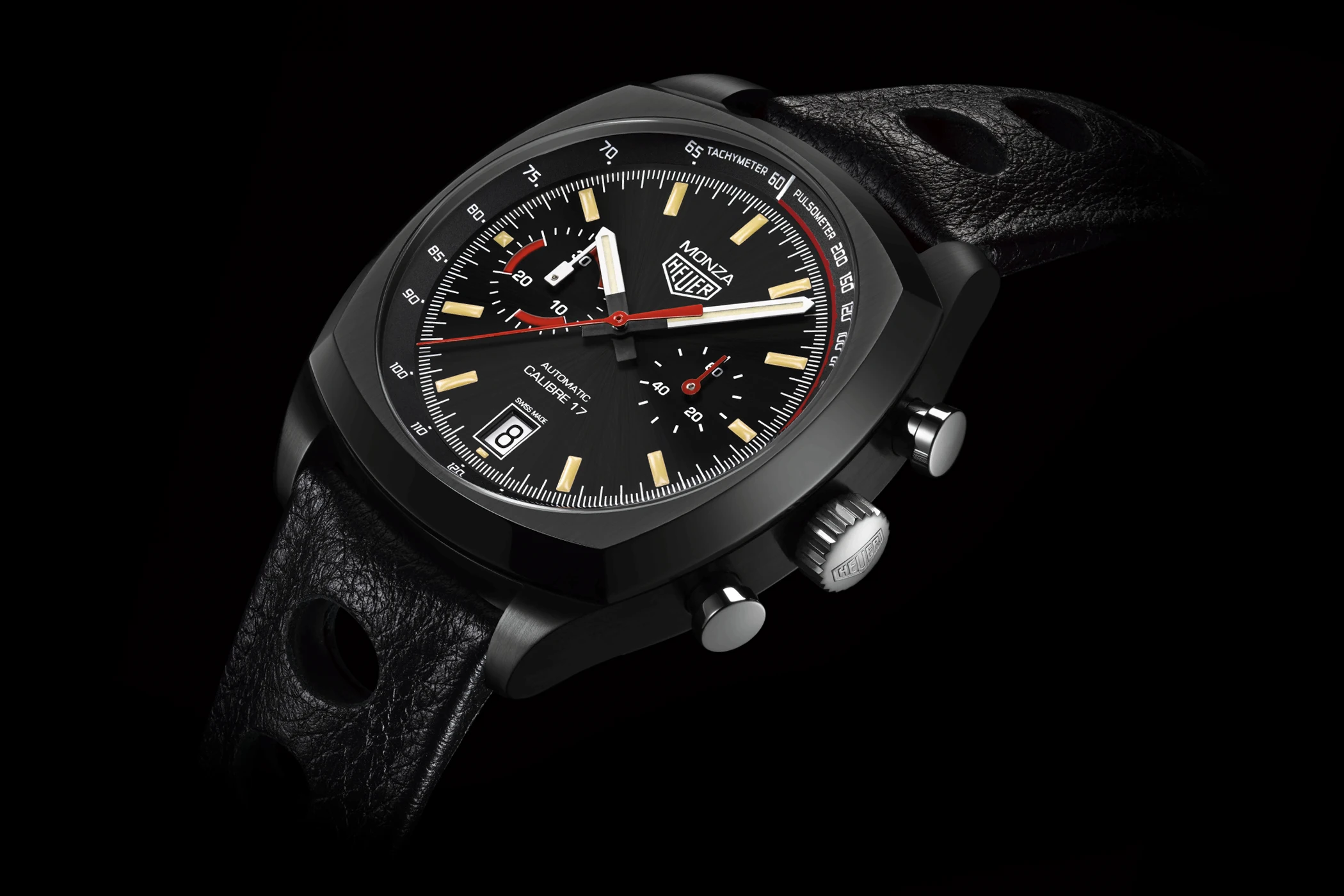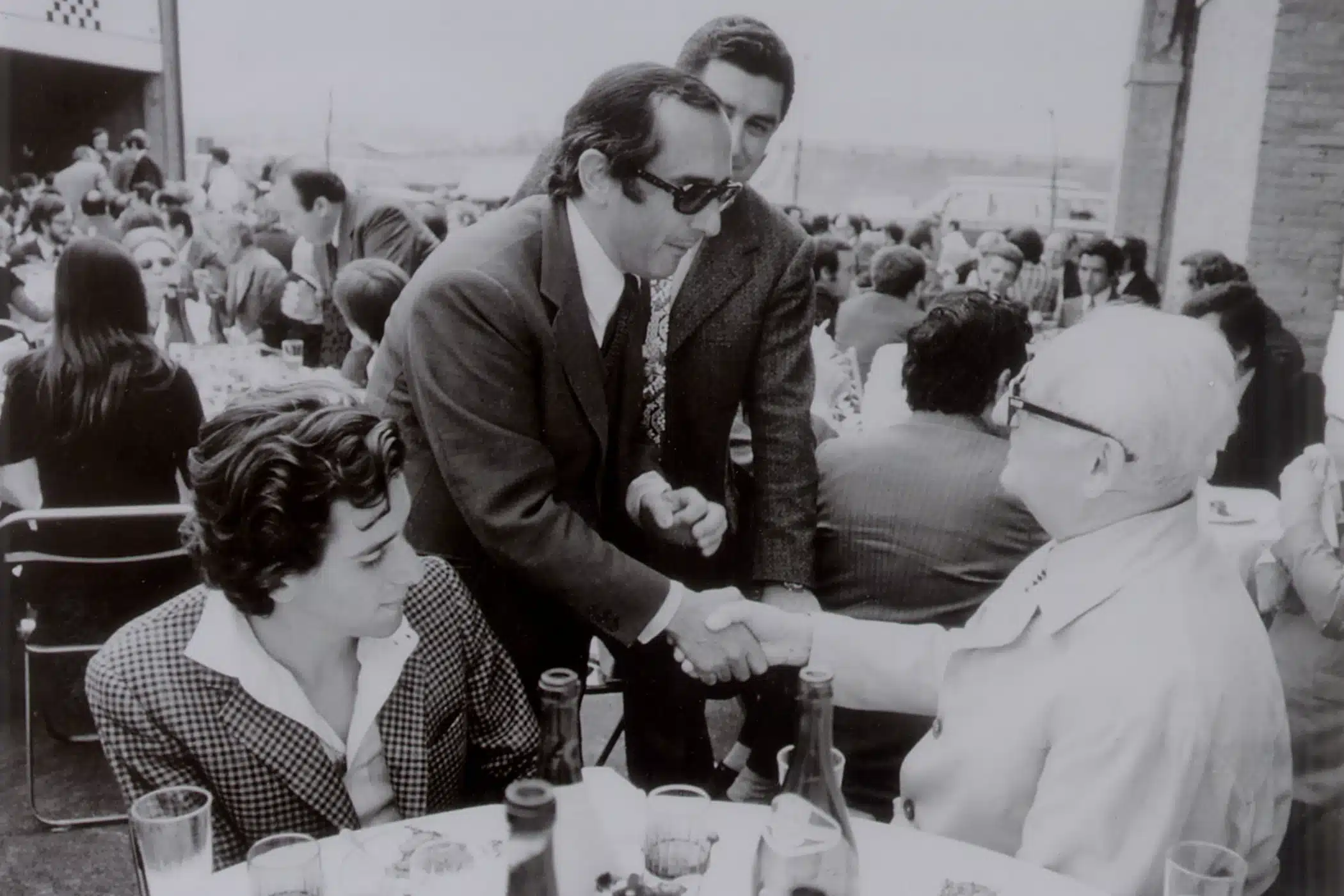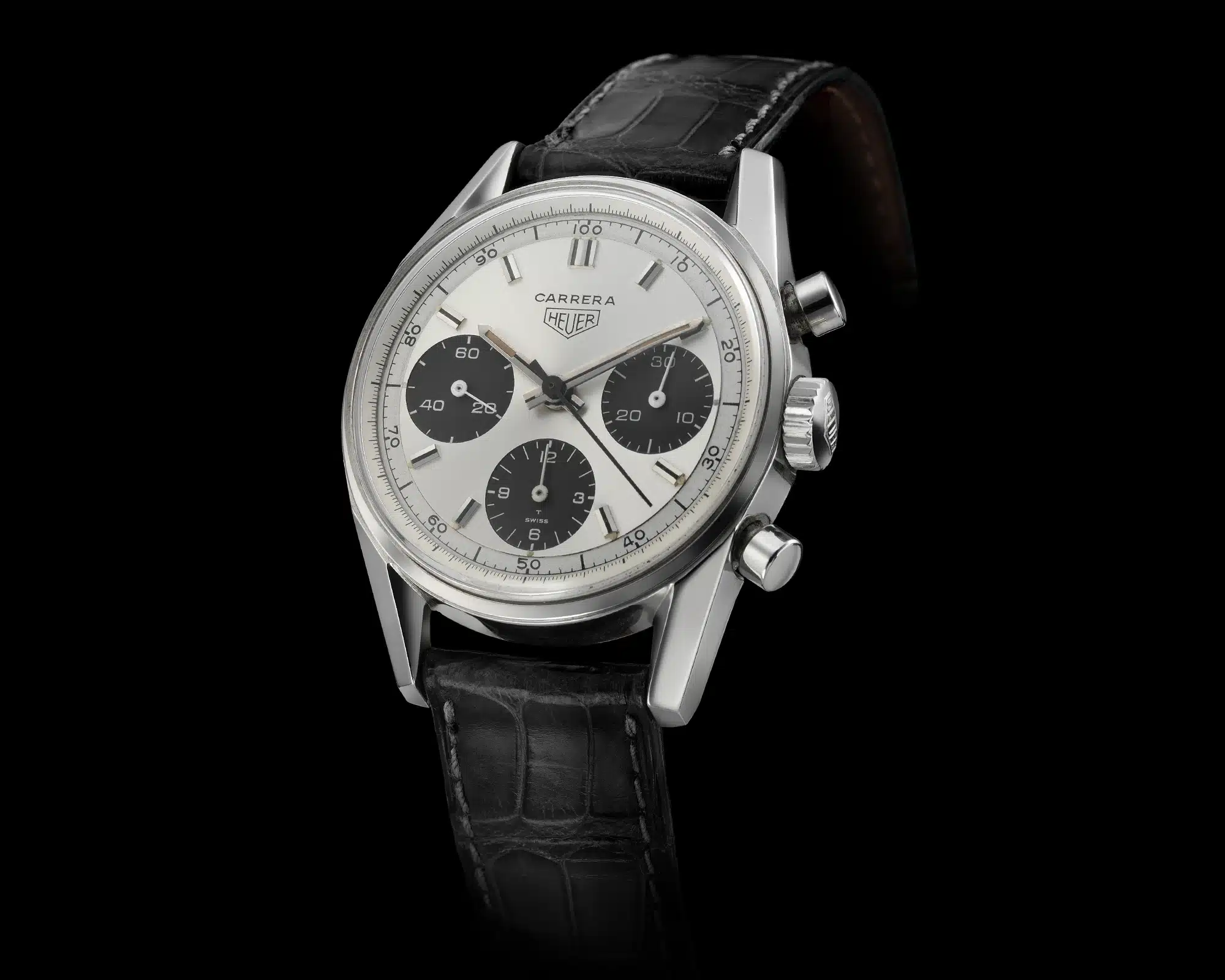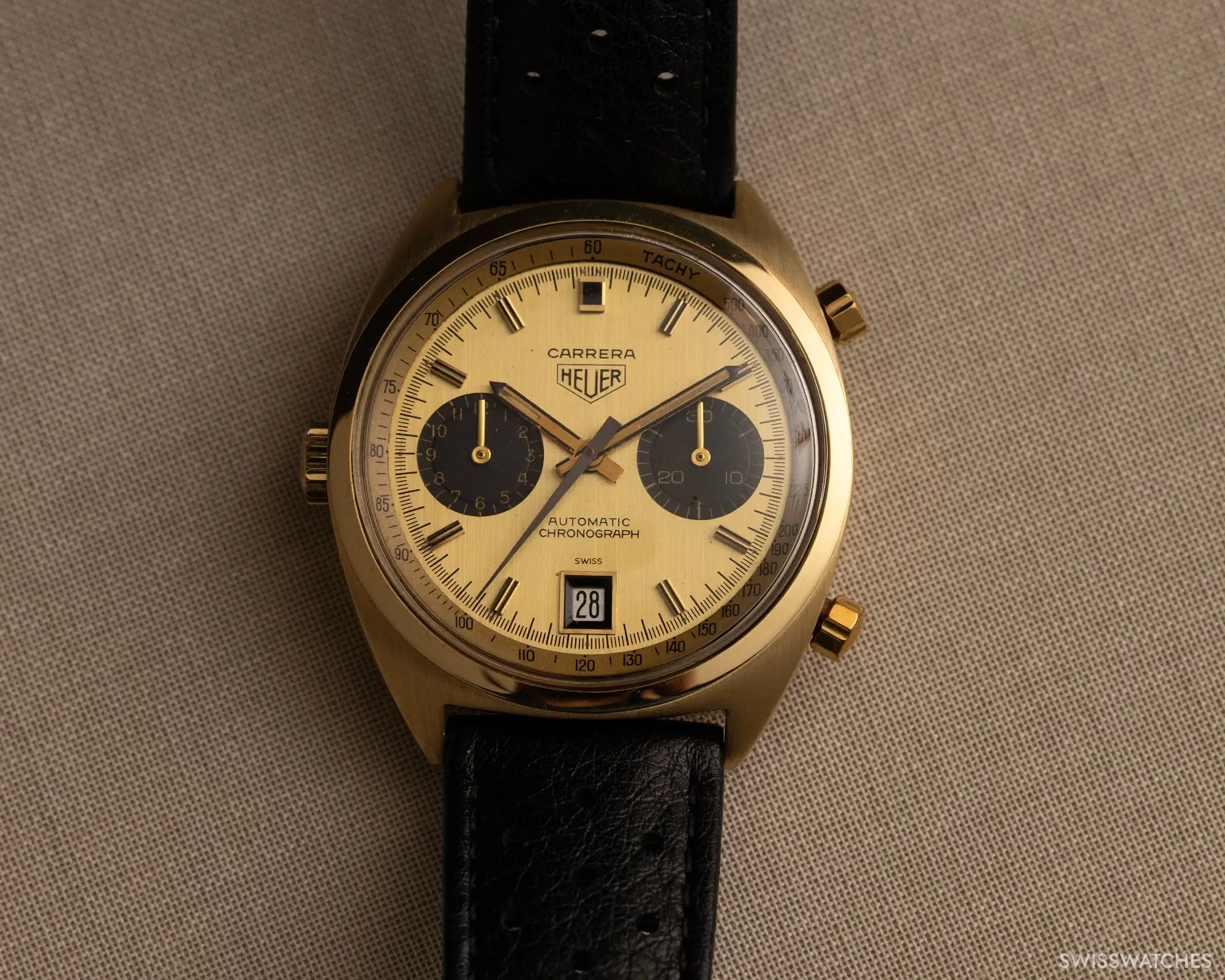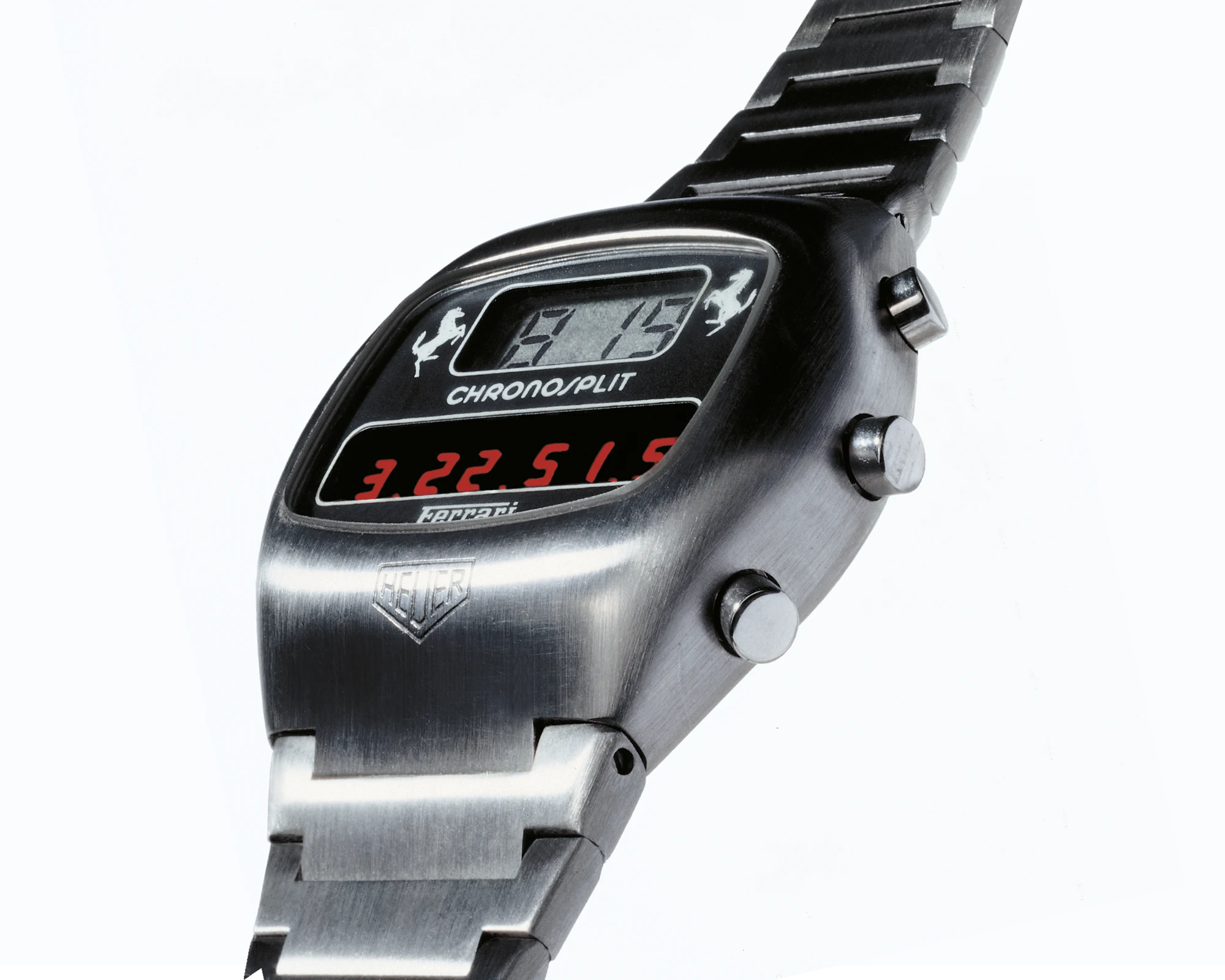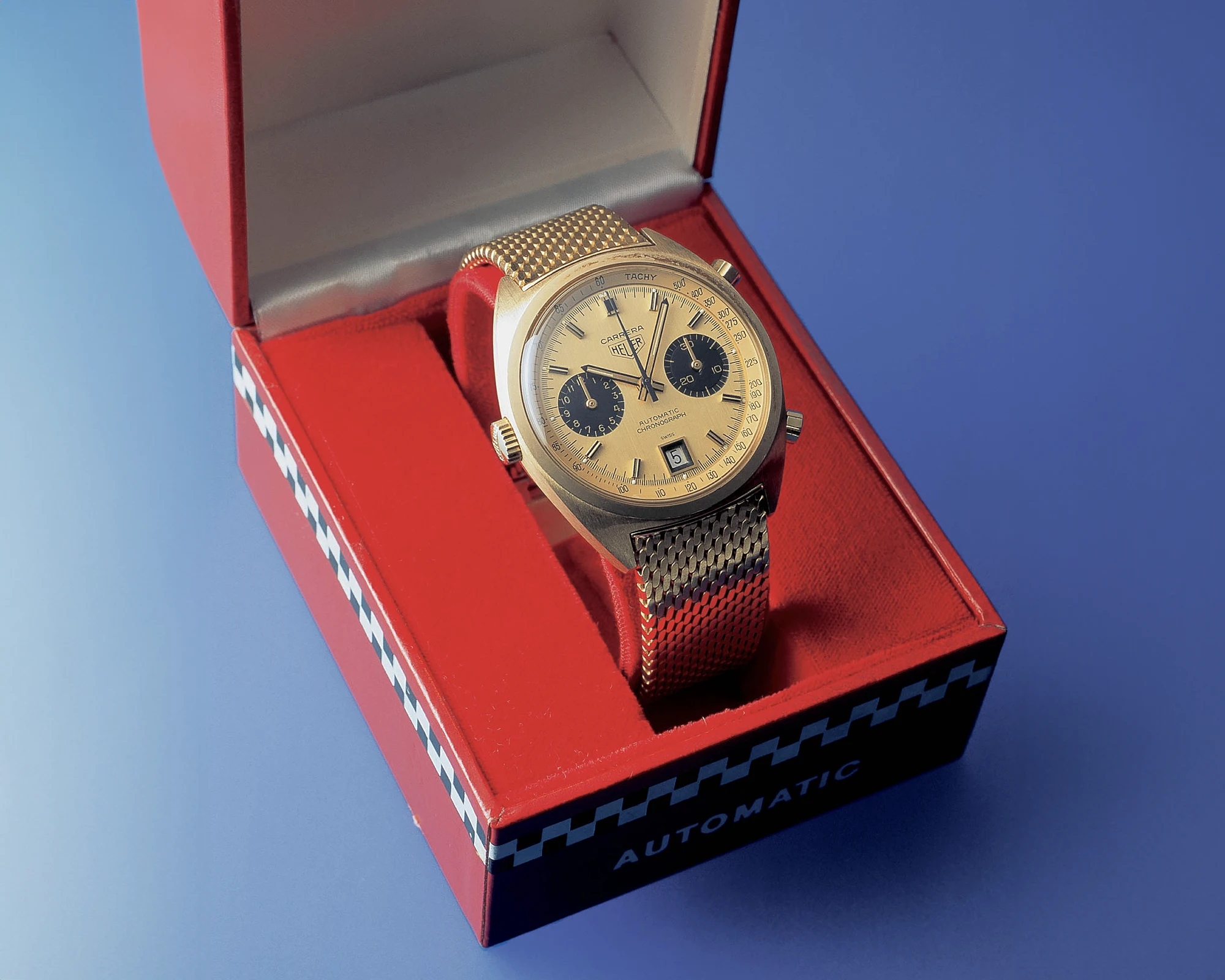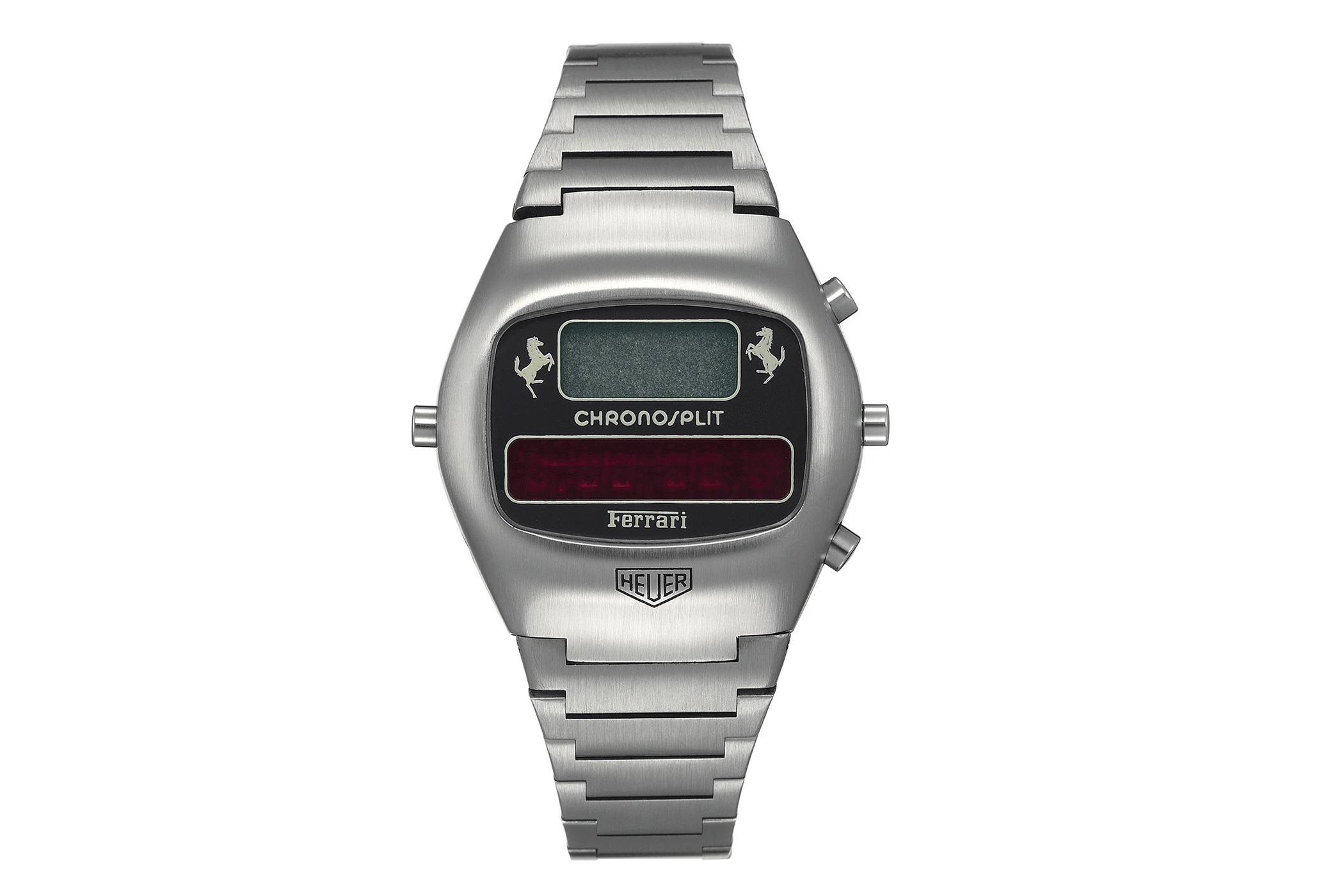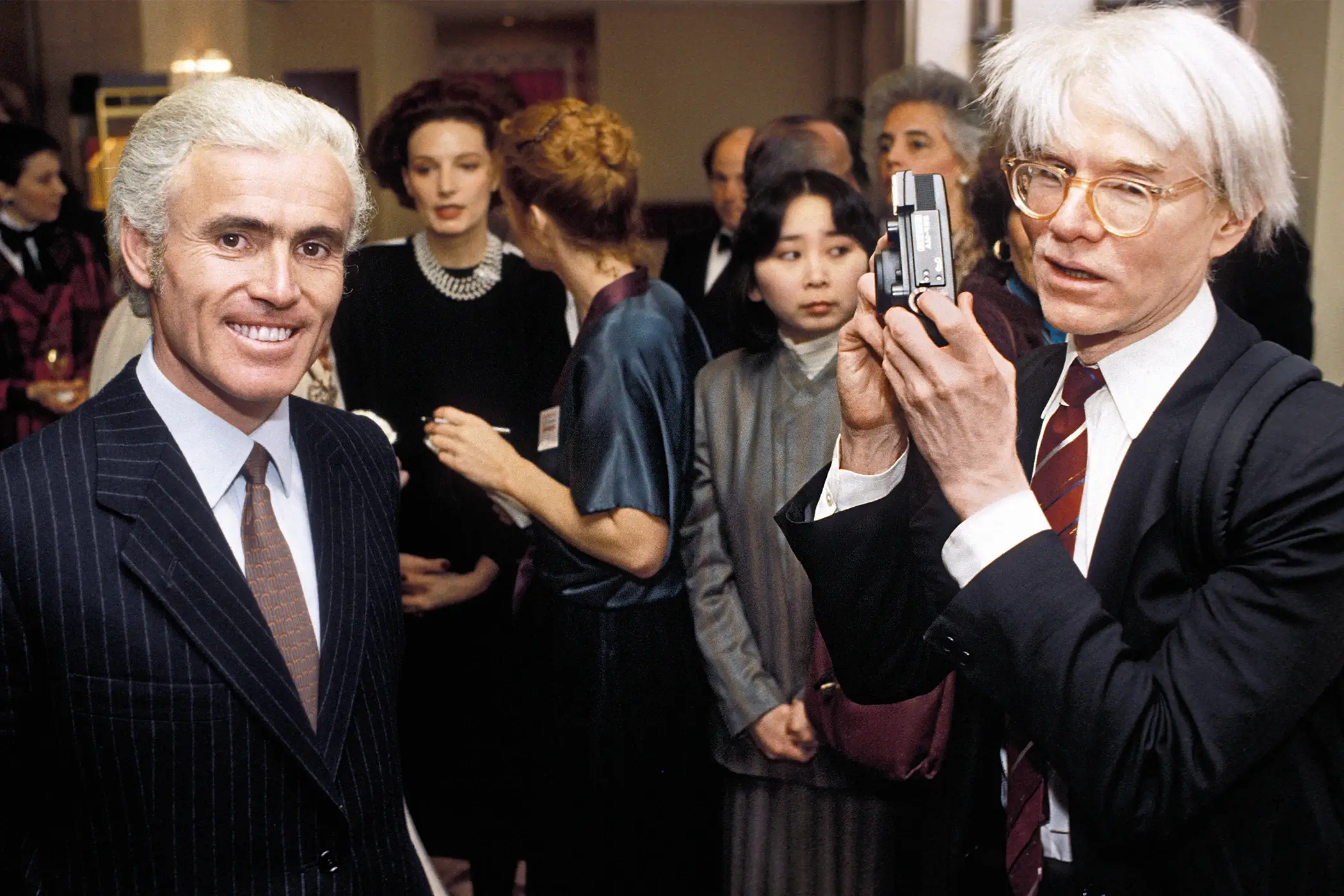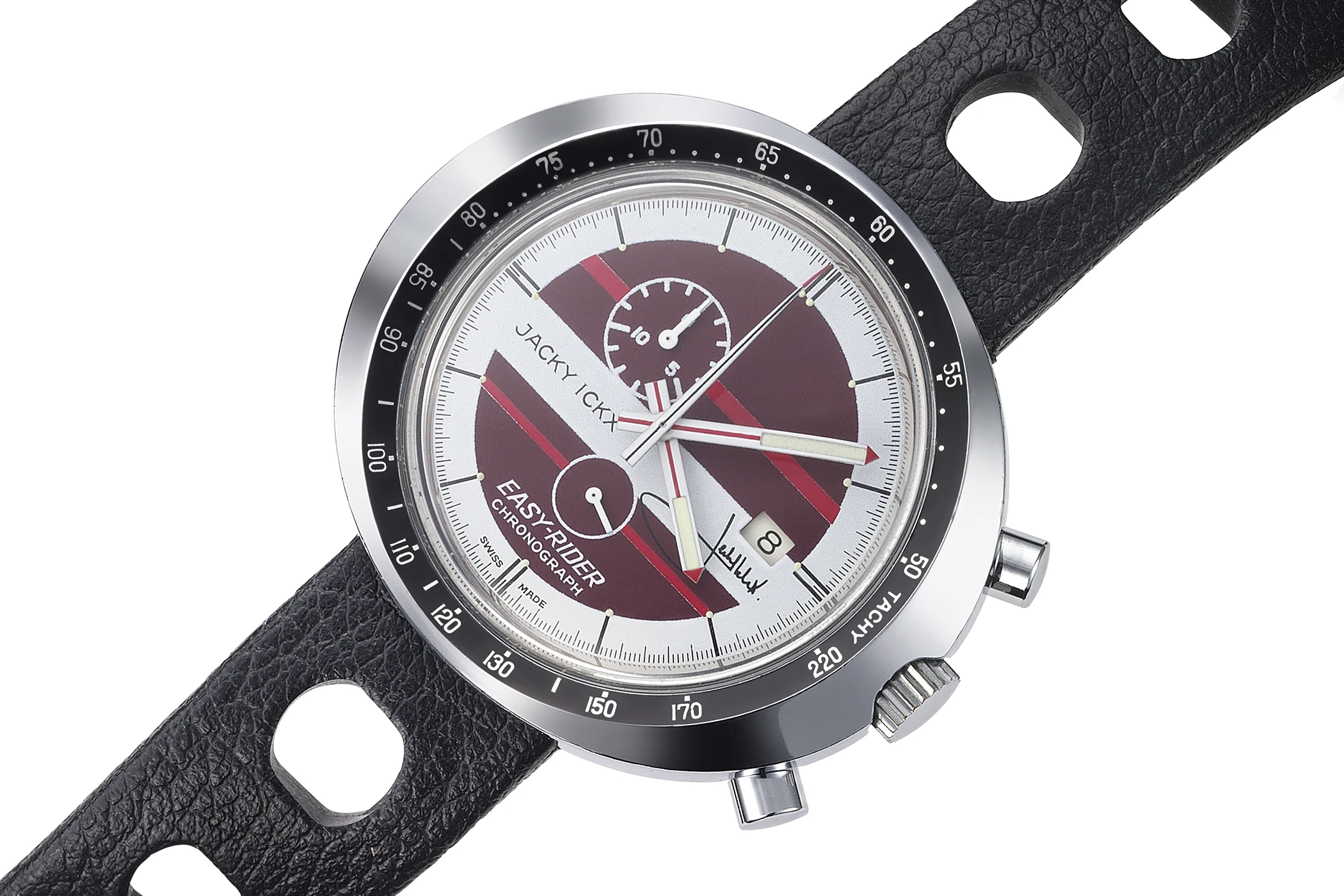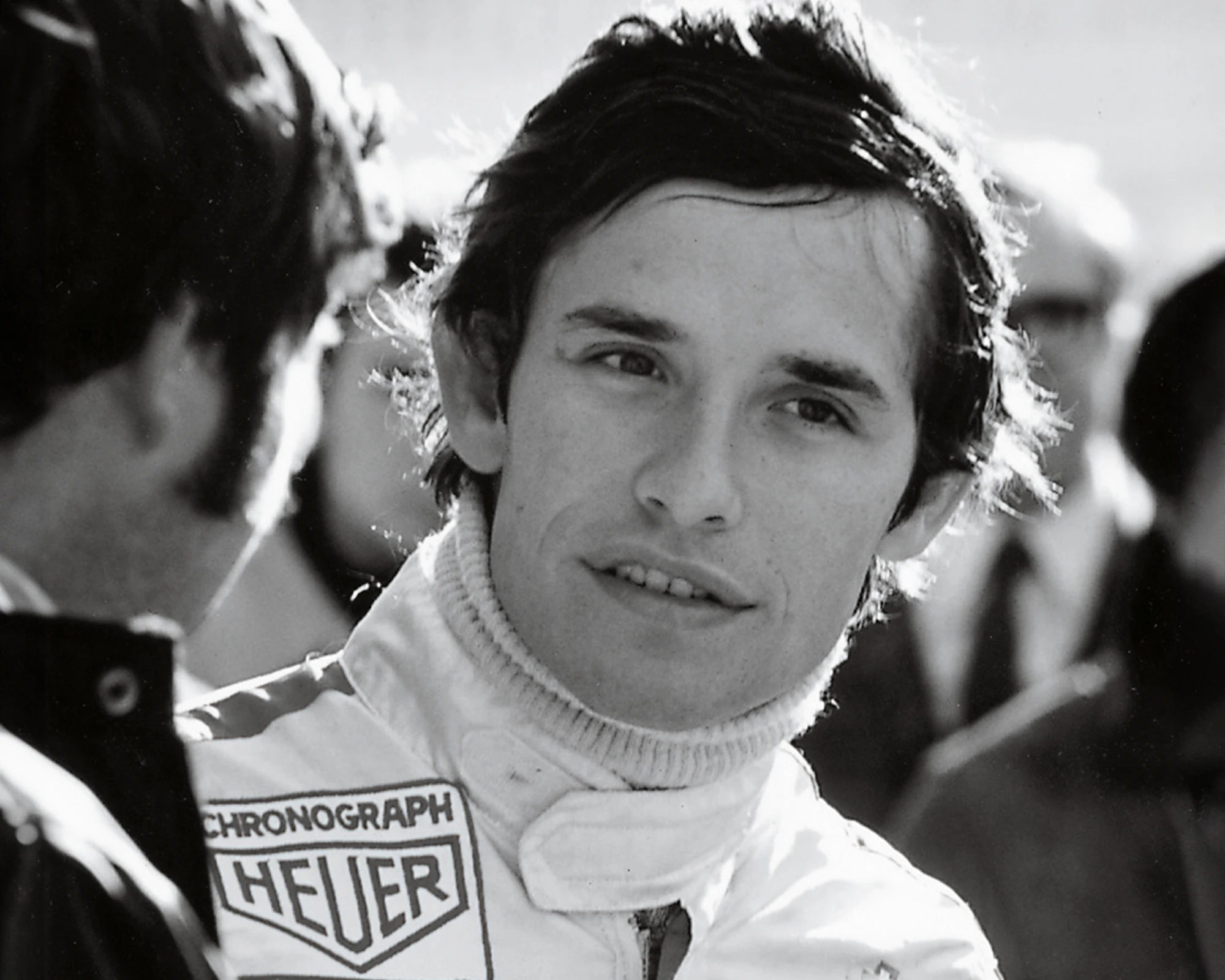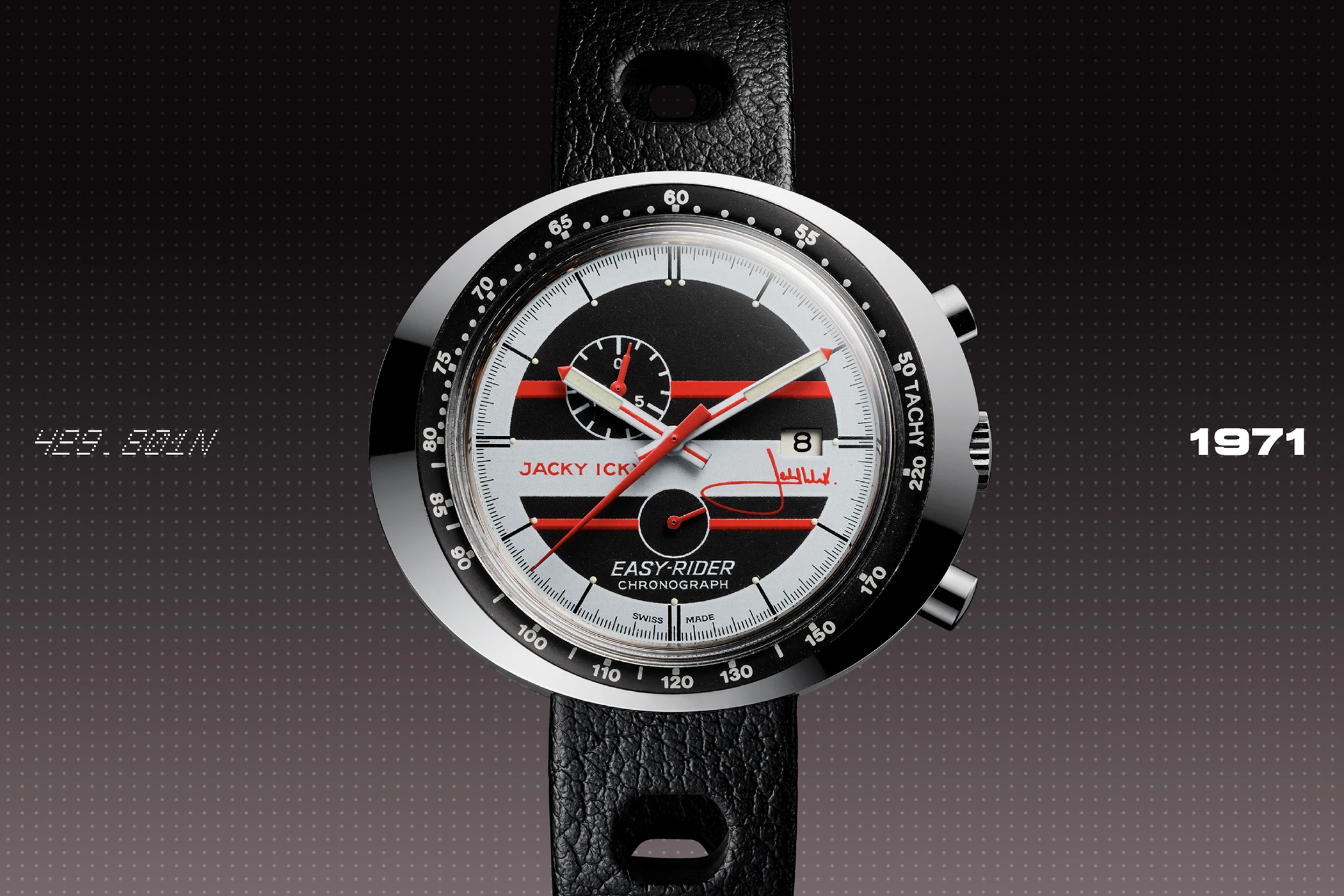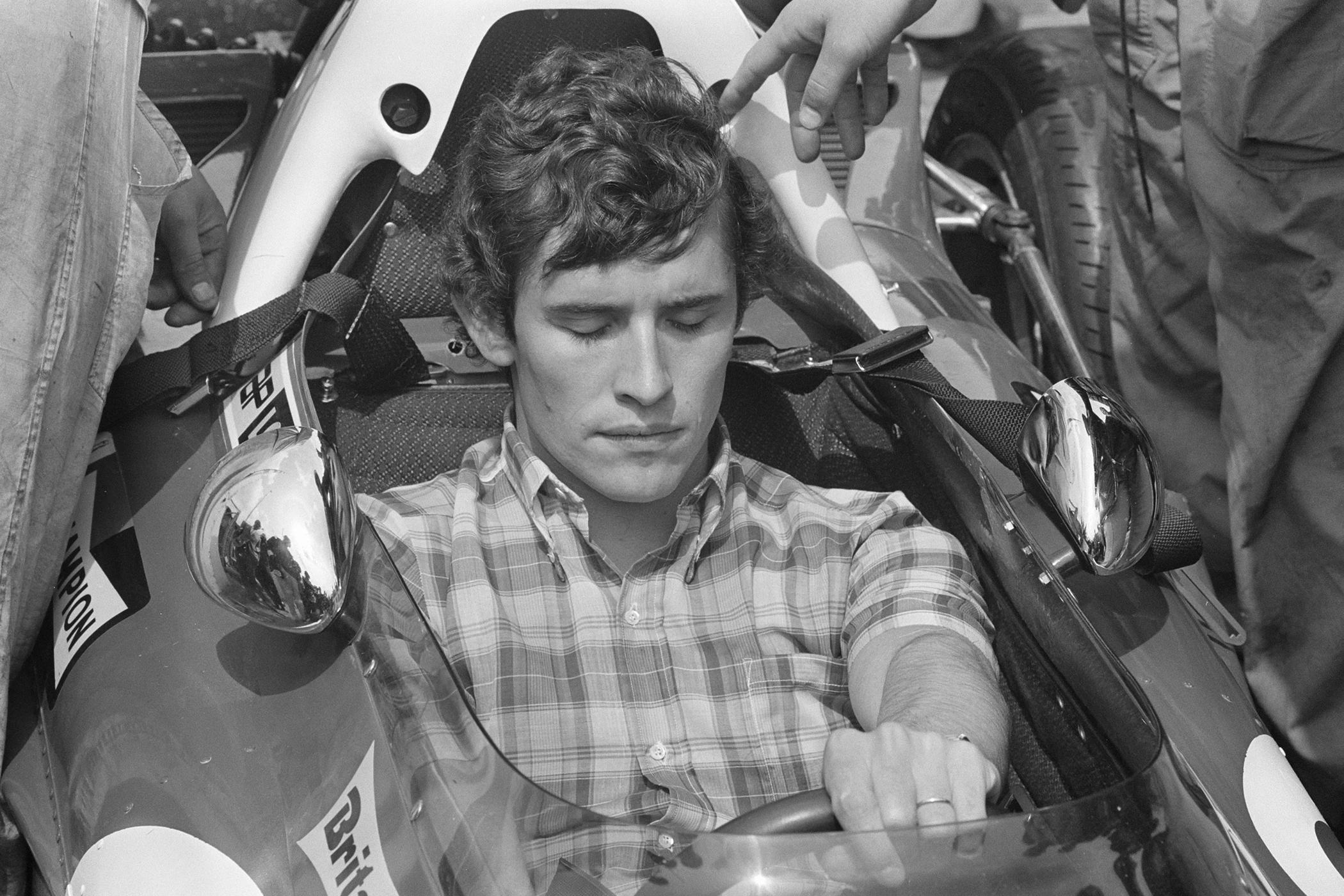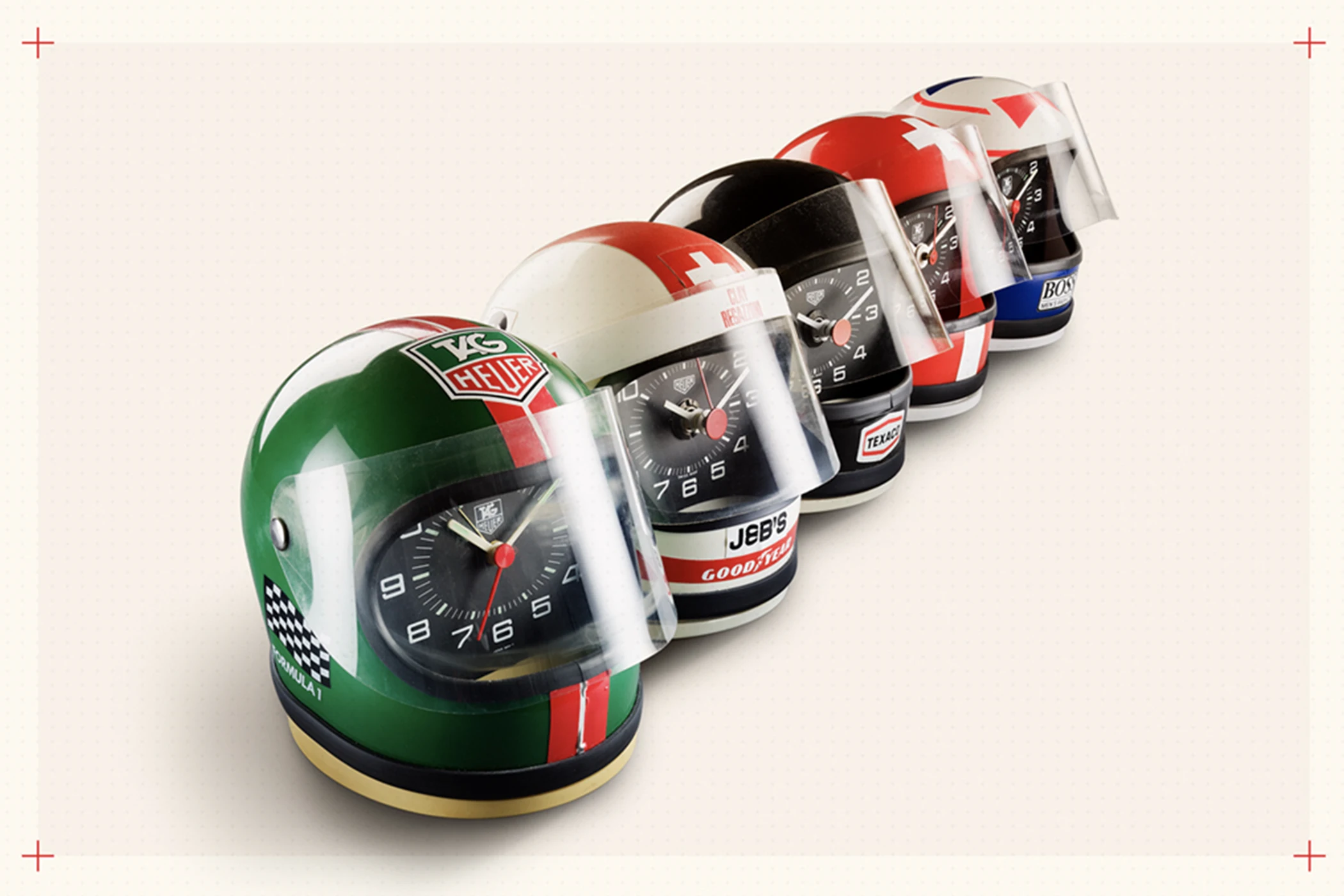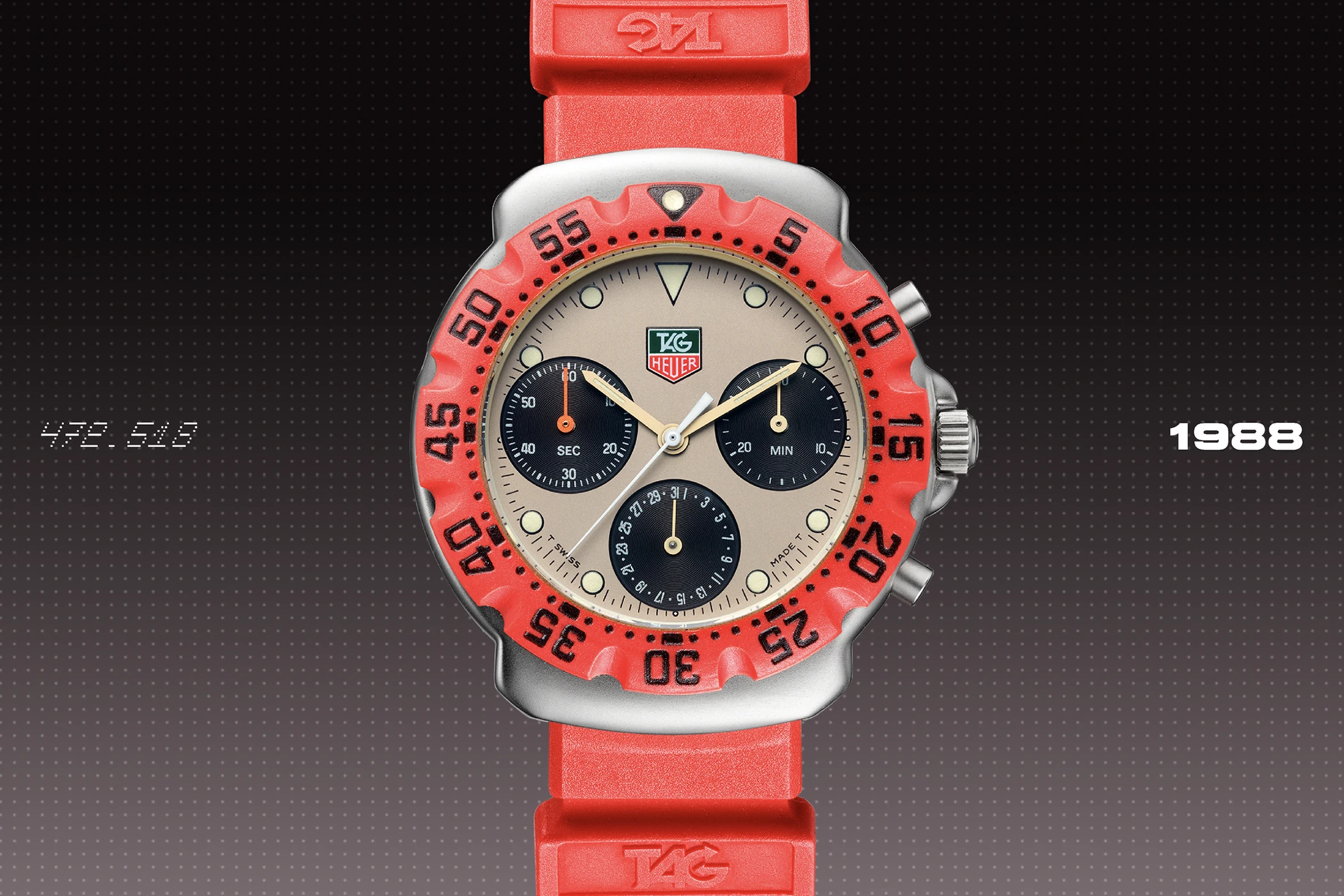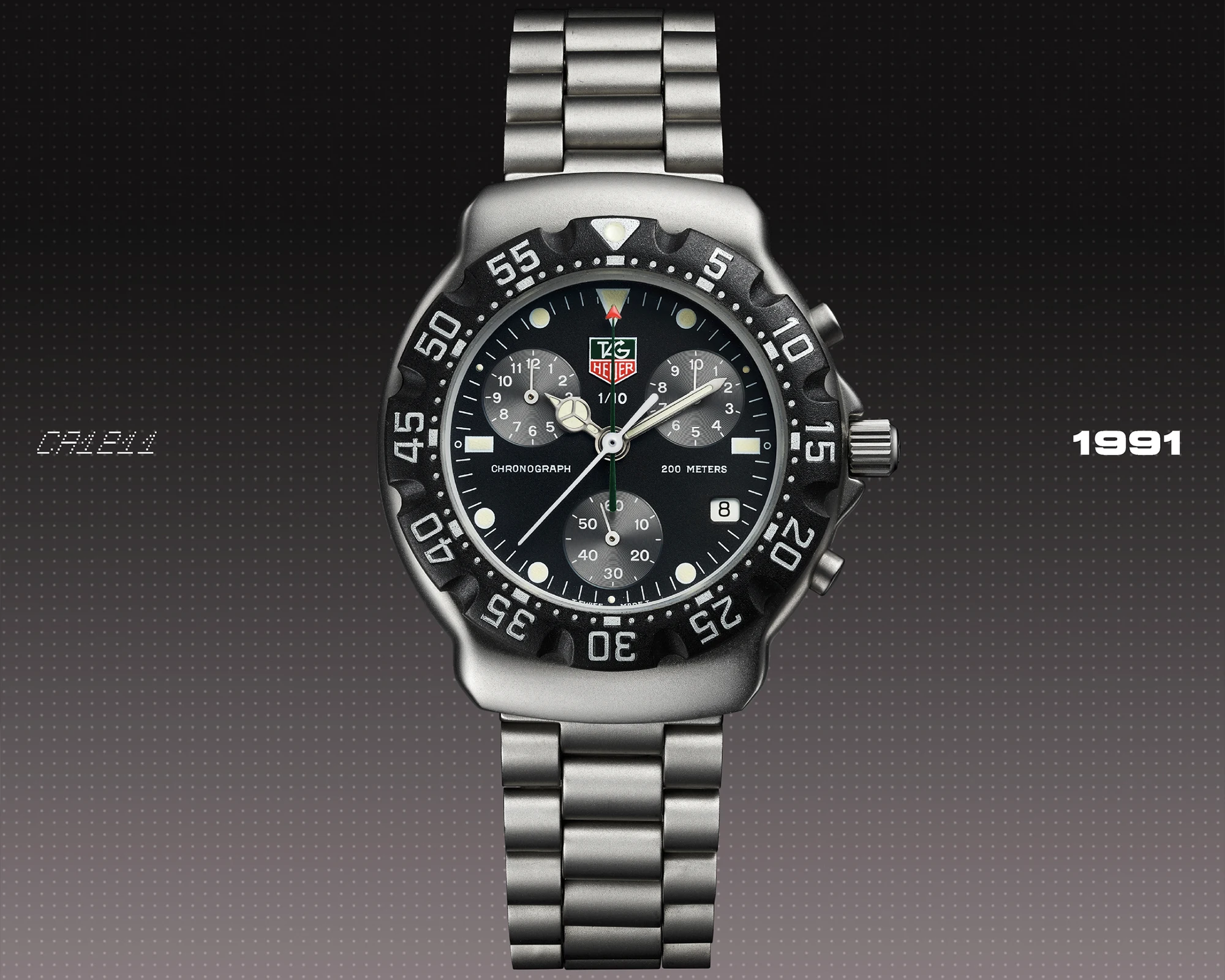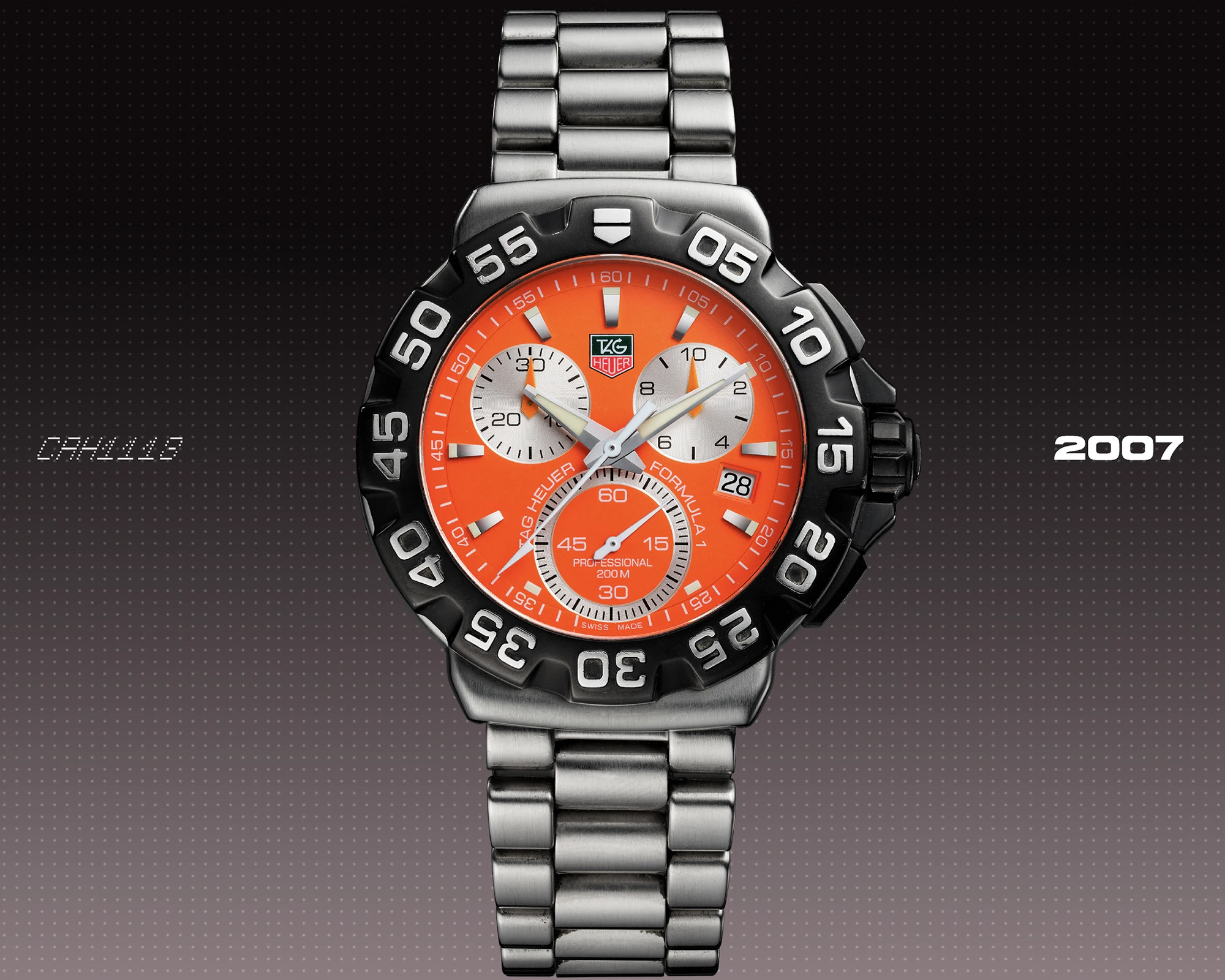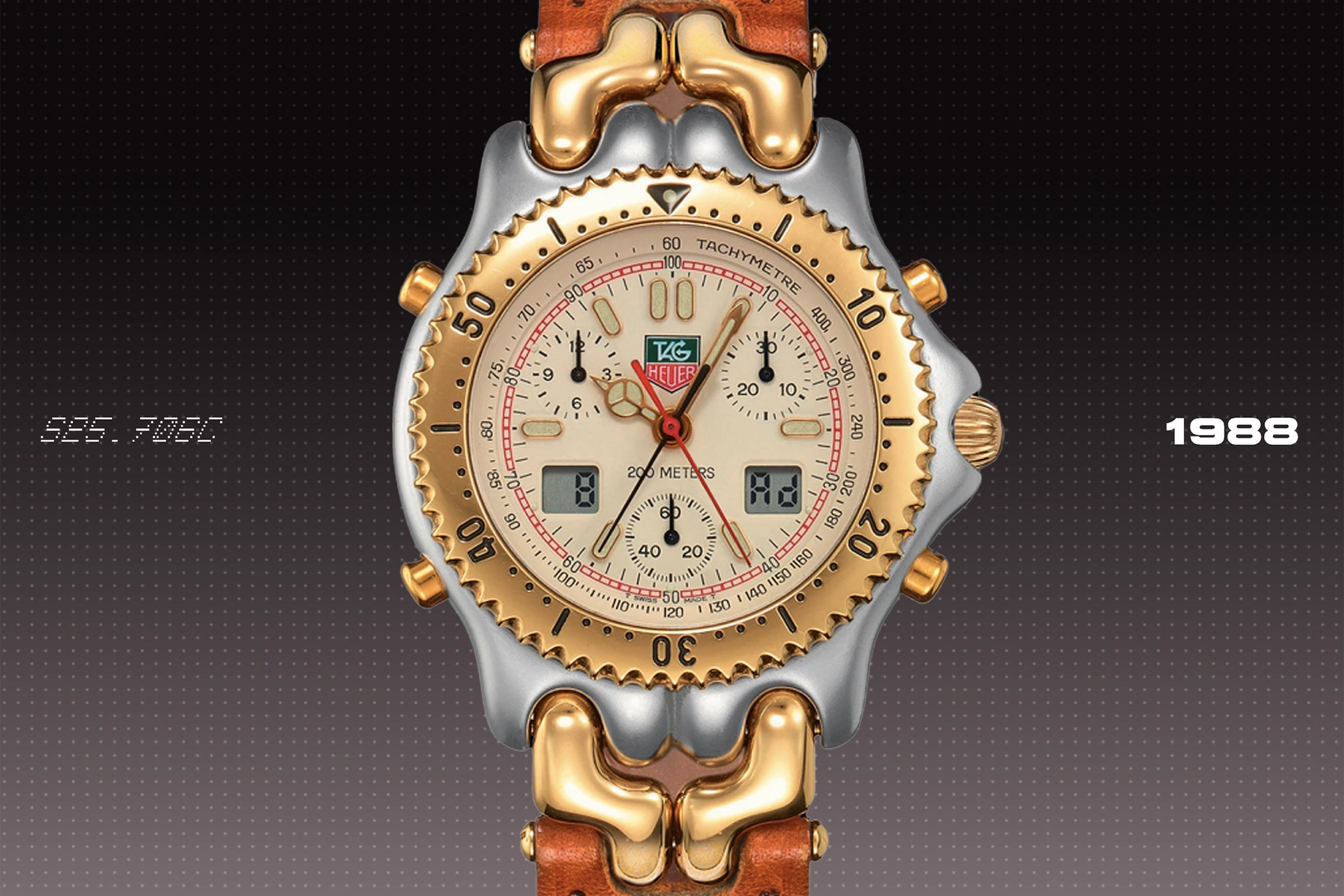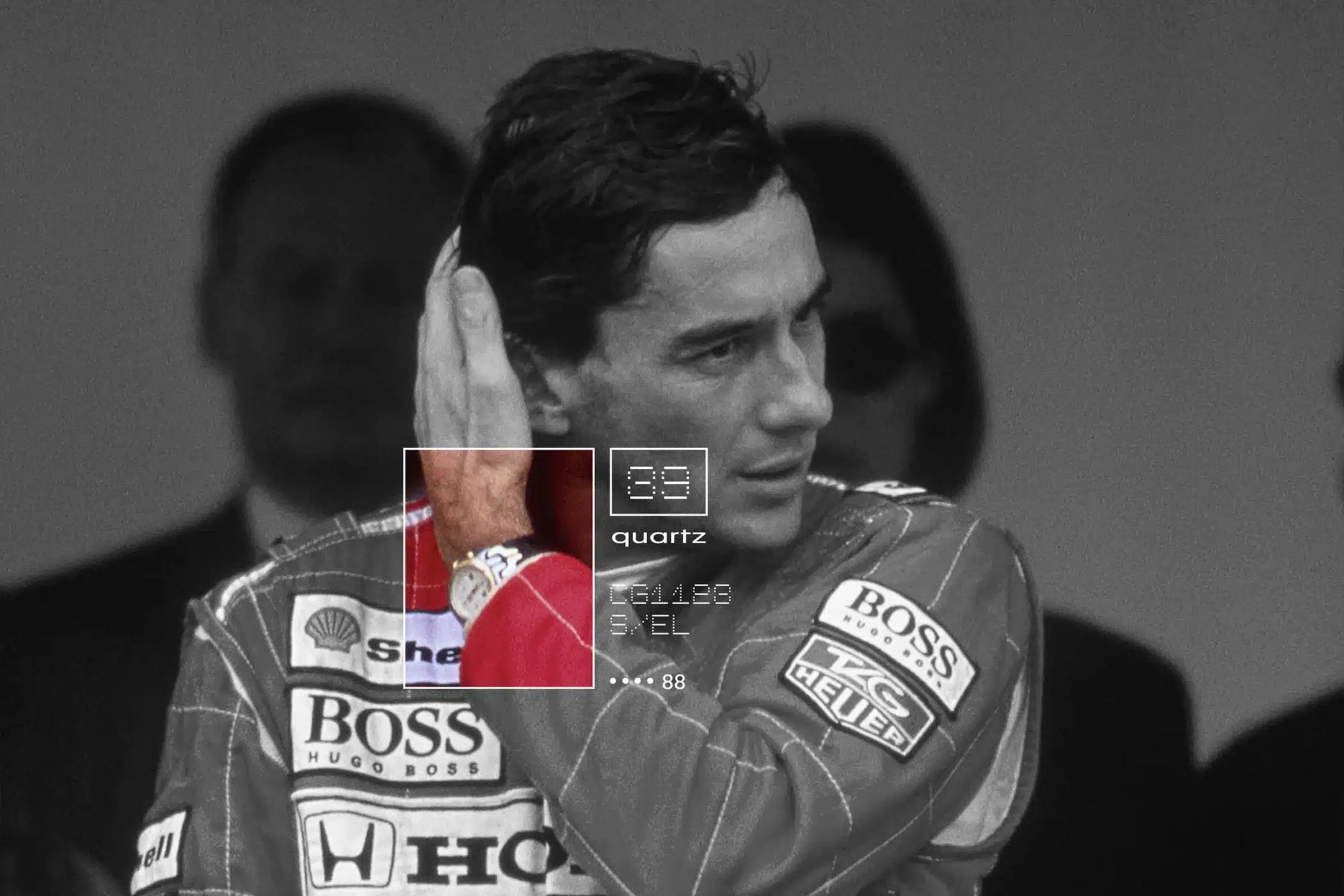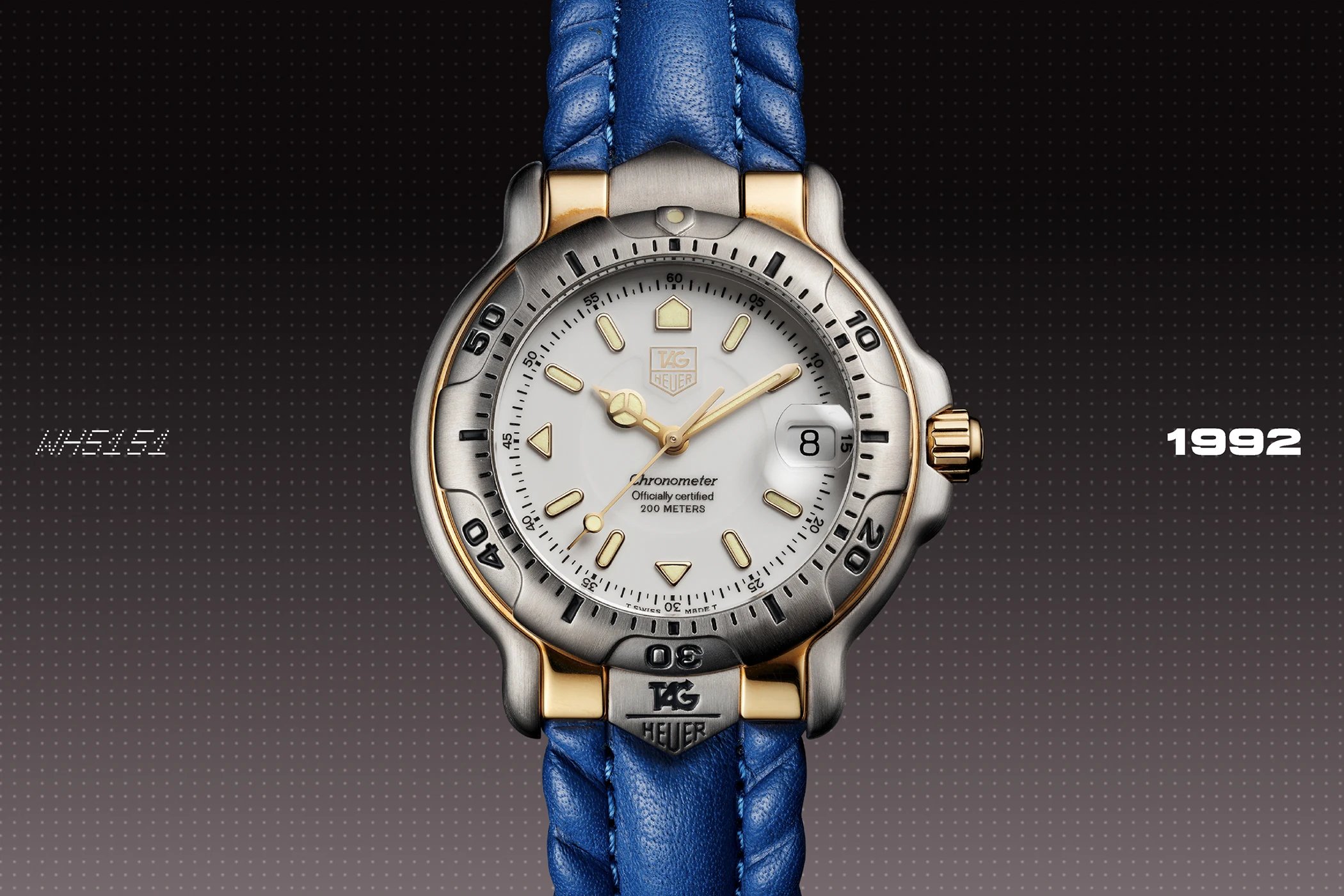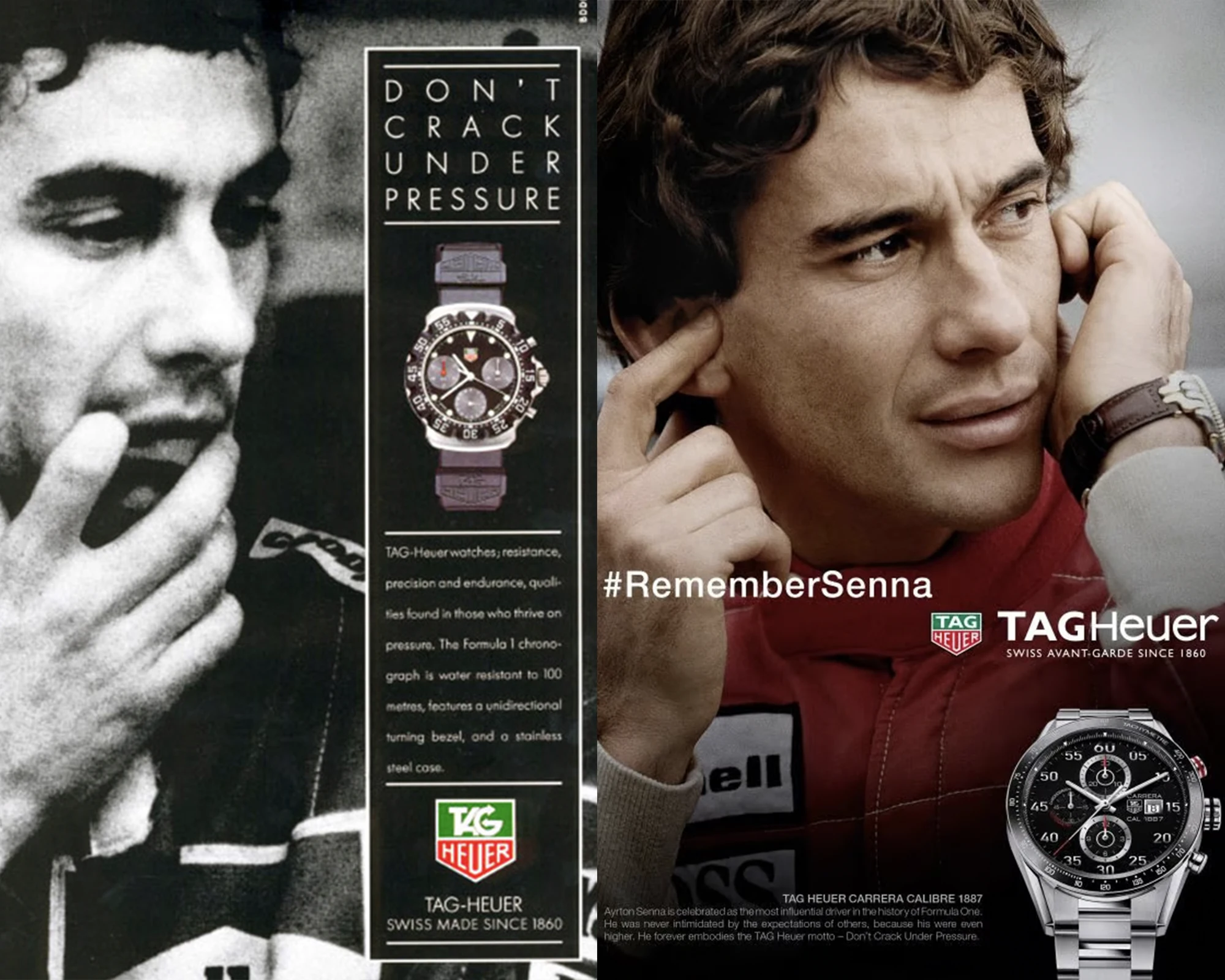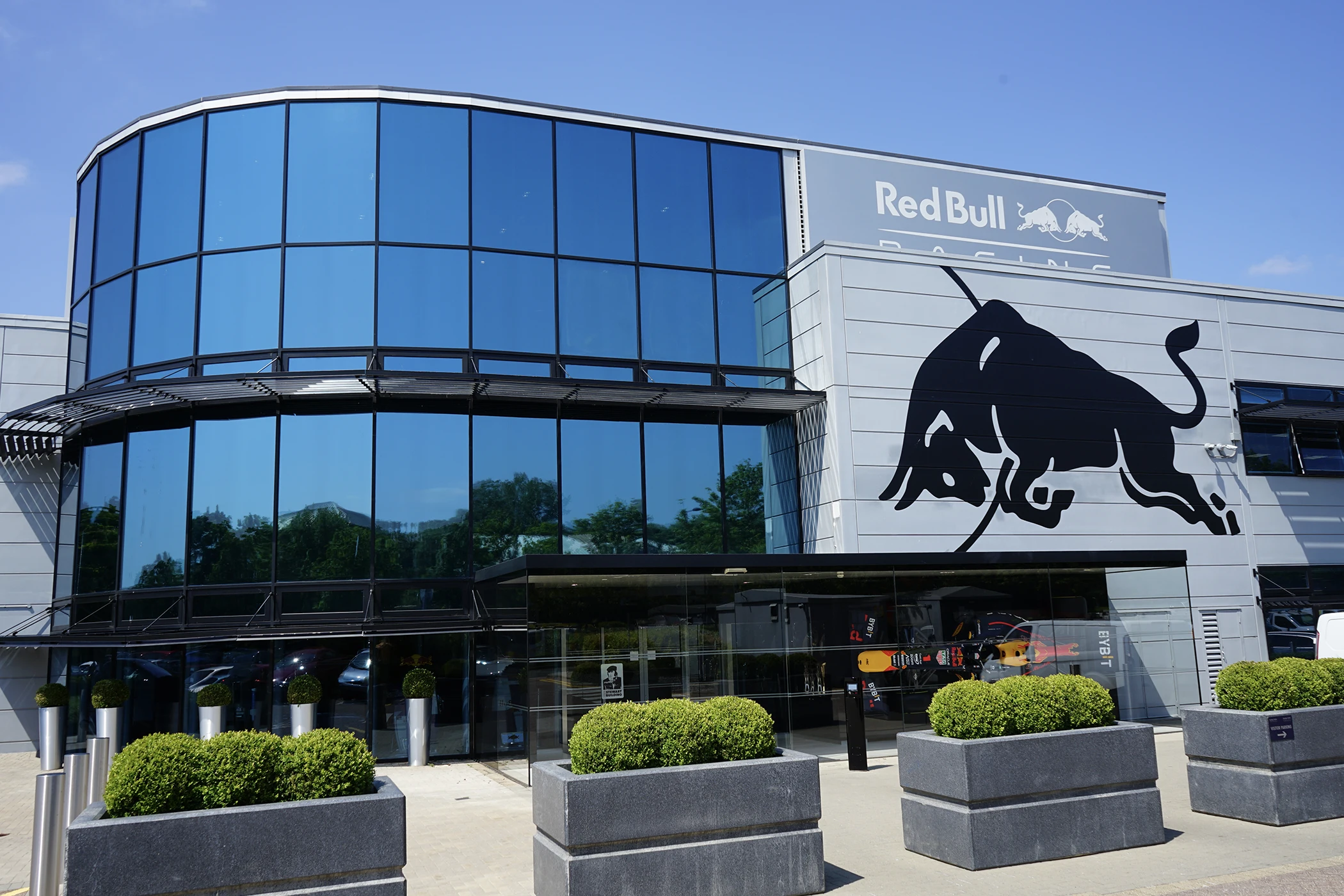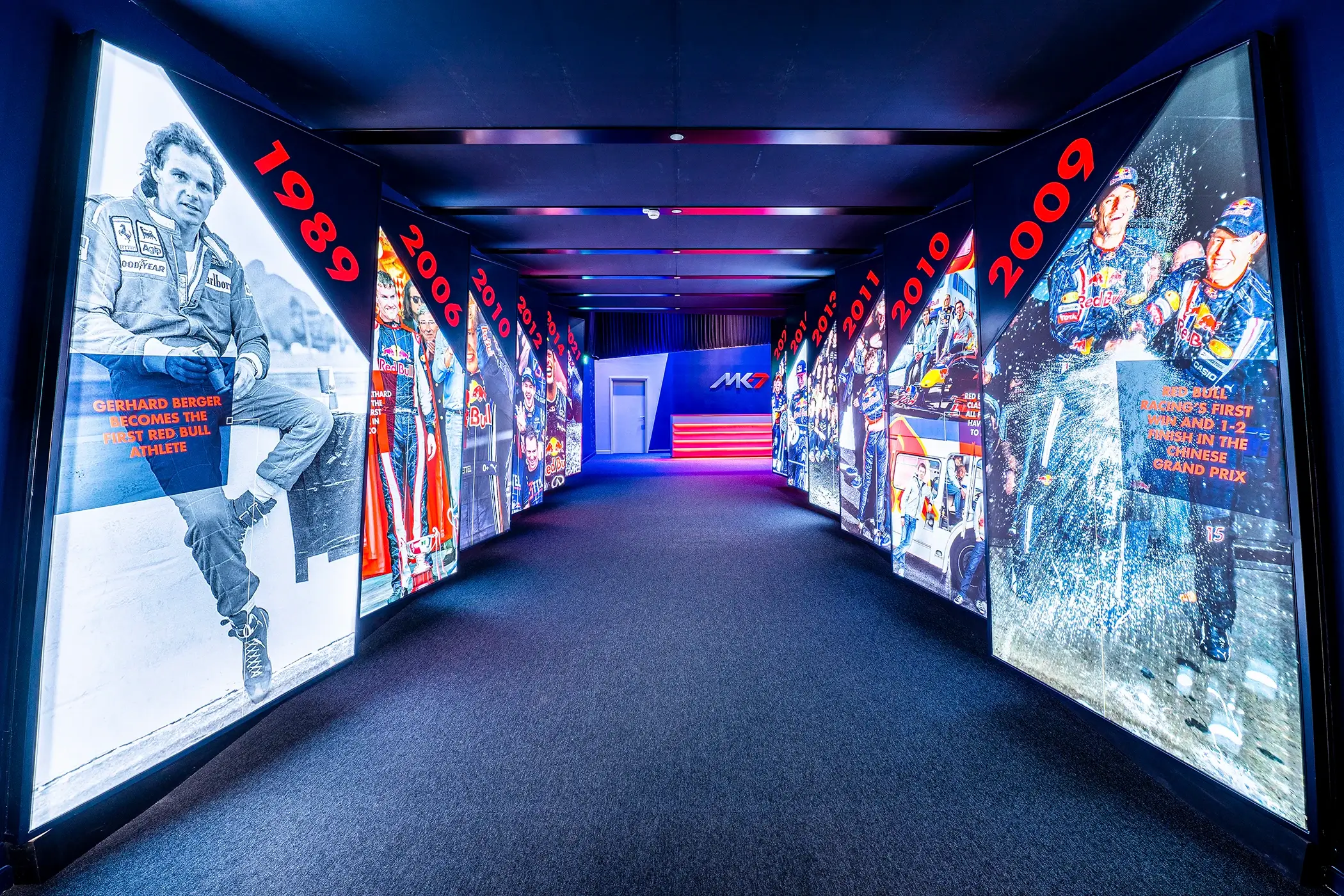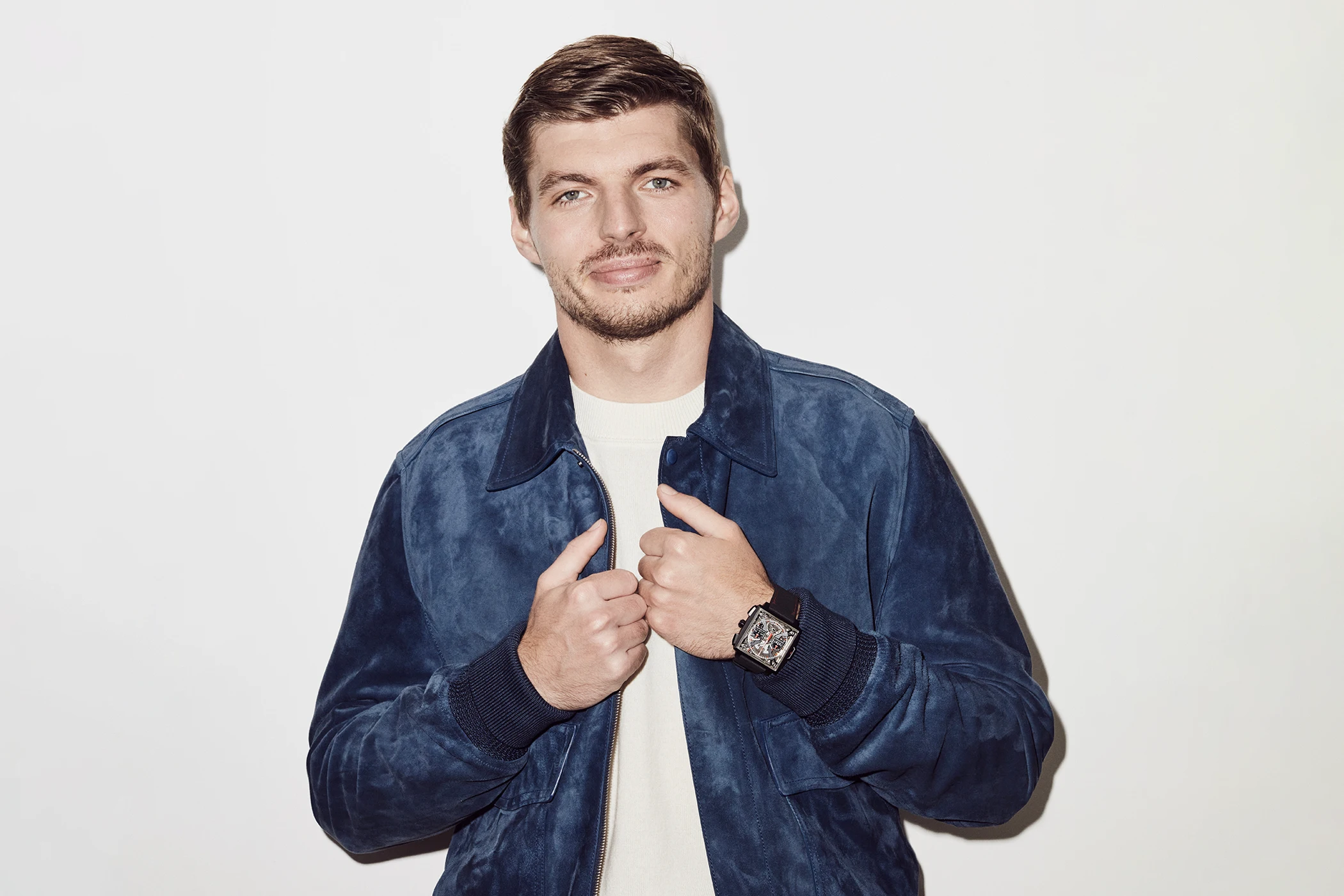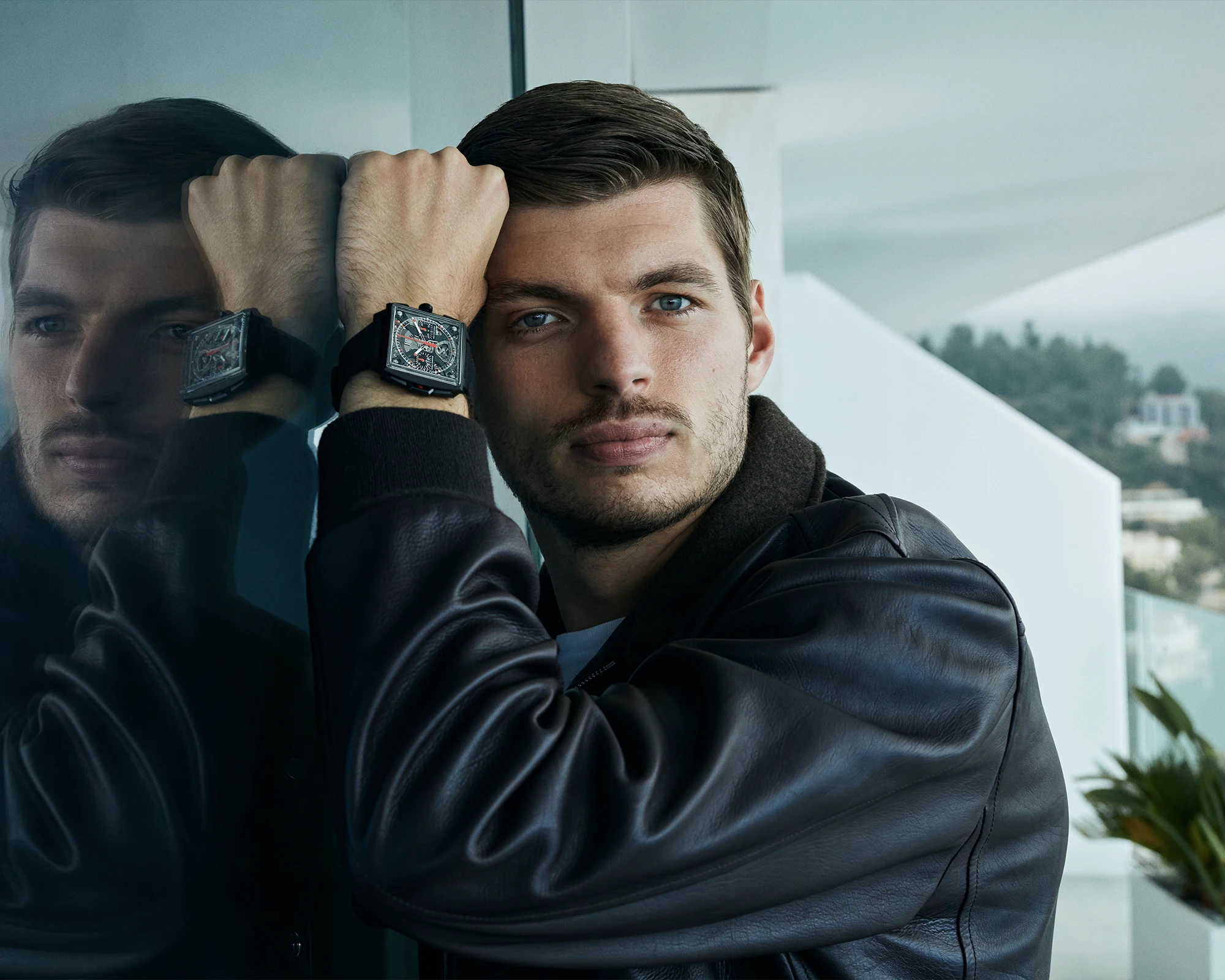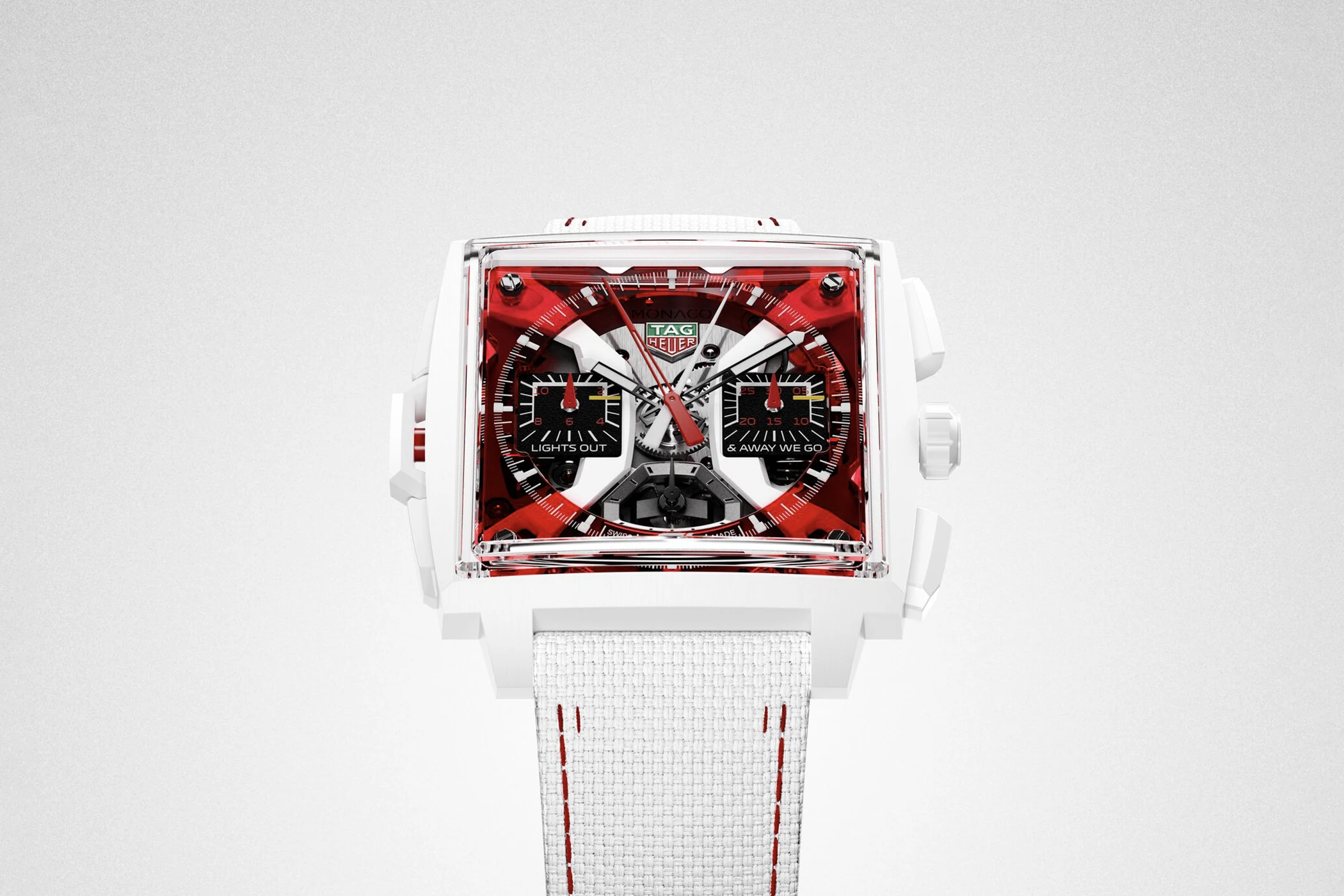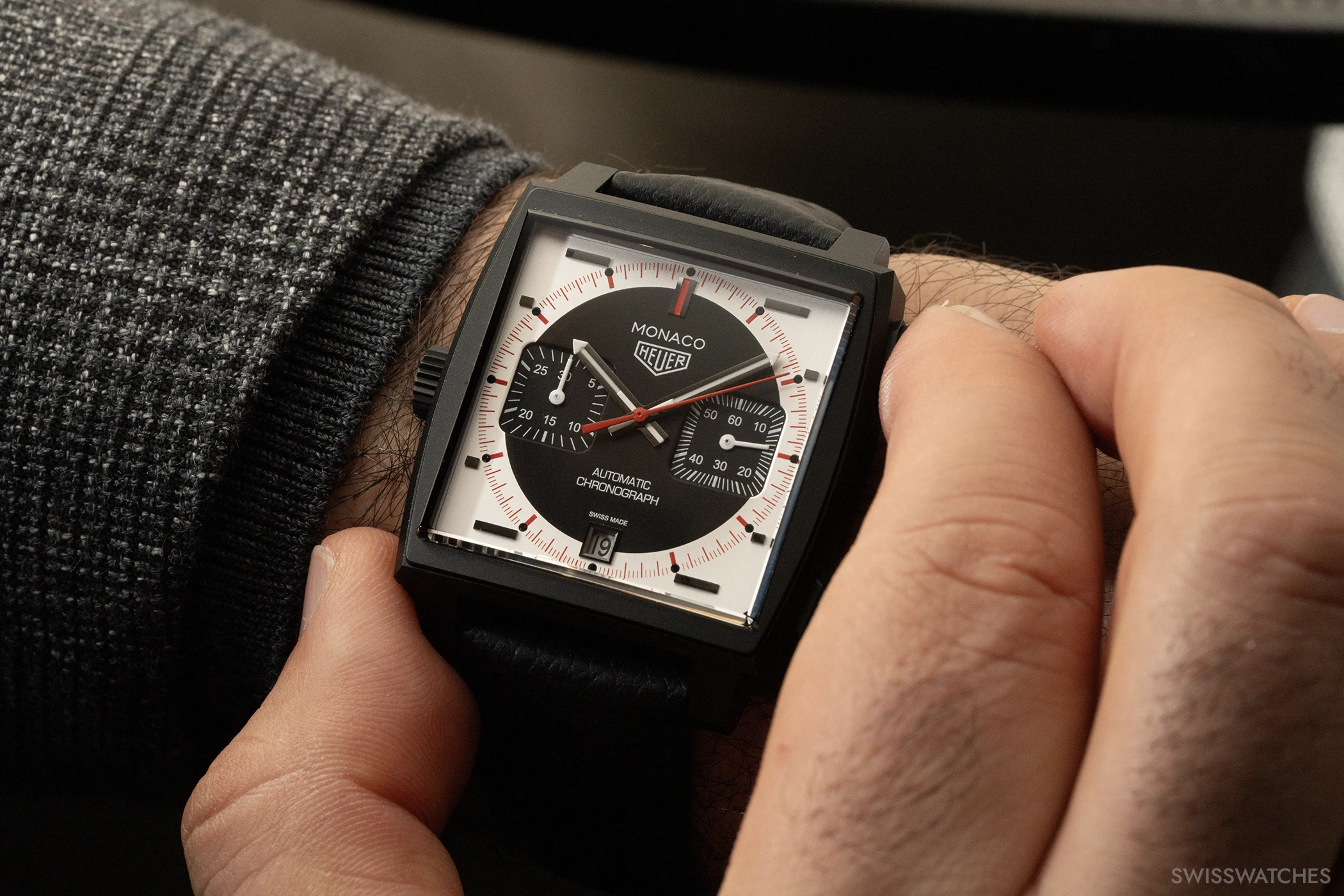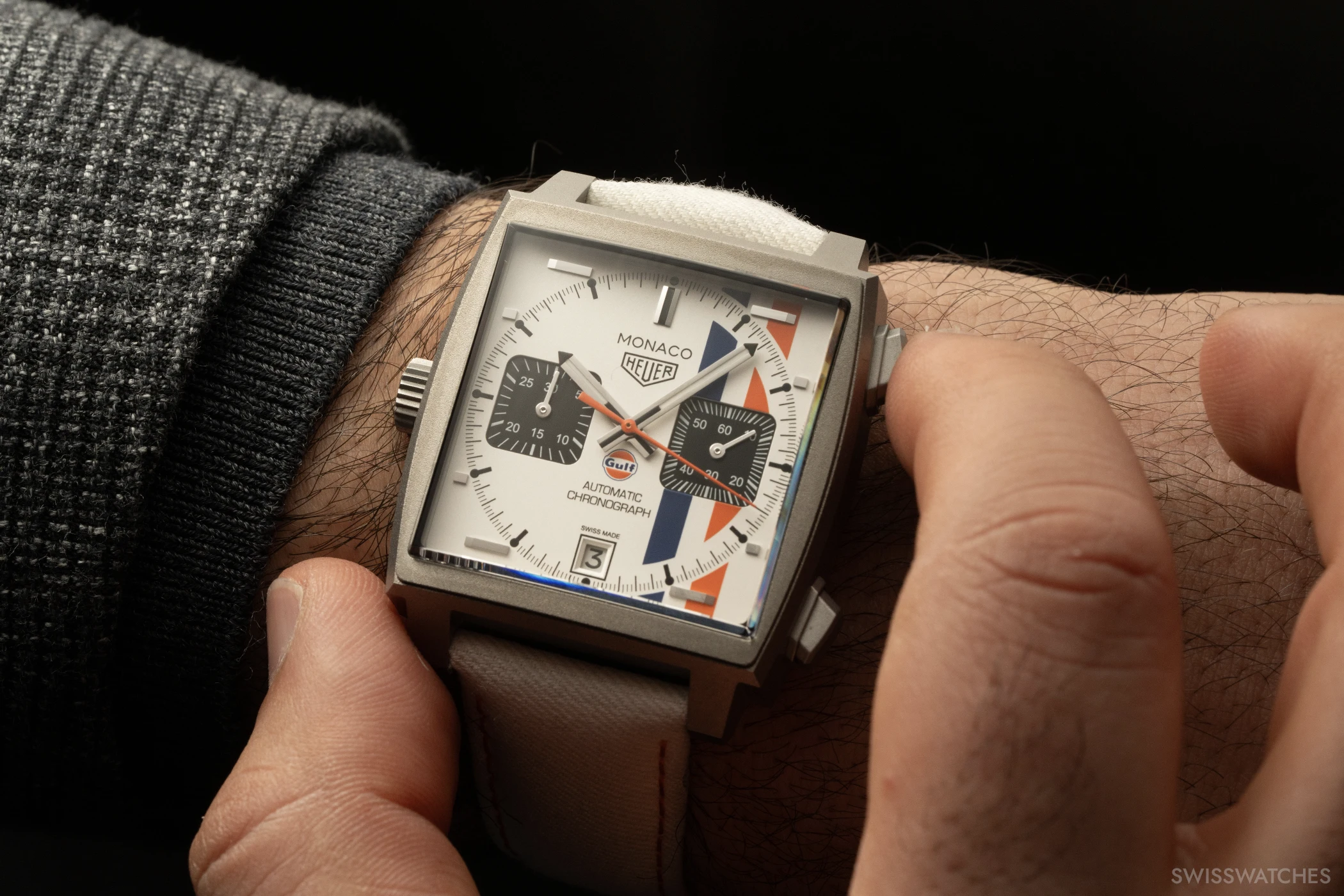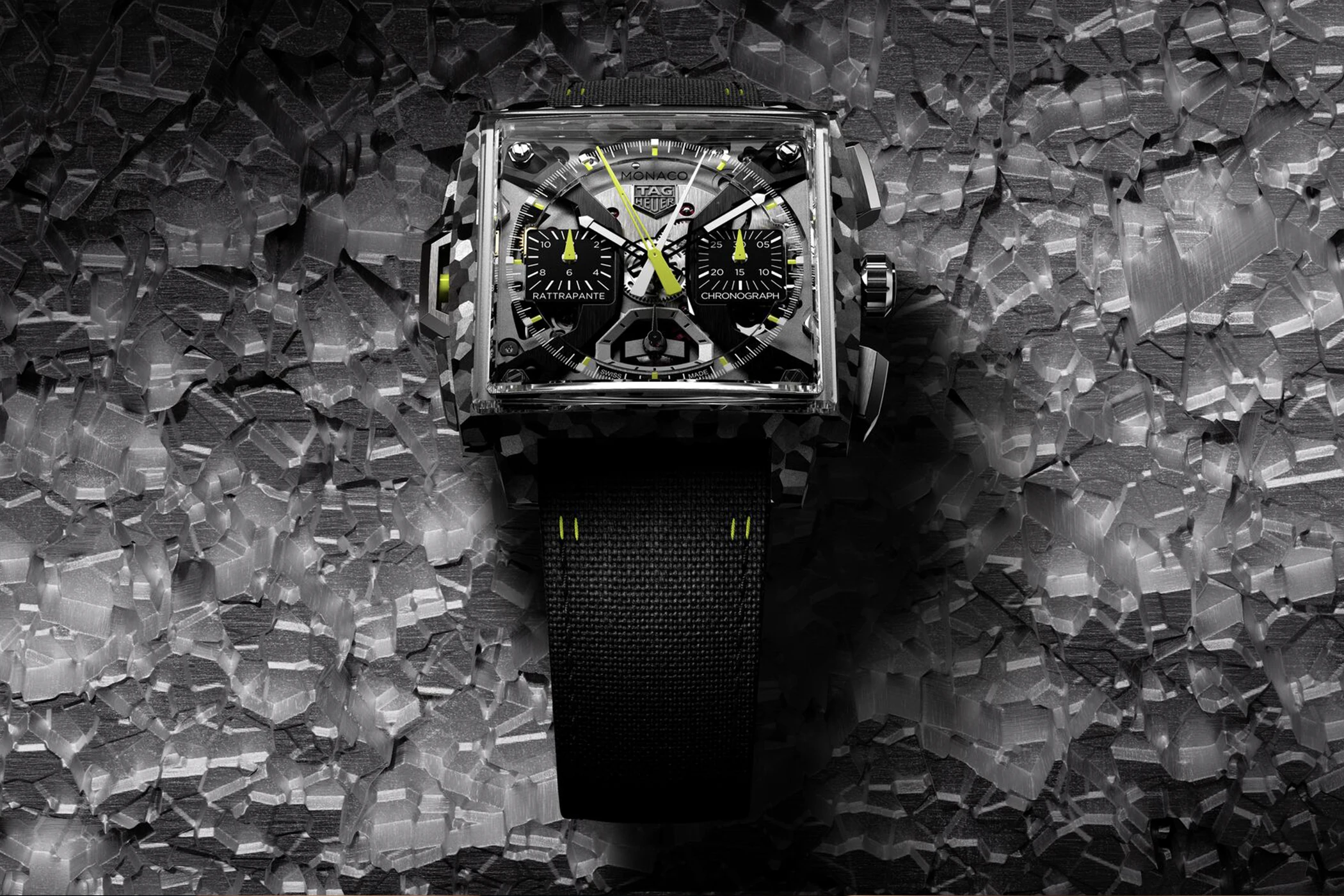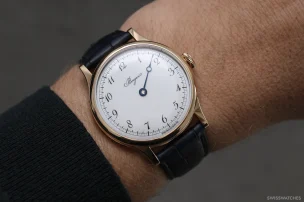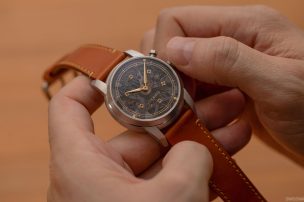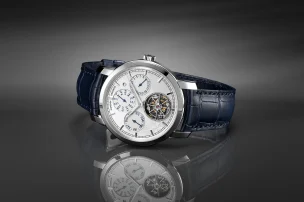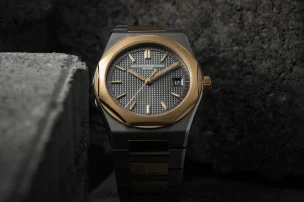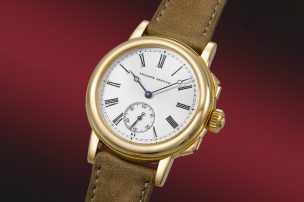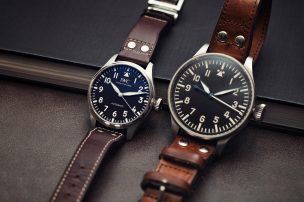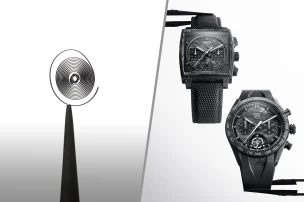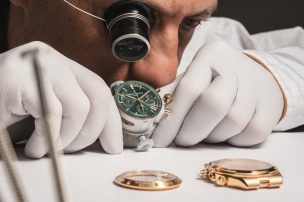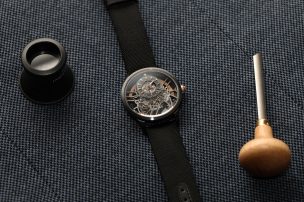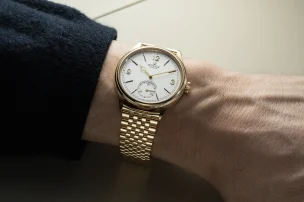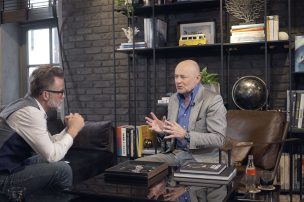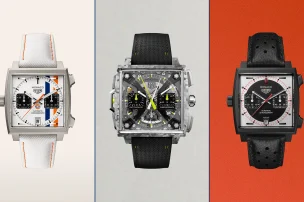
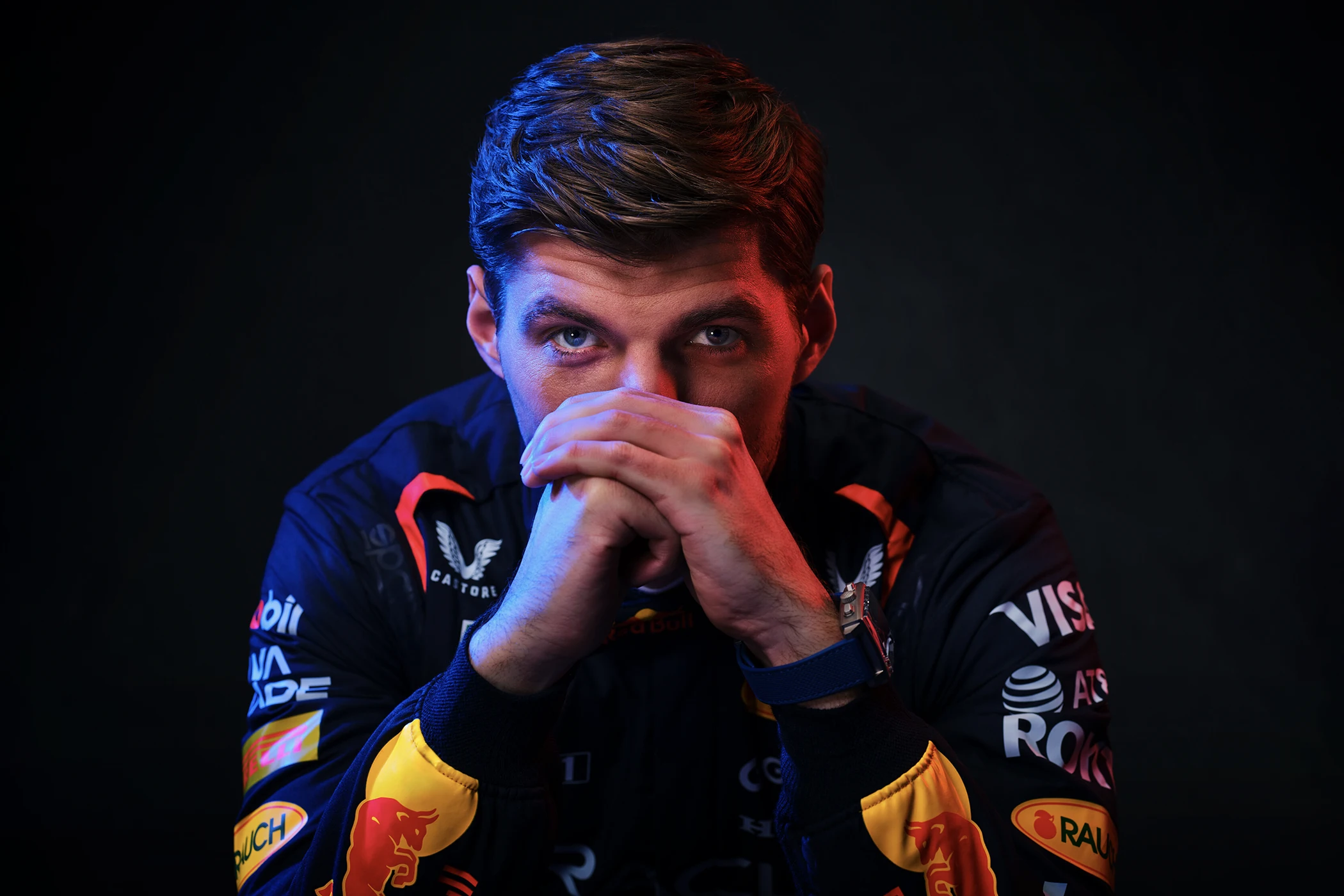
TAG Heuer And Formula 1: The Winning Formula
Next to Ferrari, TAG Heuer is the most successful company in Formula 1 – at least in terms of world championship titles. The impressive history of TAG Heuer and its connection to the great heroes of motorsport.
As soon as the five starting lights on Boulevard Albert 1er turn green at 3 p.m. on 25 May 2025 and the Formula 1 TAG Heuer Grand Prix de Monaco 2025 begins, they will also mark the beginning of a new era in the watch world at the historic race track. In celebration of the racing series’ 75th anniversary, the LVMH subsidiary is not only replacing Rolex, which had been the sponsor for ten years, but is also – for the eighth race of the year – returning to the location whose name is more closely associated with the renowned manufacture than any other. With 239 victories, 613 podium finishes, 9471 points, 11 constructors‘ world championships and 15 drivers’ world championships, TAG Heuer is also the most successful brand ever to be involved in Formula 1.
Return to Motorsport’s Olympus
No one is better placed to judge how emotional TAG Heuer’s return to the pinnacle of motorsport is than Heritage Director Nicholas Biebuyck. Yes, of course, he is paid to take care of the brand’s history, but anyone who has ever spoken to him quickly realises: the man who previously worked for the auction house Christie’s and considers it a compliment to be called a top-class watch nerd doesn’t just live and breathe TAG Heuer – he has been a Formula 1 fan since childhood. In a recent interview, Biebuyck revealed that the first time he cried was when he officially learnt that TAG Heuer would be returning to Formula 1 and the second time was when he was shown the placement of the iconic TAG Heuer diamond logo on the track barriers. TAG Heuer is, therefore, making a big comeback in Formula 1, not just continuing as a partner of Oracle Red Bull Racing but now as a title sponsor. The promotional videos with the slogan ‘We are back’ are everywhere – at least for those of us interested in fine mechanical sports watches, like us at Swisswatches.
The TAG Heuer archive in La Chaux-de-Fonds
If you want to better understand the madness surrounding TAG Heuer and Formula 1, you have to travel to La Chaux-de-Fonds in Switzerland, where the TAG Heuer archive is located. Here, over the past four years and three months (since taking on this role), Biebuyck has done a thorough job of reorganising and preparing his most important treasures for this significant day in the company’s history.
In the high-ceilinged room, which with its white walls and metal filing cabinets feels more like a workshop for expensive racing cars, more than 3,000 watches from the company’s history are stored. Elsewhere, there is a vast archive of documents. Alongside all the valuable watches, you’ll also find helmets from Formula 1 heroes as well as a range of extremely valuable accessories, such as the racing suit Steve McQueen wore in Le Mans.
Biebuyck describes what it means for someone like him that TAG Heuer is back: ‘We are the watch brand of motorsport, we are the watch brand of Formula 1. Of course, there are many other watchmakers who currently want to talk about this topic, but in reality they can’t hold a candle to us when it comes to our heritage. We have earned this pole position over decades.’
That’s a bold statement. Let’s see if it truly lives up to its promise. Let’s take a closer look at the most important watches, but also the most important achievements of TAG Heuer in motorsport timekeeping and, of course, Formula 1. What is this reputation really based on? Since the company was founded 165 years ago, in 1860, and then again in 1880 when the first pocket watch chronograph was produced nearby in St. Imier, TAG Heuer has been (almost) all about motorsport. Biebuyck explains, ‘Since the 1880s, chronographs have been at the centre of what we do. From that time, the focus has been on precision timekeeping instruments.’ Fair enough. This is also intriguing: in the 1950s, during the early years of Formula 1, Heuer even decided to exclusively produce chronographs for wristwatches. Although this approach hasn’t been strictly adhered to over the years, it would be an exciting idea today, as chronographs remain the most popular watch category among collectors.
Early precision time measurement: micrograph and microsplit
When discussing stopwatches and timekeeping at TAG Heuer, one must go back well before the invention of the modern wristwatch. The story begins with a particularly remarkable stopwatch: the so-called Mikrograph and the Heuer Microsplit (the split-second version), which were introduced in 1916. These were predominantly designed for military use at the time (as the impact fuse had yet to be invented, officers manually timed the impact of projectiles). TAG Heuer preserves numerous examples of these early stopwatches in its archives, capable of measuring times with precision down to 1/100th of a second.
Sidekick 1: The limited edition TAG Heuer Monaco Chronograph Stopwatch
Just in time for the race, the company is unveiling a special, limited-edition version of its Monaco chronograph, whose design is inspired by one of the famous later Microsplit stopwatches from the 1970s. The TAG Heuer Monaco Chronograph Stopwatch, limited to 970 pieces, incorporates the design elements of these vintage Heuer stopwatches. The use of black, white, and red – the original Heuer colour palette – establishes a direct link to the timekeeping instruments that once defined precision in motorsport.
The watch features a black, circular layout against an opalescent silver backdrop, creating an intriguing contrast that enhances readability. A red minute scale encircles the edge of the dial, emphasising both the watch’s legibility and its motorsport DNA. Inside beats the legendary Calibre 11, a descendant of Heuer’s first mass-produced automatic chronograph movement, establishing a mechanical connection to the original Heuer Monaco. The straps are made of black perforated calf leather, a nod to the racing gloves worn by generations of drivers. The 39mm case, made from sandblasted Grade 2 titanium with a black DLC coating, ensures a comfortable and stylish fit. At 9,700 Swiss Francs, such a limited-edition piece of a legend is undoubtedly a more than fair price. The watch also pays subtle homage to the first black Monaco chronograph, the so-called ‘Dark Lord.’
From manual stopwatches to dashboard clocks
But let’s return to motorsport: following the era of hand-held stopwatches came dashboard-mounted clocks for early rally drivers. This brings us to the Rally-Master of 1958/59 and its development. Even earlier, in 1911, the first clock to be mounted on a dashboard was the ‘Trip Time.’ With the rise of travel by car and aeroplane, Heuer designed an instrument intended to be installed on the dashboards of these new modes of transport. The ‘Time of Trip’ was a precision chronograph that displayed the time of day on its main dial, while two hands on a smaller subdial recorded the duration of a journey. Using a pusher, the driver or pilot could start and stop this ‘Time of Trip’ instrument to measure, for example, the time taken for a journey.
The watch for drivers and pilots: The first Heuer Autavia
By 1933, this had evolved into what we now know as the Autavia. Heuer introduced the Autavia dashboard instrument in 1933 – a name that would remain in the catalogue for decades and later gain worldwide fame as a wristwatch worn by Formula 1 drivers. The early 12-hour Autavia stopwatch was a dashboard instrument designed to meet the needs of the automotive industry, hence its name: AUT for automobile and AVIA for aviation (from the French word for aviation). The Autavia could be used as a standalone timer or in conjunction with Heuer’s 8-day power reserve clockwork. Drivers, pilots, and athletes chose the instrument that best suited their preferences.
The Jack Heuer and Rallye-Master Era
The real turning point came in 1958 when Jack Heuer, a fourth-generation descendant of the company’s founder, joined the business for the debut of the Rally-Master. It was a combination of the Master Time and the Rallye, initially called the Auto-Rallye and later renamed Monte Carlo.
Heuer and Formula 1: Jochen Rindt as a pioneer
Let’s turn to wristwatches and their connection to Formula 1. When did it all begin? In 1967, the first images emerged of Jochen Rindt wearing a Heuer Autavia in the Formula 1 paddock. Jochen Rindt remains the only Formula 1 World Champion to have been awarded the title posthumously, having tragically passed away during the 1970 Monza Grand Prix. The championship trophy was accepted by his widow, racing driver Nina Rindt, who later became associated with another watch brand, Universal Genève. Rindt was not alone in his preference for Heuer, which at the time was widely regarded as the professional racing driver’s watch, regardless of team affiliation.
Collector’s items and the connection to the Indianapolis 500
Collectors might be particularly interested in the Autavia chronographs with reference 2446 from the first production year in 1962. Other highlights are the watches presented to drivers with the fastest qualifying lap at the Indianapolis 500. As Biebuyck proudly remarked, ‘We are fortunate to have two of these in our museum collection today. Remarkably, I acquired both within a short time, each from the United States.’
Although our focus is on Formula 1, the IndyCar races, particularly the Indy 500 in the US, are also a vital part of Heuer’s history. Since 2004, TAG Heuer has been the official timekeeper and scorekeeper for the event. I had the privilege of attending the 100th Indy 500 race in 2016, an experience that left me awestruck by the sheer scale of the crowd. The 500-mile race, held annually since 1911, is not only one of motorsport’s ‘Triple Crown’ events alongside Le Mans and the Monaco Grand Prix but also attracts more than 400,000 spectators each year, making it the largest single-day sporting event in the world. Interestingly, while winners traditionally receive a Rolex Cosmograph Daytona, the motorsport world boasts enduring traditions with several iconic watch brands.
The Heuer Camaro: A tribute to a special American muscle car
Returning to the 1960s and the early days of Heuer’s association with Formula 1, one detour is worth making: the Heuer Camaro. This chronograph debuted in 1968 with its distinctive cushion-shaped case, silver dial, and tachymeter scale. Its fame is not merely due to its name but its inspiration – the Chevrolet Camaro, which launched the previous year and served as the pace car for the Indianapolis 500. For Jack Heuer, looking to expand the brand’s presence in North America, naming the watch after a muscle car was a natural choice.
Jody Scheckter and the dawn of an era
What makes the Camaro truly special is that it was the same watch worn by South African driver Jody Scheckter early in his career. The rest is history: Scheckter went on to become the 1979 Formula 1 World Champion with Ferrari, proudly bearing the Heuer logo on his car as Heuer was Ferrari’s sponsor back then. It’s worth noting that drivers like Scheckter often wore Heuer watches early in their careers, even before joining major teams.
Credit © Ferrari
Jo Siffert and his connection to Heuer
Finally, we come to Jo Siffert, the Swiss racing driver closely associated with Heuer, who tragically lost his life in 1971 during a race at Brands Hatch in England. The story begins in 1969, just before the launch of the first commercially available automatic chronograph movement. On a golf course in 1971, a friend mentioned to Jack Heuer that Formula 1 driver and Porsche dealer Jo Siffert was seeking sponsorship. Heuer, a motorsport enthusiast, went straight to Siffert’s dealership and struck a deal that would change the brand’s history: for the cost of a Porsche and 20,000 Swiss francs.
Jack Heuer purchased a Porsche 911 from Siffert’s dealership and secured an agreement for Siffert to promote the revolutionary automatic chronograph Calibre 11. The agreement included displaying the Heuer logo on Siffert’s Rob Walker Lotus 49B during the 1969 season. With the Heuer crest on his racing suit and an Autavia reference 1163 with a white dial and new movement on his wrist, Siffert made motorsport history. This marked the first time a watchmaker or luxury brand, outside the traditional automotive supply chain, sponsored a Formula 1 driver and had its logo displayed on a car.
The revolution of calibre 11 ‘Chronomatic’
On 3rd March 1969, CEO Jack William Heuer presented his vision of the future to the astonished global press simultaneously at the Intercontinental Hotel in Geneva and the Copter Club in New York’s PanAm building. The first waterproof automatic chronograph in the world with a micro-rotor movement – a mechanical watch with a stopwatch function that no longer needs to be wound manually. The calibre 11 ‘Chronomatic’ movement used an eccentric rotor to wind the watch’s mainspring. This innovation was a milestone in watchmaking. Even the models worn by Armstrong and Aldrin on the Moon that same summer had to be wound by hand, which presented a significant drawback: stopping the mechanism consumed considerable energy from the mainspring. If the watch wasn’t sufficiently wound, it would often stop mid-measurement, which was about as practical as a phone running out of battery mid-call.
‘Projekt 99’ and the collaboration with Breitling
For over four years, Heuer had secretly been working on this marvel, codenamed ‘Project 99’. Development costs soared, and numerous refinements were necessary. Even Breitling, a competitor, was brought on board. By the time the watch was unveiled, the project had cost an unimaginable 500,000 Swiss francs.
The popularity of Heuer chronographs in Formula 1
Staying on the racetrack: Formula 1 drivers loved these new Heuer chronographs. Consider the Autavia reference 1163. Its standout feature was its Chronomatic movement. The very first production series consisted of only a few hundred pieces. The initial goal was to secure the brand name ‘Chronomatic for Automatic Chronograph’. However, Jack Heuer and his team soon realised that the term was too unfamiliar to resonate with consumers. They decided instead to label the dial ‘Automatic Chronograph’. Breitling, Heuer’s collaborator in developing the first commercially available automatic chronograph, continued using the name ‘Chronomatic’ on some of their dials. Should you come across an Autavia with the ‘Chronomatic’ inscription, seize the opportunity: a standard Autavia in good condition today might fetch 10,000–15,000 US-dollars, while one with the Chronomatic inscription can command 70,000 US-dollars or more – just because of this subtle branding difference.
The legendary calibre 11 and the Monaco
Returning to this milestone in watchmaking history, the legendary Calibre 11 powered the iconic Monaco, which found its way to an even more iconic wrist. The Calibre 11 was a collaborative project between Heuer and Breitling, with Büren producing the micro-rotor base and Dubois-Dépraz – long-time partners on dashboard watch complications – developing the chronograph module. Together, these elements formed the Calibre 11.
Jack Heuer’s initial success captures Hollywood’s attention
In hindsight, Jack Heuer once admitted to me that he had approached the project ‘totally amateurishly’. Yet, it was a resounding success. Hollywood soon took notice.
How a Heuer watch ended up on Steve McQueen’s wrist
In Hollywood, many directors and cinematographers relied on Heuer’s robust stopwatches to calculate film lengths. Little did Jack Heuer suspect that Steve McQueen, an amateur racing driver, was filming a major motion picture about the 24 Hours of Le Mans. What a fortunate coincidence: McQueen, striving for authenticity in his portrayal of his idol and friend Jo Siffert, insisted on wearing Siffert’s watch – the Monaco –alongside a racing suit emblazoned with the Heuer logo, even though McQueen was privately a devoted Rolex wearer.
Credit © Sotheby’s
The link to Steve McQueen’s ‘Le Mans’ film
By 1970, Heuer learned about the film being shot near Le Mans with Steve McQueen. The company found a way to become involved. Biebuyck opened a drawer and revealed, ‘We are incredibly fortunate to own one of the original racing suits from the filming. The amusing story is that after production, the suits were given to a German car magazine for a giveaway. Someone in Germany won it, stored it in an attic, and it resurfaced at an auction in 2017.’ According to Biebuyck, the museum paid approximately 300,000 US-dollars for this original suit.
Monza – another legend
Even though much of this year’s attention revolves around the Monaco – so iconic that TAG Heuer even has naming rights for the Monaco Grand Prix – we shouldn’t overlook its sibling, the Monza. As Biebuyck explains: ‘The Monza is also a crucial icon to us.’ Heuer launched the Monza in 1975 to commemorate Niki Lauda’s sensational first championship win for Ferrari. Ferrari had endured a tough spell, with their last title win in 1964. Enzo Ferrari had essentially fired the entire team in 1970 and begun building his own test track. In 2016, the Monza made a triumphant return for its 40th anniversary, reimagined as a black titanium-carbide-coated watch featuring the Calibre 17 movement.
How Heuer became a Ferrari sponsor
When the film Le Mans premiered in 1971 (Heuer had supplied crates of equipment to the set), Jack Heuer was already planning his next move. He happened to learn that racing driver Gianclaudio ‘Clay’ Regazzoni was looking for bespoke electronic timing equipment for the 24 Hours of Le Mans and Ferrari’s Maranello test circuit. Enzo Ferrari no longer trusted outdated manual timing methods. That same year, Jack Heuer signed the best contract of his career: Heuer became the official timekeeper of Scuderia Ferrari, and remarkably, it didn’t cost a single extra franc – well, almost.
Heuer and Ferrari: A partnership in timekeeping
In 1971, Heuer became Ferrari’s official partner for timekeeping, initially at the Fiorano test track and later worldwide, alongside legendary expert Jean Campiche. Campiche, often seen in vintage footage involving Heuer timekeeping, had trained as an electronics engineer in Lausanne and developed a passion for motorsport. Between 1969 and 1972, he competed in the Motorcycle World Championship, funding his racing seasons himself. However, racing without sponsors was nearly impossible. Seeking a well-paid job, he came across an opening at Heuer for a timekeeper with strong PR skills, willing to travel the world and work for an undisclosed racing team.
Jean Campiche and timekeeping at Ferrari
In 1973, Campiche embarked on the adventure of a lifetime, joining Scuderia Ferrari. Heuer hired him at the specific request of Enzo Ferrari, who was fiercely competitive and wanted to enhance the number of timed intervals at Fiorano to improve the performance of his single-seaters. With Heuer’s help, Ferrari’s private track was fitted with 45 photoelectric cells, enabling the measurement of split times within a lap, especially during acceleration and braking. At a time when official timing methods were far from perfect, Heuer’s systems delivered superior precision.
Heuer used devices like the Centigraph, capable of measuring times to 1/1000th of a second. This system allowed Ferrari to track multiple cars simultaneously, displaying the number of laps, last lap time, and total time, which could then be printed in real-time. Campiche remained with Ferrari until 1986.
TAG Heuer becomes official timekeeper of Formula 1 for the first time
When TAG Heuer became Formula 1’s official timekeeper in 1992, Campiche assumed overall responsibility for timekeeping, drawing on his two decades of experience. He leveraged innovations from La Chaux-de-Fonds, changing the way motorsport timings were recorded. He improved timing instruments, integrating them with radios, computers, and vehicle-mounted transponders year after year.
Let’s not forget: The Heuer Silverstone
Back to watches: the Heuer Silverstone was launched in 1974 with a revolutionary case design. Nothing in the 1970s was as cool as TAG Heuer watches. For its 150th anniversary a decade ago, the company revisited this wild era by reissuing the ‘Silverstone’, a stainless steel automatic chronograph that looked as though Apple designer Jonathan Ive had worked in the seventies.
The launch of the Monza to celebrate a very special world championship title
When Niki Lauda became Ferrari World Champion in 1975, Heuer, one of Ferrari’s key partners, decided to launch the Monza. With its cool design, one could bet that the watch might make its comeback as it already has in various iterations over the years.
Most recently, TAG Heuer introduced the TAG Heuer Monza Flyback Chronometer at the LVMH Watch Week in 2023 – a modern reinterpretation of the classic. The original wasn’t a high-end luxury piece: it featured a simple dial, an affordable brass case in a Carrera shape, and a simplified Calibre 15 movement (a pared-down version of the flagship Calibre 12). However, it had two distinctive features: it was one of the first watches fully coated in black PVD, and its black look, combined with red and white details and perfectly asymmetrical sub-dials, gave it a mysterious allure.
Before 2023, the Monza name had been revived twice: in 2000 for its first reissue (without the black PVD coating) and more successfully in 2016 at Baselworld, which saw the return of the original design.
How did the illustrious connection between Ferrari and Heuer in Formula 1 come about?
Timekeeping in Formula 1 at the time used devices resembling old typewriters. Heuer’s archives contain a set of such equipment, including the HL 205, which resembled the Le Mans Centigraph. These devices were pivotal because Heuer and Ferrari initiated a technical partnership, starting with timekeeping for Fiorano and later for endurance races and Formula 1.
Heuer’s special timing devices for Ferrari
What made these devices special was that Heuer developed them exclusively for Ferrari. Biebuyck emphasised that Heuer was far more than just a watch sponsor for Formula 1 celebrities: ‘This was a device already used in industry with 1/1000th second accuracy. At the track, three or four were in use, and Jean Campiche was nicknamed ‘the pianist’ because it looked like he was playing a piano as he pressed many buttons simultaneously.’
The Automatic Car Identification Timing System
In 1974, Heuer developed the Automatic Car Identification Timing System, which enabled real-time tracking of race cars for the first time. However, it wasn’t until 1992 that a production version of the system was deployed by TAG Heuer. For the next 12 years, this system served as the official timekeeper at all Formula 1 races.
Negotiations with Enzo Ferrari
The wristwatches followed the timing systems. According to Biebuyck, Enzo Ferrari was a tough negotiator when Jack Heuer sought to partner with him. Biebuyck recalled: ‘Enzo didn’t just want the equipment for free. He thought drivers were too expensive and demanded that Heuer pay each driver 25,000 dollars upfront.’ Jack Heuer recognised that this wasn’t a good deal and countered: ‘The Heuer logo must appear on the cars, then you’ll get the equipment for free. The logo must also go on the suits, and then I can work with the drivers.’ But Jack’s savvy didn’t stop there. According to Biebuyck: ‘He also insisted the drivers visit Heuer in Switzerland, tour the factory, sign a contract, and instead of cash, each would receive a solid gold Heuer Carrera.’
The Heuer Carrera Reference 1158 and its famous wearers
This brings us to the Heuer Carrera Reference 1158. Naturally, the Carrera – specifically the Carrera Chronograph – is another Heuer legend. Introduced in 1963, it remains an icon of watchmaking history. For Jack Heuer, then technical director, the design of the dial and case was paramount. The watch’s domed dial was particularly innovative, using the tension ring inside the case to display a fifth-of-a-second scale. This extended the visible diameter of the dial by nearly two millimetres.
The watch reportedly earned its name after Jack Heuer, while timing the 12 Hours of Sebring race, heard a driver mention the Carrera Panamericana in Mexico – a name that eventually inspired the model. The Carrera was crafted in numerous variations, including the Carrera 45 with a 45-minute scale, the Carrera 45 and 12 Dezi models with a hundredth-minute scale, and a groundbreaking model: the Carrera 45 Dato, featuring a date window displayed on a single disc. When the Chronomatic was launched, it introduced the new Calibres 11 and 12, identifiable by their crown shifted to the left. This marked the birth of a model gifted to Formula 1 drivers. The Carrera’s production ceased in 1986, but its comeback in 2000 under LVMH was delayed due to trademark issues. The Carrera’s laid the foundation for TAG Heuer’s entire range of motorsport-inspired sports watches.
For Formula 1 drivers, it was available in three gold versions: with a silver dial, a champagne-coloured dial, and a third, one of Biebuyck’s favourites. ‘Jack Heuer gave these watches to Ferrari drivers’, Biebuyck recalls, though many others wore them as well. These included Swedish driver Ronnie Peterson, vice-champion in 1971 and 1978; Belgian driver Jacky Ickx; American Mario Andretti, world champion in 1978; and Swiss vice-champion Clay Regazzoni in 1974. Not just Biebuyck, but fans among top drivers were impressed: ‘We have photos of all these guys wearing the watches. Often, Jack Heuer had messages engraved for them, such as ‘For Ronnie’ or ‘Thanks for your support’. One fascinating story is about Mike Hailwood, who wasn’t a Ferrari driver but saved Regazzoni’s life by pulling him from a burning car. Jack Heuer gave Hailwood a gold watch with a unique engraving: ‘Good luck for the coming season.’
Still doubting the credibility of Heuer’s connection to Formula 1?
Still doubt Heuer’s link to Formula 1? The golden Carreras became synonymous with success. Bierbuyck recalls a conversation he had with Derek Bell, the British driver with five Le Mans victories, ‘He once admitted he had begged Jo Siffert for a discount on a gold Carrera because he had desperately wanted one.’ Everyone in the paddock wanted this watch. For example a lesser-known driver like the Italian Vittorio Brambilla, who was called the ‘Gorilla of Monza’, not only because of his physique, but also because he managed to survive over 40 accidents in one season, cherished the watch. He purchased his gold Carrera with an engraving on the back, but it was from his father for his son, to whom he gave it. Biebuyck recounts, ‘It was really a great pleasure when I was able to add this watch to the museum collection and get to know his son Carlo quite well. Now we also have this fantastic piece of motorsport history with us.’
The merger of Heuer and TAG
How did the names Heuer and TAG come together? TAG (Techniques d’Avant Garde) was a Luxembourg-based electronics group known for financing a Porsche turbo engine that helped McLaren dominate Formula 1 in the mid-1980s. Founded in 1975 by Akram Ojjeh, a Syrian-Saudi entrepreneur, TAG embodied innovation and motorsport excellence.
Despite successes: Caught in the middle of the quartz revolution
In 1979, Heuer faced tough times amidst the quartz revolution. Jack Heuer had taken every step to modernise the brand but struggled against macroeconomic challenges: we are in the middle of the quartz revolution. To be fair, it was precisely at this time that Jack managed to achieve success with the production of quartz watches. The Heuer Chronosplit wristwatch was also launched in 1975. We only mention it here to refer back to motorsport as this was a watch made especially for Ferrari. Biebuyck also shows us the personal watch Jean Campiche had donated to the museum.
Decline under Heuer and takeover by a well-known player: Piaget
Eventually, Heuer’s quartz watches weren’t enough to stave off difficulties. In 1982, this culminated in a backroom deal that saw Heuer being forced out of the company by a CFO and Yves Piaget take control. Piaget leveraged Heuer’s distribution network and introduced Lemania movements, which he co-owned.
Sale to TAG and the creation of TAG Heuer
In 1985, the sale to TAG unfolded under remarkable circumstances. Biebuyck explains, ‘In 1985, Yves Piaget was supposedly sitting in an aeroplane next to this guy he knew. It was the entrepreneur Akkram Ojjeh. He is said to have told him: I would really like to see the three letters of my conglomerate, TAG, meaning Technique Avantgarde, on a European luxury brand. TAG had just bought the McLaren team and had been active in Formula 1 with Williams since the 1970s. So, Yves Piaget is said to have told him: If you own a Formula 1 team, I have an opportunity for you. I happen to own the Heuer brand, which is synonymous with motorsport and timekeeping. Why don’t you buy Heuer and call it TAG Heuer?’
In 1985, as they sat in Geneva negotiating the deal, they were reportedly somewhat indecisive. Then, someone allegedly sketched the red Heuer crest with the Swiss colours and placed the TAG logo on a green background – a green that, of course, symbolised the colours of Saudi Arabia, the adopted home of the Ojjeh family.
Innovating with the Easy Rider
It was not the future the Heuer family had envisioned, but it was undoubtedly a significant opportunity, as TAG was a highly innovative company. Following this, TAG Heuer became fundamentally focused on innovation. At the time, the company was celebrating its 125th anniversary, although it was going through a challenging period. Coincidentally, Heuer had already started developing a revolutionary new watch in early 1985. Similar to Swatch, which was introduced in 1983, the goal was to create an affordable mechanical entry-level watch.
The future: Affordable mechanical watches or quartz watches?
This, however, was far from Heuer’s first attempt at affordable watches. Let us take a step back: we are talking about the Easy Rider, one of the first composite watches to go into production. Why is this relevant to the Formula 1 story? The first version of this watch was the Jacky Ickx Easy Rider featuring a chrome-plated case. The dial bore the name ‘Jacky Ickx’ and was available in blue, red, black, or white. The Jacky Ickx version of the Easy Rider also had a date display at the 3 o’clock position. It is striking that the brand name ‘Heuer’ was not found on any of the Easy Rider chronographs. Instead, the ‘Jacky Ickx’ model bore only the racing driver’s name on the dial, while the models with fibreglass cases displayed only the name ‘Leonidas’. Heuer had acquired Leonidas in 1964, but had largely abandoned the name – it only lived on on the dials of the Easy Rider models. This suggests that Heuer did not want to compromise the perception of the quality of its existing range with the cheaper and lower-quality Easy Rider watches.
The Easy Rider – Unfortunately, a false start
Named after the film, the Easy Rider was powered by the EB8420 hand-wound pin-lever chronograph movement, manufactured by Ebauches Bettlach, a company that belonged to ETA. Pin-lever movements are typically found in relatively inexpensive alarm clocks or kitchen timers. Unlike the anchor escapements used in most modern chronographs, this system utilised vertical metal pins. While this type of movement was much simpler and cheaper to produce, the metal pins generated far greater friction and wore out more quickly. As a result, the Easy Rider chronograph suffered from a lack of reliability, especially among customers accustomed to the dependability of traditional Heuer movements, such as the Chronomatic introduced in 1969 or the Valjoux movements that Heuer had used since the 1930s. Another key difference with the EB8420 movement used in the Easy Rider was that Ebauches Bettlach did not provide replacement parts for it. Instead, the ‘standard process’ was to replace the entire movement in case of a problem.
Nevertheless, the brightly coloured Easy Rider was a pioneer in watch design. Interestingly, while many may associate the recently relaunched Formula 1 quartz watch from TAG Heuer as the first colourful Formula 1 watch, it was actually the Jacky Ickx Easy Rider from 1971 that held this title.
The connection between Jacky Ickx and Heuer
Why did Jacky Ickx lend his famous name to an affordable entry-level watch? In 1971, Jackie Ickx was still part of Ferrari’s endurance racing team. He was young, charismatic, good-looking and well-dressed, but not yet a Formula 1 hero. Jack Heuer thought: hang on, the rookie driver is the perfect face for an entry-level watch. So, they struck this deal. The plastic packaging was shaped like a miniature racing helmet. The watches were sold by the thousands, but Biebuyck knows: ‘Within a year, the return rate was as high as 50 percent because, as mentioned earlier, the movements simply weren’t good enough.’
A temporary solution: helmet-shaped table clocks
The idea was good, but the technology wasn’t advanced enough at the time. Since the moulds for the packaging were already available, Heuer repurposed them to create helmet-shaped table clocks. These table clocks, featuring flip-up helmet visors, were produced with designs honouring numerous racing legends such as James Hunt, Clay Regazzoni, Jo Siffert, Niki Lauda, and Alain Prost. They have been listed in the catalogue since 1975.
The birth of Formula One
Heuer already knew, even before the launch of the Formula One collection in 1986, that an entry-level composite watch could be successful. It was the first collection to be released under the unified name TAG Heuer and remains the most produced watch in TAG Heuer’s history, with three million units sold over the next decade. It was a significant commercial success. Biebuyck dismisses the idea that the watch was a response to the colourful quartz Swatch, which was gaining immense popularity at the time: ‘We recently learned that the target audience was actually surfers in Los Angeles. It had nothing to do with Swatch but was instead aimed at appealing to individuals in the US who wore Casio G-Shock composite watches.’ Last year, this collection was reintroduced in collaboration with the American fashion label SITH.
Biebuyck’s absolute favourite is the limited edition created for Ukyo Katayama, the Japanese Formula 1 driver who started with the Venturi-Larrousse team in 1992. It appears as though it has been bathed in a rainbow: a blue dial, green bezel, yellow case, red strap, and Ukyo’s yellow signature on the glass. Even for Biebuyck, who usually focuses on mechanical masterpieces, the historical success of quartz watches is striking: ‘A few years ago, these watches might have cost 300 dollars; today, they fetch upwards of 2,000 dollars.’
S/el: New models under new leadership – the Senna era
On 1 January 1986, Techniques d’Avant Garde (‘TAG’) acquired the company Heuer. This marked the origin of the TAG Heuer name and logo, both of which are still in use today. But what happened between 1980 and the first sponsorship of the entire Formula 1 championship in 1992, alongside the aforementioned Formula 1 collection? Naturally, it involves a watch and a Formula 1 legend: Ayrton Senna and the S/el, later renamed the Link. The S/el was a great success for TAG Heuer in the 1990s and was renamed the Link in 1999. As such, the S/el was the first chronograph collection introduced by TAG Heuer, and it remains part of the catalogue to this day. The late Brazilian Formula 1 legend Ayrton Senna, who died in a Grand Prix accident in 1994 and is regarded as one of the greatest drivers of all time, owned and wore a steel-and-yellow-gold TAG Heuer S/el Split Seconds Chronograph. The story behind this watch is that Senna promised to exchange his watch with a mechanic if he won the 1993 Formula 1 World Championship. Although Senna didn’t win, he gifted the watch to the mechanic anyway. The name ‘S/el’ is derived from ‘Sports Elegance’ and was designed by Eddie Schopfer, the same man who had created the 2000 Series for Heuer. The collection was one of the first watch series explicitly incorporating the ‘Six Features’ that characterised TAG Heuer divers watches in the 1990s: water resistance to a depth of 200 metres, a screw-down crown, a double safety clasp on the bracelet, a unidirectional bezel, sapphire crystal, and luminous elements on the dial, hands, and bezel. Incorporating these ‘Six Features’ gave TAG Heuer watches a distinctive appearance, with the same features later integrated into the 4000 Series introduced in 1990.
Partnership with Ayrton Senna and Michael Schumacher
Then sponsored by TAG Heuer, Senna joined McLaren in 1988. It was his first season, and he immediately won the world championship in his MP4/4, the most successful chassis in Formula 1 history. The Senna or S/el watches are well known: today, some watches from the TAG Heuer Museum appear in the Netflix series dedicated to the exceptional racing driver. For Biebuyck, this model epitomises the magical influence TAG Heuer has always had on drivers: ‘Senna started driving for McLaren in 1988, and by 1989, he was already wearing an S/el. However, in 1993, he decided to leave McLaren and join Williams. So, we struck an individual deal with him, and during this process, we wondered which other young, up-and-coming drivers we might collaborate with. That’s when we came across a young German driver named Michael Schumacher, and we thought: OK, let’s sign a contract with Michael.’
Rare luck or a twist of fate?
Thus, the contract was drawn up. No one could have known that Senna would tragically pass away, and Heuer had already secured a deal with his successor. Michael Schumacher went on to win the 1994 world championship. Biebuyck recounts, ‘At the end of the season, Schumacher decided to gift something to the people who had supported him: his agent, his team, and others. A special series of 28 watches from the 6000 model line was produced. The dial displayed the 1994 F1 championship, and Schumacher’s signature was engraved on the caseback.’ Remarkably, although Michael Schumacher later became associated with Omega and even Audemars Piguet, his legendary journey began with TAG Heuer.
The magical era of Formula 1 – TAG Heuer in the thick of it
TAG Heuer’s ‘Don’t Crack Under Pressure’ advertising campaign, launched in 1989, featured Formula 1 superstars such as Ayrton Senna. It is considered one of the most iconic campaigns in the history of watchmaking, comparable to Patek Philippe’s renowned ads. It was CEO Jean-Claude Biver who reintroduced the campaign in 2016, adding a hashtag before the slogan. For the late legend Senna, the hashtag #RememberSenna was introduced.
TAG Heuer had reached its zenith: two years before the deal with Schumacher, in 1992, TAG Heuer signed an agreement to become the official timekeeping partner of Formula 1. The 1990s remain a magical era for Formula 1, marked by the 10-cylinder engines and the fierce rivalry between Michael Schumacher and Mika Häkkinen. Häkkinen, who drove for TAG Heuer’s partner McLaren, was also under contract with TAG Heuer. Alongside Senna and others, he became a brand ambassador for the famous ‘Don’t Crack Under Pressure’ campaign. Formula 1 roared across the globe: the legendary V10 engine was renowned for its high RPM and powerful sound, playing a key role in many spectacular races from 1996 to 2005. The final generation of V10 engines in Formula 1 reached up to 20,000 RPM and produced an incredible 140 decibels. Biebuyck recalls, ‘You know, the sound of those V10 engines was simply magical. The fact that our logo was on screen as these guys won races and battled for victory remains unparalleled to me.’
Jack Heuer’s vision: the thrill of timekeeping on every television set
In conclusion, sponsorship has never been merely about showmanship but fundamentally about timekeeping. It aimed to bring the excitement of thousandths of a second to life for television viewers. As early as the mid-1970s, Jack Heuer and his timekeeping team realised that fans at the racetrack often needed a stopwatch around their necks to time the laps of their favourite drivers. Biebuyck describes this as ‘an incredibly esoteric way to engage with the sport’. Thus, the concept of live timekeeping on the track was born. Heuer understood the potential: there were digital timekeeping displays for the pit lanes, TV screens transmitting data to team management, and the possibility of broadcasting this information to a global audience via television. Biebuyck recounts the story, ‘By the mid-1970s, Jack and Jean travelled to Belgium with a massive Olivetti data-processing computer in a caravan, along with all their timekeeping devices. They demonstrated this setup to the FIA and Philip Morris, the cigarette manufacturer funding Formula 1 at the time, and said, “Look, this is the future. If you want a wider audience to engage with motorsport, the entertainment lies in timekeeping.”’ Today, this idea is central to the excitement of watching a Formula 1 race.
2008: Lewis Hamilton also wears Heuer watches
In 2008,we witnessed the rise of one of motorsport’s greatest talents, Lewis Hamilton. Competing with McLaren under Ron Dennis, what watch did Hamilton wear during his first season? A TAG Heuer Formula 1. Specifically, it was an orange Formula 1 chronograph. Biebuyck proudly owns the original, saying, ‘I was fortunate enough to acquire it from the mechanic to whom Hamilton gifted it.’
A new Formula 1 partnership after 30 years: Red Bull Racing
In 2014, Jean-Claude Biver became TAG Heuer’s CEO. By 2016, TAG Heuer and Red Bull Racing had formed a partnership. A relatively under-discussed watch in this context is the first Carrera Red Bull Racing Chronograph, featuring the in-house Heuer 01 chronograph calibre. Launched in 2016, the watch bore Red Bull’s colours and the Red Bull Racing Team logo on the caseback. This marked an emotional chapter for TAG Heuer: after a 30-year partnership with McLaren, the brand joined forces with Red Bull Racing in 2016, accompanying the team to several championships.
2017: Formula 1 reinvents itself
In January 2017, Liberty Media completed its acquisition of Formula 1 for approximately 4.4 billion dollars, with the championship’s value now estimated at around 20 billion dollars. Under Liberty Media’s ownership, Formula 1 has transformed into one of the world’s most culturally influential and successful sporting championships. It boasts 750 million fans globally, over 90 million social media followers, and a fanbase that is increasingly younger and more diverse: 42% of fans are now women, and one in three is under 35. In the 2024 season, 1.5 billion viewers witnessed an epic year, culminating in a nail-biting battle between McLaren and Ferrari for the Constructors’ Championship, which was decided in Abu Dhabi.
All Formula 1 legends wore TAG Heuer watches
What stands out is that all of Formula 1’s greatest talents, from Senna to Schumacher, Lauda, Prost, and now brand testimonial Max Verstappen, are linked to the history of TAG Heuer. As Biebuyck puts it, ‘We are motorsport, we are Formula 1, and we are back where we belong’. TAG Heuer remains one of the most successful brands in motorsport, second only to Ferrari in terms of victories.
2003–2025: Departure and Comeback
In 2003, TAG Heuer’s 11-year tenure as the official timekeeper of Formula 1 came to an end. LG Electronics took over in 2008, followed by Rolex in 2013. Now, after a 22-year hiatus, TAG Heuer returns to Formula 1 as the official timekeeper for the next 10 years.
The most important TAG Heuer novelties for the launch
It comes as no surprise that at this year’s Watches and Wonders event, TAG Heuer celebrated its new partnerships extensively. Highlights included the return of the Formula 1 Solargraph, featuring a solar-powered quartz movement, and the reintroduction of the Beads of Rice bracelet option for the Carrera. Notably striking was the white Monaco with a ceramic case and a rattrapante movement.The TAG Heuer Monaco Split-Seconds Chronograph F1 features the Calibre TH81-00, an automatic movement with split-seconds.
Though Swisswatches typically avoids quartz watches, even Jack Heuer, a lifelong enthusiast of electronics (now living in retirement in Switzerland), would likely have appreciated the new Formula 1 Solargraph. Powered by sunlight or artificial light, its battery can recharge in two minutes of direct sunlight for a day’s operation. A full charge, achieved in under 40 hours of sunlight, provides up to ten months of use without light. Even when stopped, exposure to a light source for just ten seconds is sufficient to restart it. The battery has a lifespan of 15 years and is replaceable.
Three Monaco special-editions
Today, three Monaco variants were unveiled for the Monte Carlo Grand Prix: the aforementioned TAG Heuer Monaco Stopwatch, another rattrapante chronograph with a carbon fibre case, and the Steve McQueen edition, featuring the original case size of 39 mm (rather than the 41 mm rattrapante models) in collaboration with GULF Oil. This model sports the iconic orange-and-light-blue colour scheme, with a Grade 2 titanium case and the updated Calibre 11 movement.
Could Formula 1 get any more thrilling? Perhaps. While collectors adore TAG Heuer chronographs, they might wish for the return of mechanical Formula 1 watch legends like the Monza, Silverstone, and others to the series (though the Heuer Daytona understandably remains retired). The rest are still racing towards victory.
